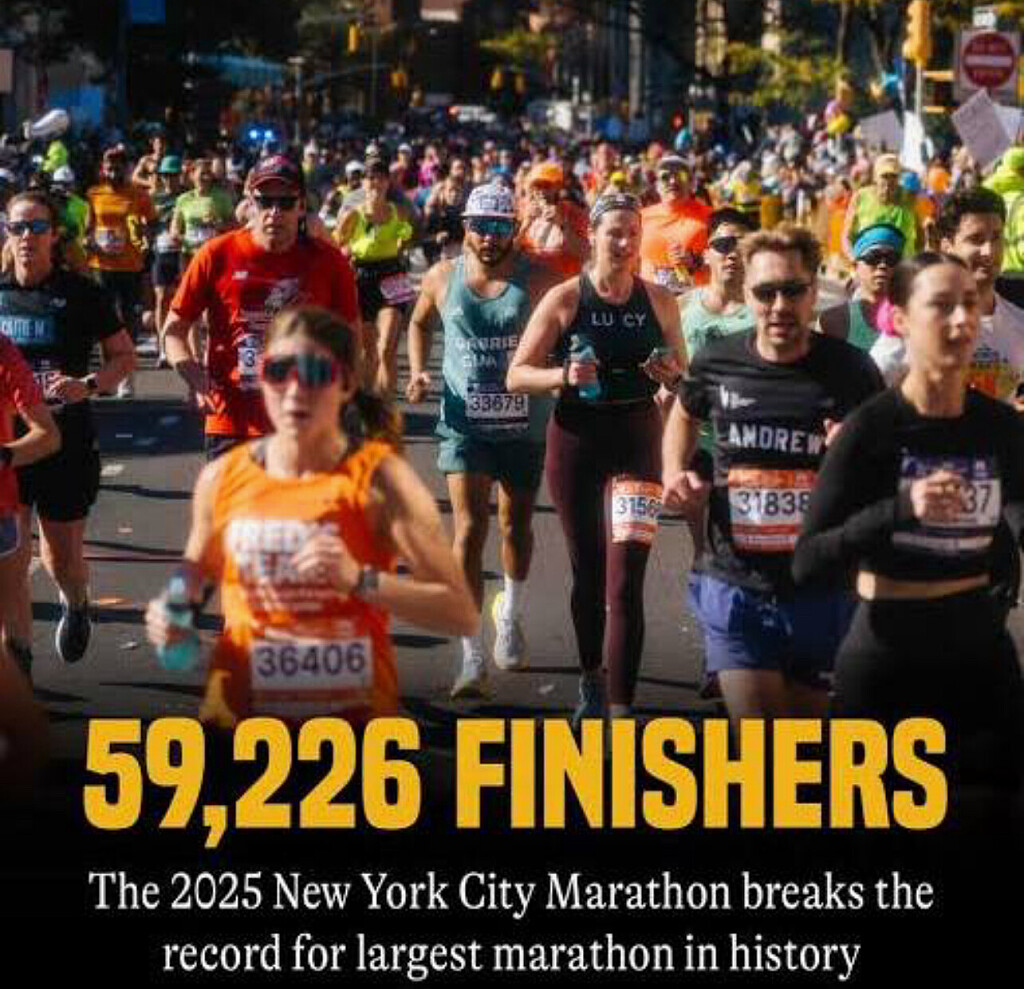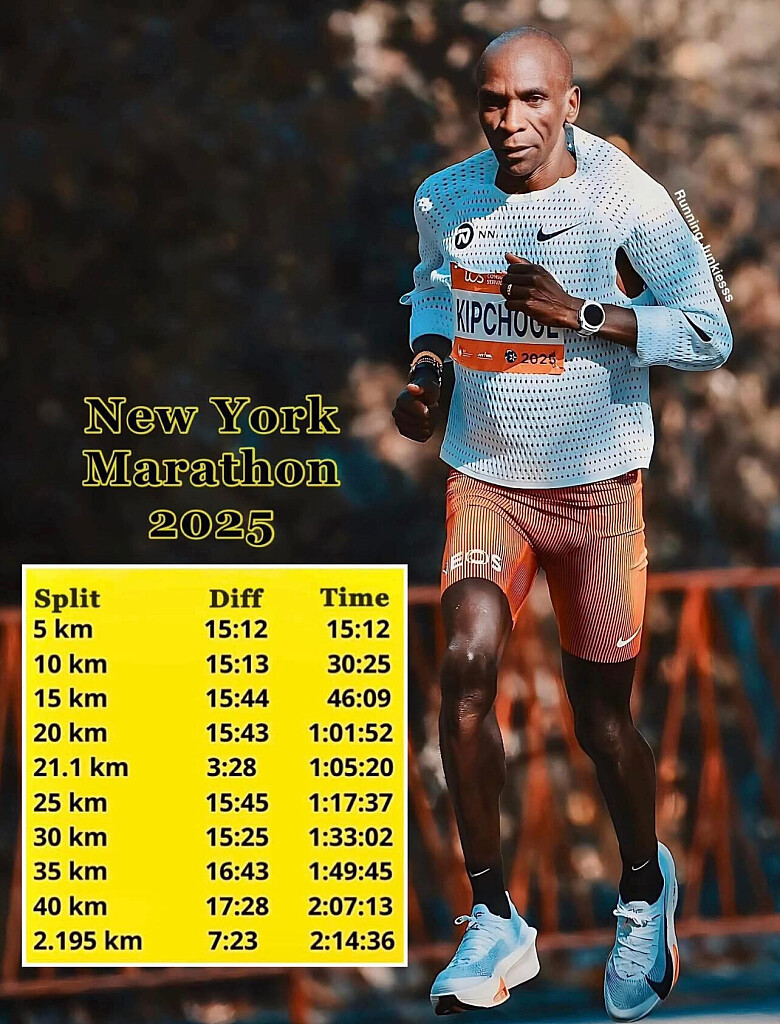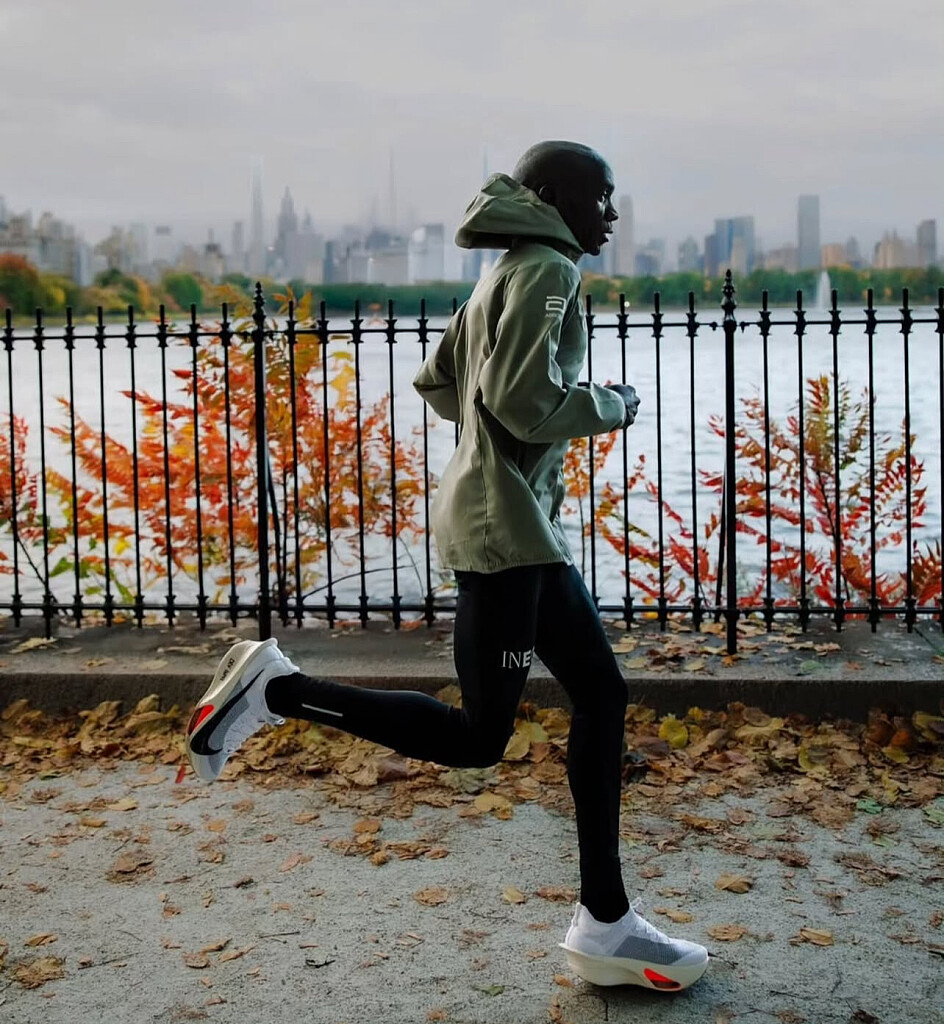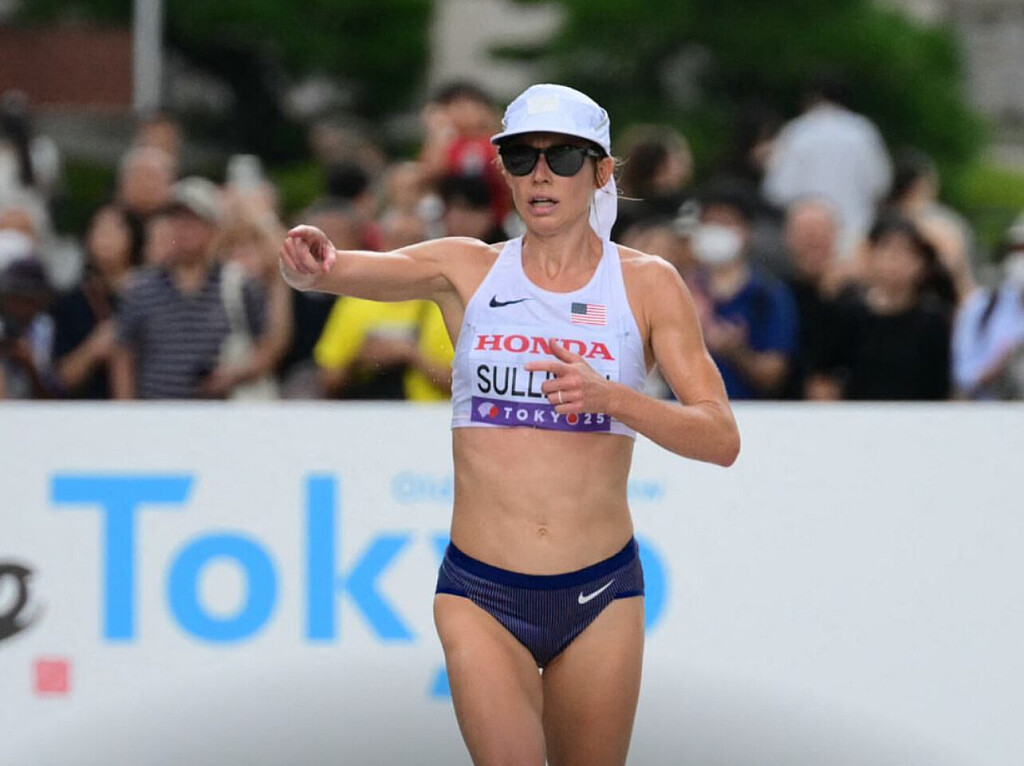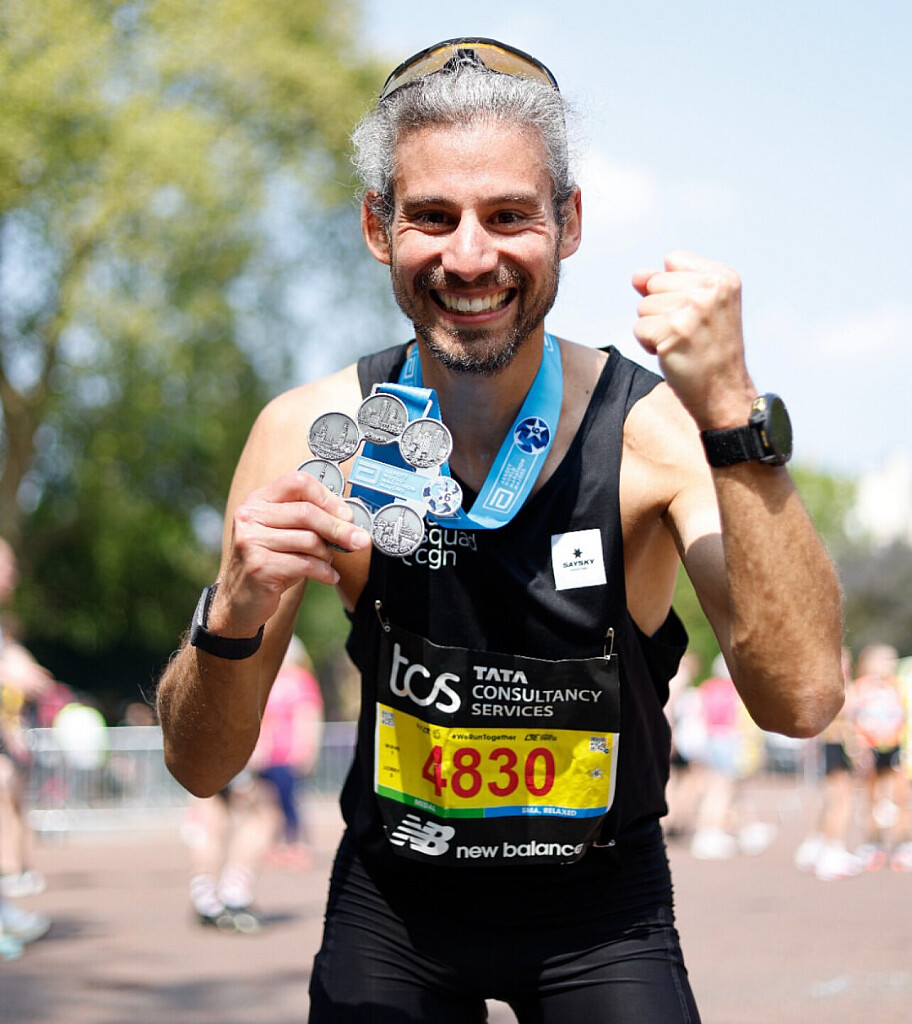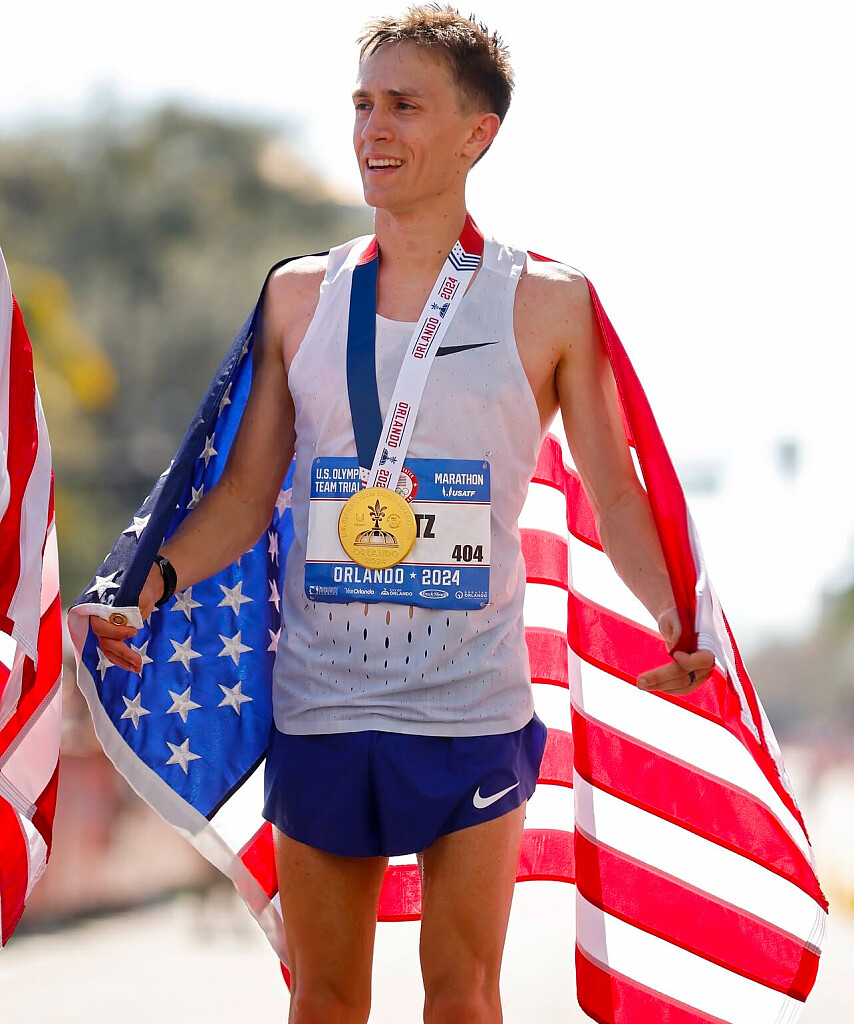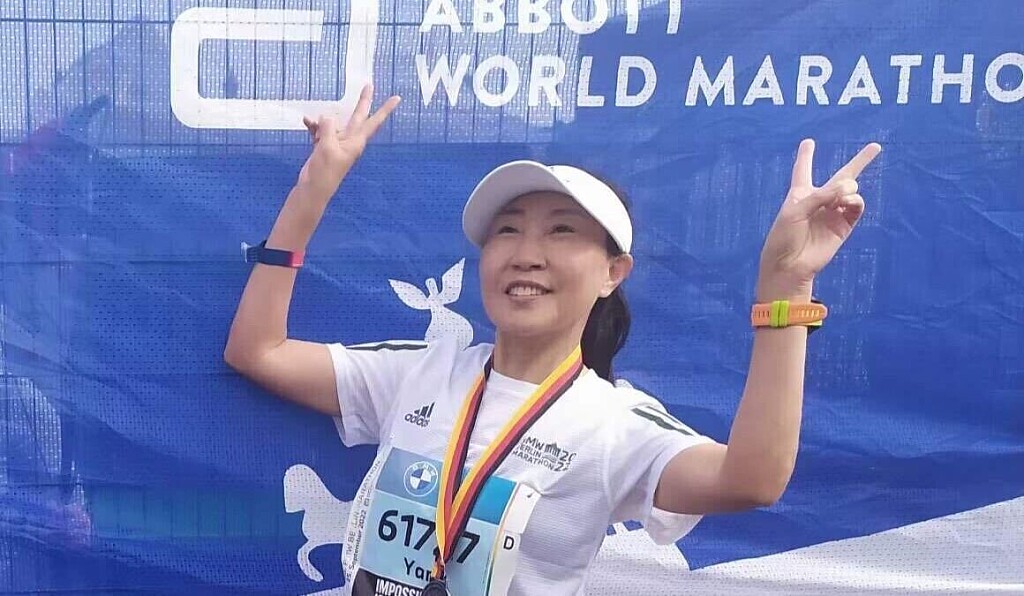Running News Daily
Running News Daily is edited by Bob Anderson. Send your news items to bob@mybestruns.com Advertising opportunities available. Train the Kenyan Way at KATA Kenya and Portugal owned and operated by Bob Anderson. Be sure to catch our movie A Long Run the movie KATA Running Camps and KATA Potato Farms - 31 now open in Kenya! https://kata.ke/
Index to Daily Posts · Sign Up For Updates · Run The World Feed
Articles tagged #New York City Marathon
Today's Running News
How One Tribe in Kenya Came to Dominate Global Distance Running
There may be no statistic in all of sports more astonishing than this one.
The Kalenjin, an ethnic group—often referred to as a tribe—in Kenya, make up about 13.4% of the country’s population, roughly 6.3 million people. On a global scale, they represent about one out of every 1,000 people worldwide.

Yet this small community has produced an overwhelming share of the world’s greatest distance runners.

Their dominance has been so complete, and so sustained, that it has been described as “the greatest geographical concentration of achievement in the annals of sport.” And it is hard to argue otherwise.
From the Rift Valley to the World Stage
Most elite Kalenjin runners come from Kenya’s Rift Valley region, particularly areas such as Nandi, Elgeyo-Marakwet, Uasin Gishu, and Baringo, where elevations range from 2,000 to 2,400 meters (6,500–8,000 feet) above sea level.
Here, running is not a hobby—it is part of daily life.
Children grow up walking and running long distances, often on dirt roads. Training at altitude is the norm, not a strategy. And success stories are local and visible, creating a powerful cycle of belief and opportunity.
Champions Across Eras
The Kalenjin impact on global athletics stretches back more than half a century.
Kipchoge Keino, one of the pioneers of Kenyan distance running, won Olympic gold in the 1500 meters at the 1968 Mexico City Games and the 3000-meter steeplechase in 1972, helping place Kenyan runners on the world map.
Since then, Kenyan athletes—many of them Kalenjin—have dominated:
• The 3000-meter steeplechase, winning Olympic gold in nearly every Games since 1968
• The 5,000 meters and 10,000 meters at World Championships
• The marathon, particularly at the World Marathon Majors
Masters of the Marathon
Perhaps nowhere is this dominance more visible than in the marathon.
Kalenjin runners have repeatedly won and controlled races such as:
• Berlin Marathon
• London Marathon
• Chicago Marathon
• Boston Marathon
• New York City Marathon
These victories are not isolated moments—they are part of a long, uninterrupted pattern.
At the center of it all stands Eliud Kipchoge, widely regarded as the greatest marathon runner in history. A member of the Kalenjin community, Kipchoge has:
• Won two Olympic marathon gold medals (2016, 2021)
• Set a world record of 2:01:09 at the Berlin Marathon
• Become the first human to run 26.2 miles in under two hours
He is not an exception. He is the most refined expression of a system that has been producing champions for generations.
Why This One Tribe?
No single explanation tells the whole story, but several factors come together in the Rift Valley:
• Geography: High altitude, rolling terrain, and ideal training conditions
• Physiology: Exceptional running economy and efficient biomechanics
• Culture: Running as a respected path to success and opportunity
• Environment: Group training, competition, and long-term development from a young age
Together, these elements have created something unmatched in sport.
A Phenomenon Without Parallel
Great athletes come from everywhere. But nowhere else has such a small, specific populationproduced such sustained global dominance across events, generations, and decades.
Not sprinting.
Not swimming.
Not cycling.
Not soccer.
Only distance running.
From the highland paths of the Rift Valley to Olympic podiums and marathon finish lines around the world, the story of the Kalenjin remains one of the most extraordinary achievements in human performance.
And it is still being written.
by Boris Baron
Login to leave a comment
20-Year-Old Becomes Youngest Ever to Earn the Seven Star Medal
A 20-year-old British runner has officially become the youngest person in history to complete all seven World Marathon Majors and earn the coveted Seven Star Medal, Abbott World Marathon Majors announced.
Lucy Scott, from Bishop’s Stortford in Hertfordshire, completed the seven marathons over an 18-month stretch: Tokyo, Boston, London, Berlin, Chicago, New York City, and Sydney. She secured the honor on November 2 when she crossed the finish line at the New York City Marathon, making her the “youngest Seven Star athlete” to date.

Scott, a history student at the University of Nottingham, only began running in 2024. “It’s the best thing I’ve ever done,” she said.

Introduced in 2016, the Six Star Medal originally honored runners who completed the six established majors. The series expanded in November 2024 with the addition of the Sydney Marathon, creating the Seven Star Medal Scott has now earned.

Despite having no previous running experience, Scott took up the sport during her first year at university. Her debut marathon came in 2024 at the TCS London Marathon, where she raised £7,685 for The Essex Disabled Sport Foundation.
She credits her father, John Scott, as her inspiration. He had been pursuing the Six Star Medal before the Covid pandemic, but injuries prevented him from completing Tokyo and Boston. Lucy has since carried his dream forward, with her parents traveling the world to cheer her on at every finish line.

“I think they’ve loved the experience as much as I have,” she said.
Looking ahead, Scott plans to run her third London Marathon in April 2026—“if I can balance university and fundraising,” she noted. She also hopes to pursue the proposed Nine Star Medal, which Abbott World Marathon Majors is considering adding by including Cape Town and Shanghai.
“If I can get a place, I would love to do that,” she said.
by Boris Baron
Login to leave a comment
NYC Marathon Sets New World Record for Largest Number of Finishers
The 2025 TCS New York City Marathon has officially set a new world record for the largest number of finishers in a marathon, surpassing the mark set by the London Marathon earlier this year.
A total of 59,226 runners crossed the finish line in Central Park, eclipsing London’s 2025 record of 56,640 finishers achieved back in April. Last year, New York welcomed 55,643 finishers — making this year’s turnout an impressive increase of more than 3,500 participants.
This year’s field included 31,927 men, 27,156 women, and 143 non-binary runners, reflecting the marathon’s continued growth in global diversity and participation.
Average finish times:
• Men: 4:18:55
• Women: 4:48:11
• Non-binary: 4:43:59
• Overall: 4:32:25
The record underscores New York’s enduring status as one of the world’s most iconic marathons. Every November, the five-borough race captures the imagination of runners and fans alike, transforming the city into a global stage of endurance, determination, and celebration.
As one runner posted after finishing, “There’s nothing like New York — the crowd, the bridges, the skyline, and the feeling when you cross that line.”
With 59,226 finishers, the 2025 New York City Marathon is now not only the largest marathon in history but also a testament to the global passion for running that continues to grow stronger every year.
by Boris Baron
Login to leave a comment
Eliud Kipchoge Finishes the 2025 New York City Marathon in 2:14:36
Eliud Kipchoge, the greatest marathoner of all time, took on the challenging streets of New York City for the first time — and finished strong in 2:14:36. Known for his smooth efficiency and calm composure, Kipchoge tackled the hilly and tactical course with trademark focus, staying consistent through the early stages before the pace slowed slightly in the latter half.
His early splits showed controlled aggression: 15:12 at 5K, 30:25 at 10K, and 1:05:20 at halfway. Through 30K, he was still moving well in 1:33:02, but the final 10 kilometers through Central Park tested even the marathon master, bringing him home in 2:14:36.
Though not among his fastest times, this was a run filled with purpose and legacy. For Kipchoge, New York was never about breaking records — it was about embracing one of the sport’s most iconic stages and completing his journey across all six World Marathon Majors.
At 40 years old, the Kenyan legend has now conquered every major marathon city, further solidifying his place as the face of modern distance running. "Many at age 40 have run much faster but this is still very respectable," says KATA founder Bob Anderson.
by Boris Baron
Login to leave a comment
Benson Kipruto Wins a Thrilling 2025 New York City Marathon as Kipchoge and Bekele Fade
The streets of New York witnessed one of the most dramatic finishes in recent marathon history as Benson Kipruto of Kenya edged compatriot Alexander Mutiso by fractions of a second to win the 2025 TCS New York City Marathon. Both men were clocked at 2:08:09, with Kipruto leaning ahead in the final meters of Central Park to claim the title.
The victory marked a triumphant return to the top for Kipruto, who has previously won the Boston and Chicago Marathons. On a day when tactics mattered as much as fitness, he delivered a perfectly timed surge to secure the crown.
Alexander Mutiso finished a close second in 2:08:09, just 0.16 seconds behind, while 2021 New York champion Albert Korir completed the Kenyan sweep in third with a time of 2:08:57. Great Britain’s Patrick Dever ran a superb debut marathon to finish fourth in 2:08:58, and Swiss athlete Matthias Kyburz crossed the line fifth in 2:09:55.
All eyes were on Eliud Kipchoge, the two-time Olympic champion and marathon world record holder, making his long-awaited debut in New York. The legendary Kenyan started conservatively and remained in the lead pack through halfway, but the relentless climbs and bridges of the course eventually took their toll. Kipchoge finished 17th in 2:14:36, smiling as he crossed the line, suggesting this could be his final appearance at a World Marathon Major.
Ethiopian great Kenenisa Bekele also started among the favorites but faded after the 30-kilometer mark and did not finish the race. His withdrawal, along with Kipchoge’s struggles, highlighted the unique difficulty of New York’s course—one that tests strategy and strength more than sheer speed.

Despite the absence of a record-breaking time, the 2025 edition of the TCS New York City Marathon delivered unforgettable drama. The Kenyan trio’s podium sweep reaffirmed the country’s dominance in distance running, while thousands of runners from across the globe once again turned the streets of the five boroughs into a festival of endurance and inspiration.
Top 10 Men’s Results – 2025 TCS New York City Marathon:
1. Benson Kipruto (Kenya) – 2:08:09
2. Alexander Mutiso (Kenya) – 2:08:09
3. Albert Korir (Kenya) – 2:08:57
4. Patrick Dever (Great Britain) – 2:08:58
5. Matthias Kyburz (Switzerland) – 2:09:55
6. Joel Reichow (United States) – 2:09:56
7. Charles Hicks (United States) – 2:09:59
8. Sondre Moen (Norway) – 2:10:15
9. Tsegay Weldlibanos (Eritrea) – 2:10:36
10. Joe Klecker (United States) – 2:10:37
Eliud Kipchoge finished 17th in 2:14:36.
Kenenisa Bekele did not finish (DNF).
by Boris Baron
Login to leave a comment
Hellen Obiri Makes History in New York — First Woman to Break 2:20 in the Big Apple
NEW YORK CITY — Kenya’s Hellen Obiri produced a sensational performance at the 2025 TCS New York City Marathon, reclaiming her crown and making history with a course-record run of 2:19:51.
Obiri became the first woman ever to break 2 hours 20 minutes on New York’s notoriously challenging course, smashing Margaret Okayo’s 2003 record of 2:22:31 by more than two and a half minutes.
The two-time Olympic silver medalist and double world 5,000 m champion ran a controlled race through the early boroughs before unleashing a decisive surge over the final miles through Central Park. Her combination of power and precision over the rolling terrain solidified her place among the all-time marathon greats.
“This victory means everything,” Obiri said after crossing the line. “New York is one of the toughest courses in the world, and to break 2:20 here feels unbelievable. I wanted to show that history can be made anywhere.”
The result capped a remarkable day for Kenya, which swept the women’s podium.
Top 3 Women – 2025 TCS New York City Marathon
1. Hellen Obiri (KEN) — 2:19:51 (Course Record)
2. Sharon Lokedi (KEN) — 2:20:07
3. Sheila Chepkirui (KEN) — 2:20:24
by Boris Baron
Login to leave a comment
Eliud Kipchoge’s Final Quest: Chasing Meaning, Not Medals in New York
When the sun rises over Staten Island this Sunday, the world will witness something special — Eliud Kipchoge, the greatest marathoner of all time, running the TCS New York City Marathon for the first time. At 40, the Kenyan legend isn’t chasing records. He’s chasing completeness — the final chapter of a career that redefined endurance and possibility.
With two Olympic golds, 11 major marathon victories, and the historic sub-two-hour run, Kipchoge already stands alone. Yet New York remains the one missing jewel in his Abbott World Marathon Majors crown. “If I don’t complete all of them,” he says, “I feel like I am halfway. My legacy will be complete when I have a sixth star.”

But New York is no Berlin. Its hills and bridges test rhythm and resolve. Kipchoge faces a tough field, led by his former training partner and defending champion Abdi Nageeye, along with Benson Kipruto, Alexander Mutiso, and Ethiopia’s Deresa Geleta. Nageeye, coming off a 2:04:20 in London, aims to defend his title and disrupt the legend’s farewell.

Still, for Kipchoge, this race is about purpose, not podiums. “My happiness is to see people getting interested in what I’m selling,” he says. “I’m selling the sport as a profession.” His mission now is to inspire — through running, mentorship, and his wellness platform Kotcha, which blends training, nutrition, and education. “We’re bringing knowledge to people’s fingertips,” he explains.
To him, running is a universal language. “All human beings are beautiful,” Kipchoge says. “The problem is ourselves — not using our knowledge.”
As 50,000 runners take on the five boroughs, Kipchoge’s presence turns the marathon into something larger — a meditation on effort, purpose, and legacy. His calm smile and relentless discipline remind the world that greatness isn’t about medals, but meaning.
On Sunday, as he strides through Central Park, Kipchoge won’t just be chasing a finish line. He’ll be closing a circle — running not for glory, but for the joy of fulfillment.
by Robert Kibet for My Best Runs
Login to leave a comment
Eliud Kipchoge Chases One Final Milestone as He Makes His New York City Marathon Debut This Sunday
One of the most anticipated starts in marathon history arrives this Sunday as Eliud Kipchoge, the two-time Olympic marathon champion and widely regarded as the greatest marathoner of all time, makes his debut at the TCS New York City Marathon (NYC Marathon).
The Big Picture

At 40 years old, Kipchoge has already built an extraordinary legacy: Olympic gold medals in 2016 (Rio) and 2020 (Tokyo), a world-record marathon time of 2:01:09 in Berlin 2022, and a historic sub-2-hour marathon effort in Vienna 2019 (1:59:40 – though not ratified).

Yet until now, the NYC Marathon has been the elusive piece of the puzzle. By lining up this Sunday, Kipchoge will complete his set of the major Abbott World Marathon Majors (AWMM) if he crosses the finish line—it’s the only major marathon he has yet to run.
Why It Matters
• Legacy: Finishing NYC would give Kipchoge the coveted “six-star” AWMM medal for running all six of the premier majors.
• New challenge: The NYC course is markedly different from the flat, fast courses of Berlin or London. It’s undulating, uses bridges, and traverses the five boroughs—a true test of both physical and mental strength.
• Age and motivation: While Kipchoge remains in top shape, he acknowledges the impact of time and says this race is as much about meaning and experience as it is about finishing fast.
The Competition & Conditions
Kipchoge enters a stacked elite field. He’ll face defending champion Abdi Nageeye of the Netherlands, former NYC winners Evans Chebet and Albert Korir, and several rising stars with sub-2:04 personal bests.
What to Watch
• Will Kipchoge go for a bold win or focus on completing this final major?
• How will the unique challenges of NYC—bridges, hills, and roaring crowds—affect his pacing and strategy?
• Could this race mark the close of his competitive marathon career—or the beginning of a new chapter as ambassador and mentor?
Sunday’s race isn’t just another marathon for Eliud Kipchoge. It’s a long-awaited chapter in a legendary career—one that may see him conquer the final major, inspire millions, and reaffirm his enduring message: No human is limited.
by Boris Baron
Login to leave a comment
Susanna Sullivan — The Teacher Who Runs Among the World’s Best Set to run NYC Sunday
American marathoner Susanna Sullivan continues to prove that world-class athleticism and everyday life can coexist. A sixth-grade math and science teacher from McLean, Virginia, Sullivan has quietly become one of the top American women in marathon history — balancing the classroom with 120-mile training weeks and remarkable consistency on the roads.
From Humble Beginnings to World Class

Born May 13, 1990, in West Palm Beach, Florida, and raised in Virginia, Sullivan’s early success came at George Mason High School, where she earned multiple state titles in cross-country and track. After competing at the University of Notre Dame, she battled injuries and fatigue but never lost her love for the sport.
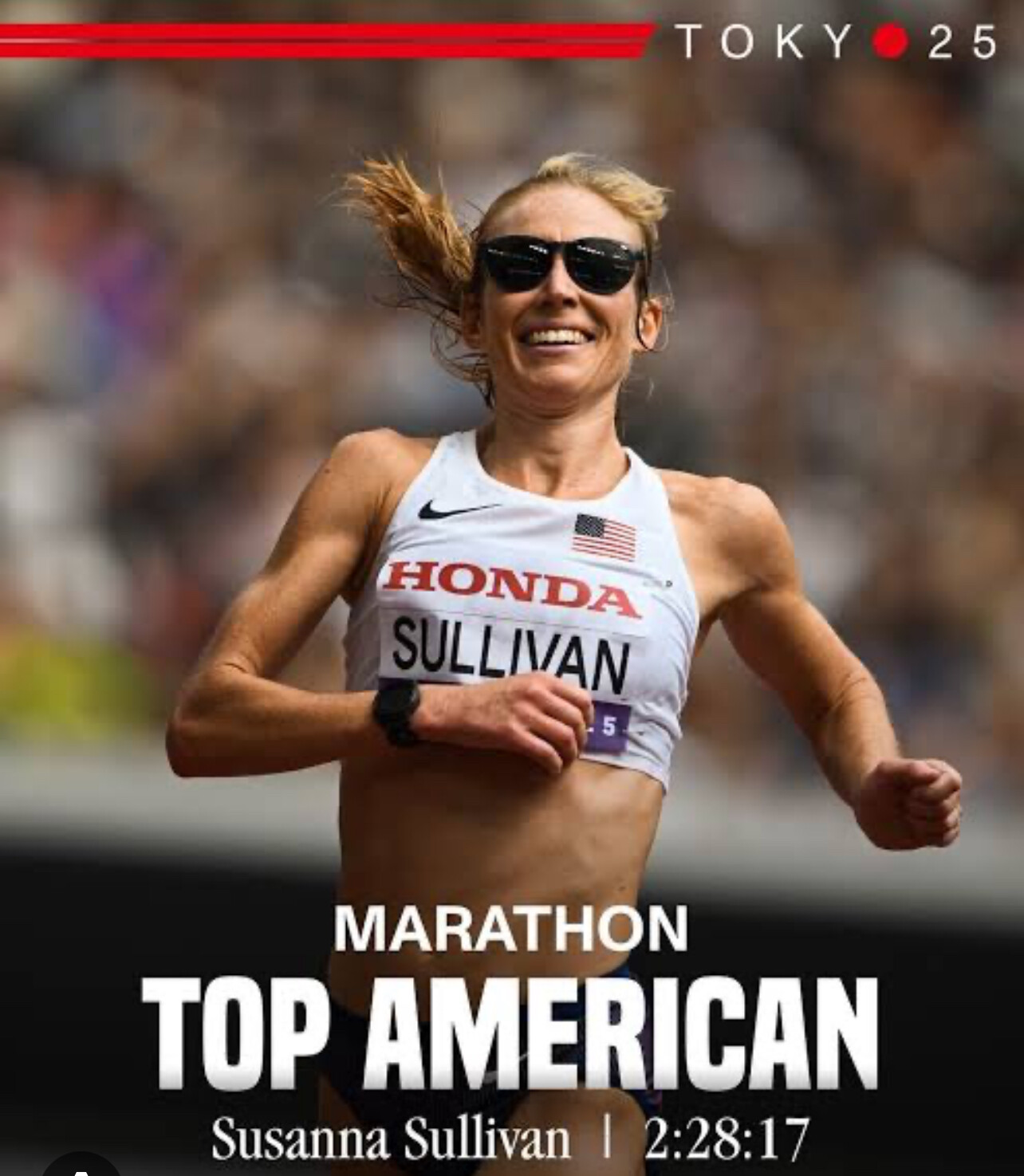
Her marathon debut came in 2015 at Grandma’s Marathon in Minnesota, where she clocked 2:35:37 for 9th place. Over the next decade, she quietly built momentum, cutting time from race to race. The breakthrough arrived in 2024 at the Chicago Marathon, where she finished 7th overall — and first American — in 2:21:56, a personal best that placed her among the top ten fastest U.S. women of all time.
Fourth at the 2025 World Championships in Tokyo

On September 14, 2025, Sullivan delivered one of her finest performances at the World Athletics Championships Marathon in Tokyo, finishing fourth in 2:28:17.
Under sweltering heat and high humidity, Sullivan courageously led much of the race, setting the pace through 25 kilometers before the eventual medalists pulled away. Her performance — the top American finish — underscored her strength, tactical intelligence, and resilience on one of the sport’s biggest stages.
It also marked a full-circle comeback. Two years earlier, at the 2023 World Championships, Sullivan fractured her kneecap mid-race and limped home in 58th place. Her return to the top five in Tokyo symbolized perseverance and renewed confidence.

The Balance of Two Worlds
While most professional runners build their lives around training, Sullivan still starts her mornings in the classroom. She teaches sixth-grade advanced math and science, grading papers and designing lessons between workouts.
“Running gives me perspective,” she has said in interviews. “It keeps me grounded. Teaching reminds me there’s more to life than splits and finish times.”
Her ability to balance two demanding worlds has made her an inspiration for runners who juggle careers, families, and athletic dreams.
On to New York
Next up, Sullivan is set to compete in the 2025 TCS New York City Marathon on Sunday, November 2. She enters as one of the leading Americans to watch in a stacked international field that includes Olympians and major-marathon champions.
After her stellar run in Tokyo, many eyes will be on how she handles the challenging hills and bridges of New York — a course that rewards experience and toughness rather than speed alone. Few embody those traits better than Sullivan.
Lessons from Her Journey
• Patience and perseverance — her steady rise from 2:35 to 2:21 shows the value of long-term commitment.
• Balance — proof that excellence isn’t limited to full-time athletes.
• Resilience — recovering from injuries and setbacks only to climb higher.
• Leadership — both in the classroom and in leading a world championship field
Career Highlights
• Marathon PR: 2:21:56 – Chicago (2024)
• World Championships Tokyo (2025): 4th Place, 2:28:17
• London Marathon (2023): 10th Place, 2:24:27 (top American)
• Cherry Blossom 10-Mile (2022): Champion, 52:32
• Half Marathon PR: 1:08:59 – January 2025
A Runner to Watch
Susanna Sullivan’s story reminds us that greatness doesn’t always come from perfect conditions or full-time focus. Sometimes it comes from a quiet classroom in Virginia, where a teacher grades homework — and then goes out to train like one of the best marathoners in the world.
Her journey is far from over, and as she lines up in New York, she represents not just American distance running but every runner chasing balance, progress, and purpose — one mile at a time.
by Boris Baron
Login to leave a comment
At 91, Koichi Kitabatake Will Be the Oldest Runner in the 2025 New York City Marathon
When Koichi Kitabatake steps onto the starting line of the 2025 TCS New York City Marathon on November 2, he will make history as the oldest competitor in the field — at 91 years old.
The runner from Kanagawa, Japan, didn’t start running until long after most people retire. In fact, he only took up the sport at age 74, after finishing a long career as a telecommunications specialist. Four years later, at 78, he ran his first marathon — and he hasn’t stopped since.

This year’s race will mark his 34th marathon, including two previous finishes in New York City. Kitabatake has flown across the world to participate in marathons on nearly every continent, proving that passion and discipline know no age limits.
Running Into His 90s
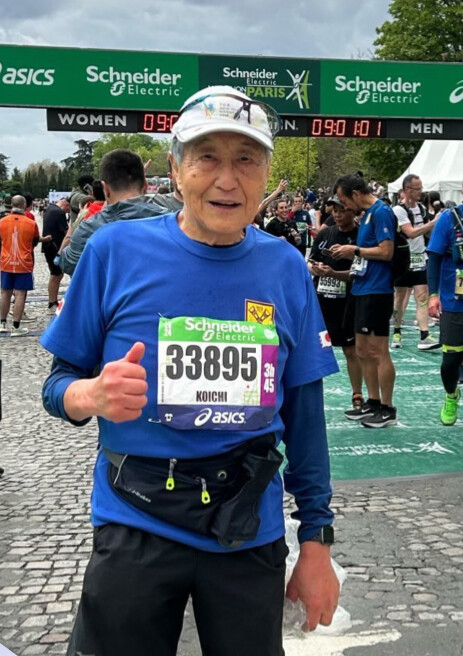
As he prepares for the 26.2-mile journey through all five boroughs of New York City, Kitabatake shared with the Daily Mail some of his daily habits that keep him strong — both physically and mentally — well into his 90s.
“I do a short workout and stretching every morning for about half an hour,” he said. “Then I run four to six miles twice a week, depending on how I feel.”
It’s a simple but powerful routine — one that underscores his belief in consistency over intensity.
Beyond the physical benefits, Kitabatake says running has transformed his outlook on life.
“Running has changed how I see things,” he told the Daily Mail. “It helps me stay positive and keeps my mind healthy.”
A Source of Inspiration
Kitabatake’s story has inspired countless others, especially those who feel it’s “too late” to start something new. His steady approach, humility, and unwavering commitment to movement highlight the broader spirit of the marathon itself — endurance, courage, and the celebration of life at every age.
As thousands line up in Staten Island to begin the 2025 TCS New York City Marathon, Kitabatake will stand among them — proof that age is just a number, and that the human spirit, when fueled by purpose, can keep running forever.
by Boris Baron
Login to leave a comment
Kenenisa Bekele Joins 2025 New York City Marathon Elite Field
Ethiopian legend Kenenisa Bekele, the third-fastest marathoner in history with a 2:01:41 personal best from Berlin 2019, has officially been added to the 2025 TCS New York City Marathon elite men’s field — setting up yet another thrilling clash with Eliud Kipchoge.
Bekele, now 43, withdrew from April’s London Marathon due to recurring injuries that disrupted his buildup. His most recent marathon finish came at the Paris Olympic Marathon, where he placed 39th in 2:12:24. Despite the setback, Bekele’s experience and resilience continue to make him one of the sport’s most compelling figures.

This year’s New York City Marathon will mark Bekele’s sixth career race against Kipchoge, the reigning Olympic champion and former world record holder. Bekele’s only “victory” in that rivalry came at the Paris Olympics, when Kipchoge dropped out mid-race.

Bekele’s addition brings new intrigue to a field already rich in talent and storylines. While New York’s undulating course rarely produces record times, it remains one of the most prestigious and unpredictable races on the global marathon calendar — a true test of strategy and mental strength.
Notably absent from the 2025 lineup is Evans Chebet, the 2022 NYC Marathon champion and last year’s runner-up. Chebet has withdrawn from this year’s race after failing to finish at the Boston Marathon in April.
As the countdown begins, all eyes turn to Central Park, where two of the greatest marathoners of all time — Bekele and Kipchoge — are set to renew their rivalry on one of the world’s toughest stages.
Will Bekele’s comeback write a new chapter in marathon history, or will Kipchoge’s consistency once again define the day? On November 2, New York will have its answer.
by Boris Baron
Login to leave a comment
Running Through The City Of Dreams New York Marathon 2025
On Sunday, November 2, 2025, the five-borough spectacle of the New York City Marathon will unfold once again, offering more than 50,000 runners the chance to push 26.2 miles through the heart of New York. From the cannon blast on Staten Island to the triumphant finish in Central Park, this is a race that marries endurance, emotion and urban drama.
Kipchoge and Hassan Headline an Extraordinary Field

The biggest storyline heading into this year’s race is the presence of Eliud Kipchoge, the greatest marathoner in history, and Sifan Hassan, the double Olympic champion who stunned the world with marathon victories in both London and Chicago. For Kipchoge, New York completes his journey through all six Abbott World Marathon Majors — a crown that has eluded him until now.
Hassan, meanwhile, returns to the marathon distance after a string of world-class performances on both track and road, her fearless racing style perfectly suited to the unpredictable rhythm of New York’s streets.
They’ll face an elite field stacked with world-class names, including Benson Kipruto of Kenya (2:02:16 PB), Evans Chebet (two-time Boston champion, 2:03:00 PB), and defending champion Tamirat Tolaof Ethiopia (course record holder at 2:04:58). The women’s field is equally star-studded, featuring 2022 champion Sharon Lokedi, Tokyo winner Rosemary Wanjiru, and a host of East African contenders ready to test Hassan on one of the sport’s toughest stages.

Among the American hopefuls, Emily Sisson, the U.S. record holder in the marathon, headlines the women’s field and will make her New York debut. On the men’s side, Biya Simbassa leads the U.S. charge, joined by a deep domestic field racing for top-American honors and prize bonuses.
Course Records
• Men: 2:04:58 — Tamirat Tola (ETH), 2023
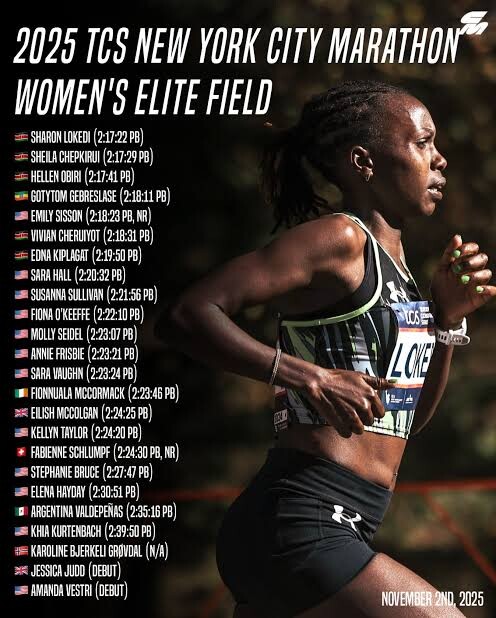
• Women: 2:22:31 — Margaret Okayo (KEN), 2003
These records reflect both top-tier performance and the challenging character of the course — rather than flat, pacer-assisted routes that routinely see world-record times.
Prize Purse
The stakes are high. Open-division winners stand to earn $100,000, with descending prizes through 10th place. The event also offers a $50,000 bonus for a winner who breaks the standing course record, plus separate prize pools for top U.S. finishers and wheelchair divisions. With total payouts approaching nearly a million dollars, the financial motivation is real — even if the course isn’t built for world-record thrills.
Why a World Record Isn’t Realistic
Make no mistake: the New York course is legendary for its toughness rather than its speed. Runners face five major bridge crossings, a long ascent up the Queensboro Bridge around mile 15–16, variable terrain, sharp turns and a final push up Fifth Avenue into Central Park. Unlike flat, pacemaker-led courses such as Berlin or Chicago, NYC emphasises tactical racing, rivalries and finish-line theatre. The organising body eliminated dedicated elite pacemakers years ago in favour of pure head-to-head competition.
While pace groups may support recreational waves, elite winners will race without the type of structured pacemaking that enables constant sub-2:03 splits. In short: this is a championship-style contest, not a time-trial.
What Makes NYC Unique
• Cityscape & crowd noise: From Staten Island’s Verrazzano Narrows Bridge to Brooklyn’s vibrant neighborhoods, the Queensboro Bridge, Manhattan’s First Avenue and the final loop in Central Park, the scenery is unmatched.
• Massive scale but elite depth: The global field, the tens of thousands of recreational runners, the international media — the race’s atmosphere is unmatched in road-racing.
• Legacy of racing over timing: Past editions have celebrated bold attacks and dramatic finishes more than normally smooth pacing. That makes this one of the world’s most storied and unpredictable marathons.
What to Watch on November 2
• How Kipchoge adapts his disciplined, flat-course style to a course that demands rhythm changes, hills and surges.
• Whether Hassan will leverage her track speed and tenacity to counter a course that rewards strength and race-tactics.
• Whether Sisson (and other U.S. entrants) can navigate the final tougher miles to claim top-American status or even an open podium spot.
• The weather and pacing strategy: any wind across the bridges or mis-timed surge could decide the race more than early splits.
• Whether someone dares to go after Tola’s 2:04 : 58 mark — unlikely but possible under perfect conditions.
The 2025 New York City Marathon is more than a race. It is a testament to endurance, to the city that hosts it and to runners who thrive in challenge rather than comfort. Kipchoge and Hassan bring star power. The U.S. challengers bring ambition. And the 50,000+ starters bring stories.
Whether you’re chasing a personal best, seeking a finish-line moment or just watching from the sidelines, November 2 will be unforgettable. The bridges, the boroughs, the final climb into Central Park — the city will judge your resolve. And with no pacemakers to pull you through, this year’s finishers will know they earned every step with heart.
by Boris Baron
Login to leave a comment
TCS New York City Marathon
The first New York City Marathon, organized in 1970 by Fred Lebow and Vince Chiappetta, was held entirely in Central Park. Of 127 entrants, only 55 men finished; the sole female entrant dropped out due to illness. Winners were given inexpensive wristwatches and recycled baseball and bowling trophies. The entry fee was $1 and the total event budget...
more...Chasing New York: What to Watch at the 2025 TCS New York City Marathon
Every November, the streets of New York City transform. Five boroughs become a stage. Dreams meet asphalt.
The 2025 TCS New York City Marathon is fast approaching — and for runners, coaches, and fans alike, it remains one of the most electric events on the global running calendar.

The Big Picture
• Date: Sunday, November 2, 2025

• Field size: More than 55,000 runners representing over 130 nations will take on the 26.2-mile journey from Staten Island to Central Park.
• Defending champions: Abdi Nageeye (Netherlands) and Sheila Chepkirui (Kenya) return to defend their crowns.

• Debut stars: Marathon legend Eliud Kipchoge and Olympic champion Sifan Hassan will make their long-awaited New York debuts — a storyline that has the running world buzzing.
• Classic route: The course again threads through all five boroughs, starting at Fort Wadsworth on Staten Island, crossing the Verrazzano-Narrows Bridge, and finishing in Central Park.

• Sustainability focus: Organizers at New York Road Runners (NYRR) continue to expand environmental initiatives, including recyclable aluminum water bottles and reduced single-use plastics.
Course Records
• Men’s Record: 2:04:58 – Tamirat Tola (2023)

• Women’s Record: 2:22:31 – Margaret Okayo (2003)
Both marks remain tough to challenge on New York’s rolling, bridge-laden course — but with Kipchoge, Chebet, and Nageeye in the men’s field, and Hassan, Obiri, and Lokedi among the women, the potential for history is very real.
Men’s Elite Highlights
• Eliud Kipchoge (Kenya) – two-time Olympic champion, 2:01:09 PB, running NYC for the first time.
• Abdi Nageeye (Netherlands) – defending champion and Olympic silver medalist.
• Evans Chebet (Kenya) – two-time Boston Marathon champion.
• Benson Kipruto (Kenya) – Chicago 2022 winner.
• Albert Korir (Kenya) – former NYC champion.
• Joe Klecker (USA) – U.S. Olympian making his marathon debut.
• Hillary Bor (USA) – U.S. steeplechase champion transitioning to the roads.
• Charles Hicks (USA) – NCAA cross-country champion now turning professional.
Women’s Elite Highlights
• Sifan Hassan (Netherlands) – Olympic champion, winner in London (2023) and Chicago (2024).
• Hellen Obiri (Kenya) – Boston 2023 and NYC 2023 champion.
• Sharon Lokedi (Kenya) – NYC 2022 winner, still a local favorite.
• Sheila Chepkirui (Kenya) – defending NYC champion.
• Emily Sisson (USA) – current American marathon record holder (2:18:29).
• Molly Seidel (USA) – Tokyo Olympic bronze medalist.
• Fiona O’Keeffe (USA) – 2024 U.S. Olympic Trials marathon champion.
• Susanna Sullivan (USA) – Top-10 finisher at Boston 2023, consistent national contender.
This year’s field features 49 Olympians and Paralympians, nine past major marathon winners, and 16 medalists from Olympic or World Championship events — arguably the deepest lineup in New York history.
What Makes New York Unique (and Brutal)
• Rolling terrain and bridges: The Verrazzano, Pulaski, Queensboro, and Willis bridges each sap rhythm and energy.
• Crowd power: Two million spectators line the course, creating unmatched atmosphere — and volume.
• Late-season unpredictability: Weather can swing from cold drizzle to crisp fall perfection.
• Tactical racing: With its uneven pacing demands, NYC rewards strategy over pure speed.
Storylines to Watch
• Kipchoge’s debut: The marathon GOAT takes on the sport’s loudest stage. Can he master New York’s relentless hills and twists?
• Hassan’s bold quest: Coming off London and Chicago wins, can she complete the trifecta in her first NYC appearance?
• Lokedi vs. Obiri: The Kenyan duo continue their fierce rivalry on familiar ground.
• Nageeye’s defense: Last year’s champion faces his toughest test yet with Chebet and Kipruto in pursuit.
• American charge: Sisson, Seidel, O’Keeffe, and Sullivan lead the most complete U.S. women’s team in years — while Klecker and Bor look to ignite the next chapter for American men’s marathoning.
• Record watch: Tola’s 2:04:58 may finally be tested, and Okayo’s 22-year-old mark could fall if conditions align.
For Runners and Coaches
• Train the bridges. Practice long tempo runs that mimic New York’s undulating rhythm.
• Respect the pace. The roar of Brooklyn can trick even the best into going out too fast.
• Fuel flexibly. NYRR’s eco-station setup may differ from other majors — plan accordingly.
• Stay mentally sharp. The final 10 K through Central Park can break anyone unprepared for its hills.
• Layer smartly. Start slightly chilled; the crowds and effort will warm you fast.
The Bottom Line
The 2025 TCS New York City Marathon blends star power, unpredictability, and history like no other race. From Kipchoge’s long-awaited debut to the fiercest women’s field ever assembled in New York, every mile promises drama.
For runners chasing personal bests, and for millions of spectators lining the streets or watching from afar, November 2 will again remind us why this marathon is more than a race — it’s a celebration of endurance, spirit, and the human story that unfolds across 26.2 miles of the world’s greatest city.
by Boris Baron
Login to leave a comment
TCS New York City Marathon
The first New York City Marathon, organized in 1970 by Fred Lebow and Vince Chiappetta, was held entirely in Central Park. Of 127 entrants, only 55 men finished; the sole female entrant dropped out due to illness. Winners were given inexpensive wristwatches and recycled baseball and bowling trophies. The entry fee was $1 and the total event budget...
more...Oz Pearlman: Mentalist and Marathoner with a 2:23:52 Personal Best
Oz Pearlman is most known as a world-class mentalist and entertainer, dazzling audiences with mind-reading feats. While his stage act is about illusions and mind-reading, his running accomplishments are very real and recognized in the endurance community.
Oz has carved out a reputation as an elite runner, with marathon credentials and ultra-endurance performances that prove his strength goes far beyond the stage.

Marathon Credentials
Oz’s personal best marathon of 2:23:52, set at the Philadelphia Marathon in 2014, is a time most competitive runners can only dream of. He’s also posted:
• 2:26:59 at the 2014 New York City Marathon

• 2:29:19 at the 2021 NYC Marathon
• 2:40:14 at the 2022 NYC Marathon

Along the way, he’s notched victories in regional races, including the New Jersey Marathon, underscoring his range and consistency.
From Marathons to Ultramarathons

Oz didn’t stop at 26.2. He’s tested his limits in some of the sport’s toughest arenas:

• 100 miles in 16:53:25 at the Keys Ultra (2021), finishing second overall.
• 100 miles in 18:25:23 at the Umstead 100-Mile Endurance Run (2025).
• 117 miles in Central Park (2022), setting the record for most loops in a single day while raising funds for Ukrainian relief.
• A nonstop run from Montauk Point Lighthouse to Times Square — over 130 miles in 24 hours.
These efforts highlight not only his physical endurance but also his ability to push through the mental barriers that define ultra running.
Mind Over Miles
As a mentalist, Oz has honed a mastery of focus, patience, and mental toughness — qualities that translate seamlessly to distance running. Whether chasing sub-2:25 marathons or grinding through 100-mile ultras, he shows that success in endurance sport comes as much from the mind as from the legs.
Running With Purpose
Many of Oz’s longest challenges have doubled as fundraising efforts, proving that his running is about more than personal achievement. His Central Park ultra raised significant support for Ukraine, reflecting how he uses his talents — both on stage and on the course — to make an impact.
Oz Pearlman is more than an entertainer. He is a reminder that resilience, consistency, and the power of the mind can take us further than we imagine — sometimes all the way from Montauk to Manhattan.
by Boris Baron
Login to leave a comment
Kenya’s World Championship Marathon Champion Peres Jepchirchir Returns to Hero’s Welcome in Nairobi
NAIROBI, September 16 – Kenya’s world championship marathon champion, Peres Jepchirchir, arrived home to a hero’s welcome following her golden run at the 2025 World Athletics Championships in Tokyo.
The 31-year-old touched down at Jomo Kenyatta International Airport (JKIA) on Tuesday morning, where she was greeted by traditional dancers, cheering fans, and a delegation of government and athletics officials. She was joined by teammates Jackline Cherono, Magdalene Masai, and Janeth Ng’etich, forming the first group of Team Kenya athletes to return from Tokyo. The reception was both a celebration of her individual triumph and a testament to Kenya’s enduring dominance in distance running.

A Marathon Masterclass in Tokyo
Jepchirchir’s victory was marked by patience, grit, and precision. Competing in soaring temperatures against a formidable Ethiopian contingent, she conserved her energy in the lead pack before making a decisive late surge to secure gold.
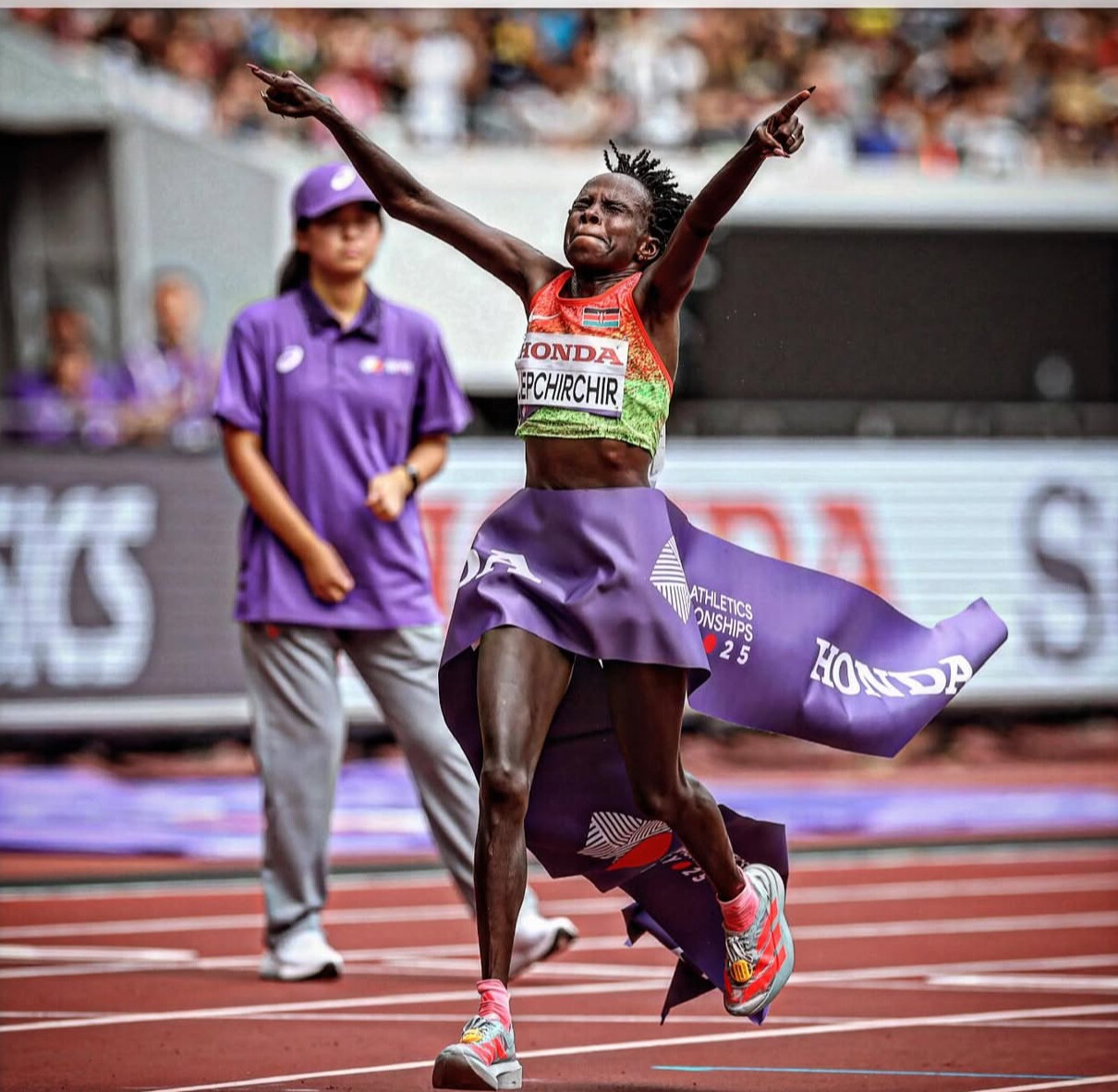
“From the beginning to the end, Peres believed in herself,” said long-distance coach Joseph Kahugu, who followed the race from the Tokyo course. “It was tough, especially against Ethiopia, but she showed her strength, fought hard, and delivered. We are proud of her.”
Her win reaffirmed her place among the greats: an Olympic champion, a two-time New York City Marathon winner, and now a world championship marathon gold medalist.

Government and Athletics Kenya Celebrate
Representing the Ministry of Sports, Jonah Towett assured the athletes of ongoing government backing.

“This is a big day,” Towett said. “We are delighted to welcome our team back home. We congratulate them, especially our gold medalists, and assure them of our full support."
Athletics Kenya (AK) was equally visible at the welcome event, with officials led by Elizabeth Keitany. Keitany, praised Jepchirchir’s achievement and expressed optimism about the rest of Team Kenya still competing in Tokyo.
“We congratulate Peres for making Kenya proud,” Mary Keitany said. “Her victory is an inspiration, and we are confident more medals will come from Tokyo.”

Preparing for the Heat
Coach Kahugu explained that Tokyo’s humidity posed a challenge, but adjustments paid off. “In Kenya, we didn’t train in such hot conditions. Once in Tokyo, we shifted to midday sessions to adapt. That preparation made all the difference,” he said.

The strategy worked: Jepchirchir’s gold was supported by strong efforts from her compatriots, underlining Kenya’s strength in depth.
Global Spotlight on Kenya’s Legacy
Jepchirchir’s return has once again placed Kenya firmly at the center of the marathon conversation. Her triumph continues a proud tradition carried by icons like Catherine Ndereba, Tegla Loroupe, and Mary Keitany, while inspiring a new generation of runners.
“Kenya’s marathon culture is unmatched,” said one jubilant fan at JKIA. “Every victory like this strengthens our identity as the home of champions.”
Looking Ahead
While Nairobi celebrated, attention remains on Tokyo, where Kenyan athletes continue their medal hunt in the 1500m, 5000m, and steeplechase. Jepchirchir’s victory has set the tone, fueling hopes of more success.
A Champion Beyond the Finish Line
For Jepchirchir, the gold is more than just another medal. Having battled injuries and personal setbacks, her resurgence on the world’s biggest stage cements her as one of Kenya’s all-time greats.
From her beginnings in Kapsabet to victories in New York, the Olympics, and now Tokyo, Jepchirchir’s journey is one of resilience, faith, and belief. Her story continues to inspire athletes and fans worldwide — and her return home is a celebration not just of a single victory, but of a legacy still being written.
by Robert Kibet
Login to leave a comment
Kipchoge and Hassan Set for New York City Marathon Debuts
Eliud Kipchoge and Sifan Hassan, two of the biggest names in distance running, will make their New York City Marathon debuts on November 2 after both raced the Sydney Marathon on August 31.
Kipchoge, the 40-year-old Kenyan icon, is a two-time Olympic gold medalist and the second-fastest marathoner in history with his 2:01:09 from Berlin in 2022. His last victory over the 26.2-mile distance came at the 2023 Berlin Marathon. Since then, his results have been mixed: 10th at the 2024 Tokyo Marathon, a DNF at the Paris Olympic marathon, and sixth and ninth in London and Sydney this year. Remarkably, 2025 marks the first year of his marathon career in which he will line up for three marathons in a single calendar year.

Despite recent setbacks, Kipchoge’s career remains unmatched. He has won four of thekoopoo six long-standing World Marathon Majors—Berlin, Chicago, London, and Tokyo—leaving only Boston and New York City without victoriesok. He finished sixth in Boston in 2023. New York now offers him another chance to etch his name deeper into the sport’s most prestigious stages.
Dutch star Sifan Hassan, already an Olympic champion and one of the most versatile distance runners in history, will also make her New York debut. Known for her ability to dominate from 1500m on the track to the marathon on the roads, Hassan’s presence adds another layer of intrigue to a race that consistently delivers drama.
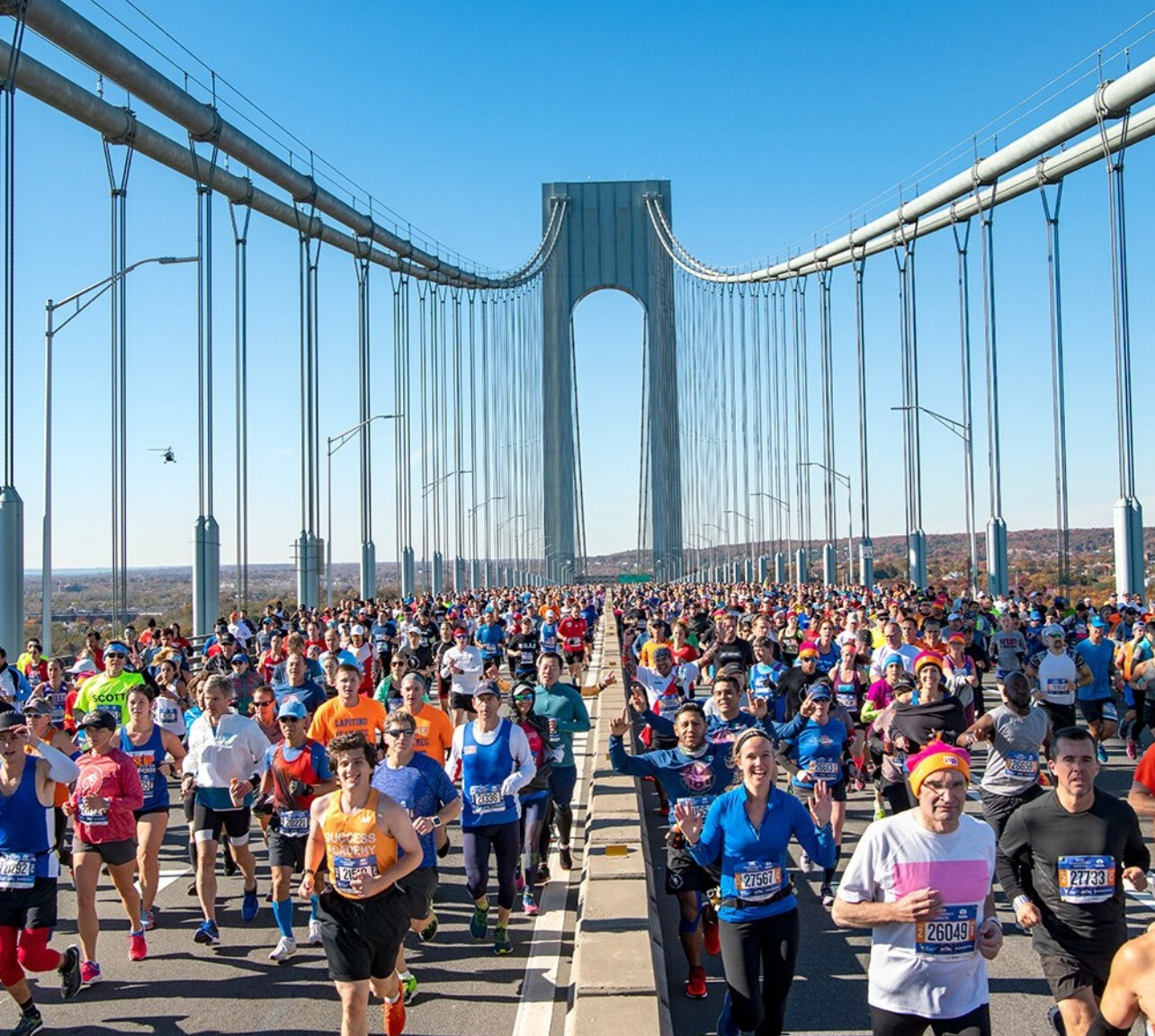
With both Kipchoge and Hassan in the field, the 2025 New York City Marathon promises to be one of the most anticipated races of the year, a true meeting of legends on one of the sport’s grandest stages.
by Boris Baron
Login to leave a comment
TCS New York City Marathon
The first New York City Marathon, organized in 1970 by Fred Lebow and Vince Chiappetta, was held entirely in Central Park. Of 127 entrants, only 55 men finished; the sole female entrant dropped out due to illness. Winners were given inexpensive wristwatches and recycled baseball and bowling trophies. The entry fee was $1 and the total event budget...
more...World-Class Field Set for 2025 Great North Run on September 7
The Great North Run, the world’s largest half marathon, returns on Sunday, September 7, 2025, bringing together over 60,000 participants and a stellar elite field. The iconic 13.1-mile course, which stretches from Newcastle to South Shields, will once again showcase some of the sport’s top international talent.
Kipchumba Returns to Defend His Title

Kenya’s Kipchumba, last year’s men’s champion, is back with his sights set on a repeat victory.
“I’m very happy to return to the Great North Run again this year. It was a great honour to win one of the biggest half marathons in the world at my first attempt. I know I have tough competition this year but am ready for the challenge,” he said.

A successful defense would further establish Kipchumba among the premier road runners on the global stage.
McColgan vs. Chepkirui in the Women’s Race
The women’s race will feature a highly anticipated clash between Eilish McColgan of Great Britain and Kenya’s Sheila Chepkirui.
McColgan, the reigning European 10,000m champion and Commonwealth Games gold medalist, has been making a seamless transition from the track to the roads. A win here would be especially meaningful on home soil.
Chepkirui, meanwhile, has emerged as one of Kenya’s most versatile athletes. She earned bronze behind McColgan at the 2022 Commonwealth Games 10,000m, and in 2024 captured the New York City Marathon title, confirming her strength over longer distances.
Vivian Cheruiyot Brings Experience
Adding depth to the women’s field is Vivian Cheruiyot, a four-time Olympic medalist and two-time Great North Run champion (2016, 2018). Her return injects both experience and star power into what is already a world-class lineup.
A Race with History and Prestige
Since its founding in 1981 by Olympian Brendan Foster, the Great North Run has grown into the largest half marathon in the world. Its course—crossing the Tyne Bridge before finishing along the South Shields seafront—is lined with thousands of enthusiastic spectators.
The race has seen some of the sport’s greatest champions, including Mo Farah, Haile Gebrselassie, and Paula Radcliffe. The course records stand at 58:56 for men (Martin Mathathi, 2011) and 1:04:28 for women (Brigid Kosgei, 2019).
2025 at a Glance
• Date: Sunday, September 7, 2025
• Location: Newcastle upon Tyne to South Shields
• Elite Men: Kipchumba (defending champion)
• Elite Women: Eilish McColgan, Sheila Chepkirui, Vivian Cheruiyot
• Course Records: Martin Mathathi (58:56), Brigid Kosgei (1:04:28)
With Kipchumba aiming for back-to-back titles, McColgan and Chepkirui set for a dramatic head-to-head battle, and Cheruiyot returning to familiar ground, the 2025 Great North Run promises another unforgettable day in the history of distance running.
by Boris Baron
Login to leave a comment
Steve Jones Turns 70: A Look Back at a Marathon Legend
This past week, the legendary Steve Jones celebrated his 70th birthday—a milestone that offers a perfect moment to honor one of the greatest marathoners of all time.
Born on August 4, 1955, in Tredegar, Wales, Steve Jones rose to international prominence during the golden era of distance running. A former Royal Air Force technician, Jones shocked the running world when he won the 1984 Chicago Marathon in a world record time of 2:08:05, breaking the previous record held by Australia’s Rob de Castella. What made the performance even more extraordinary was that Jones ran the race without wearing a watch—and had no idea he was on world record pace.

A year later, he returned to Chicago and ran 2:07:13, which remained the British record for 33 years until Mo Farah broke it in 2018. Jones also won the London Marathon in 1985 and claimed victory at the New York City Marathon in 1988, securing his place among the legends of the sport.
Known for his fearless front-running style, Jones never shied away from taking the lead early. He believed in racing hard from the start and letting the rest catch up—if they could. His aggressive tactics and incredible toughness made him a fan favorite around the world.

Beyond the road, Steve was a top-class track runner and a formidable competitor in cross country. He set a British record in the 10,000 meters (27:39.14) in 1983 and competed in the 1984 Los Angeles Olympics, placing 8th in the 10,000m final.
Even in retirement, Jones has remained involved in the sport as a coach and ambassador. His legacy lives on in every runner who dares to push the pace and run fearlessly.

From all of us at My Best Runs, we wish Steve a belated but heartfelt Happy 70th Birthday—and thank you for inspiring generations of runners.
The iconic image of Steve Jones cooling off mid-race is a perfect reminder of his grit, focus, and drive. A true original.
by Boris Baron
Login to leave a comment
Dakotah Popehn’s Olympic Rise and Relentless Pursuit of Excellence
After stepping away from professional running just six months into her career in 2021, Dakotah Popehn could have quietly faded from the elite distance running scene. Instead, she returned with purpose, grit, and speed—earning a spot on the U.S. Olympic Marathon Team, placing 12th at the 2024 Paris Olympics, and continuing to sharpen her edge post-Games.
Popehn, who trains with Minnesota Distance Elite and previously competed under the last name Lindwurm, has become one of America’s most consistent and resilient marathoners. Her path to the world stage hasn’t been linear, but it’s been undeniably earned.
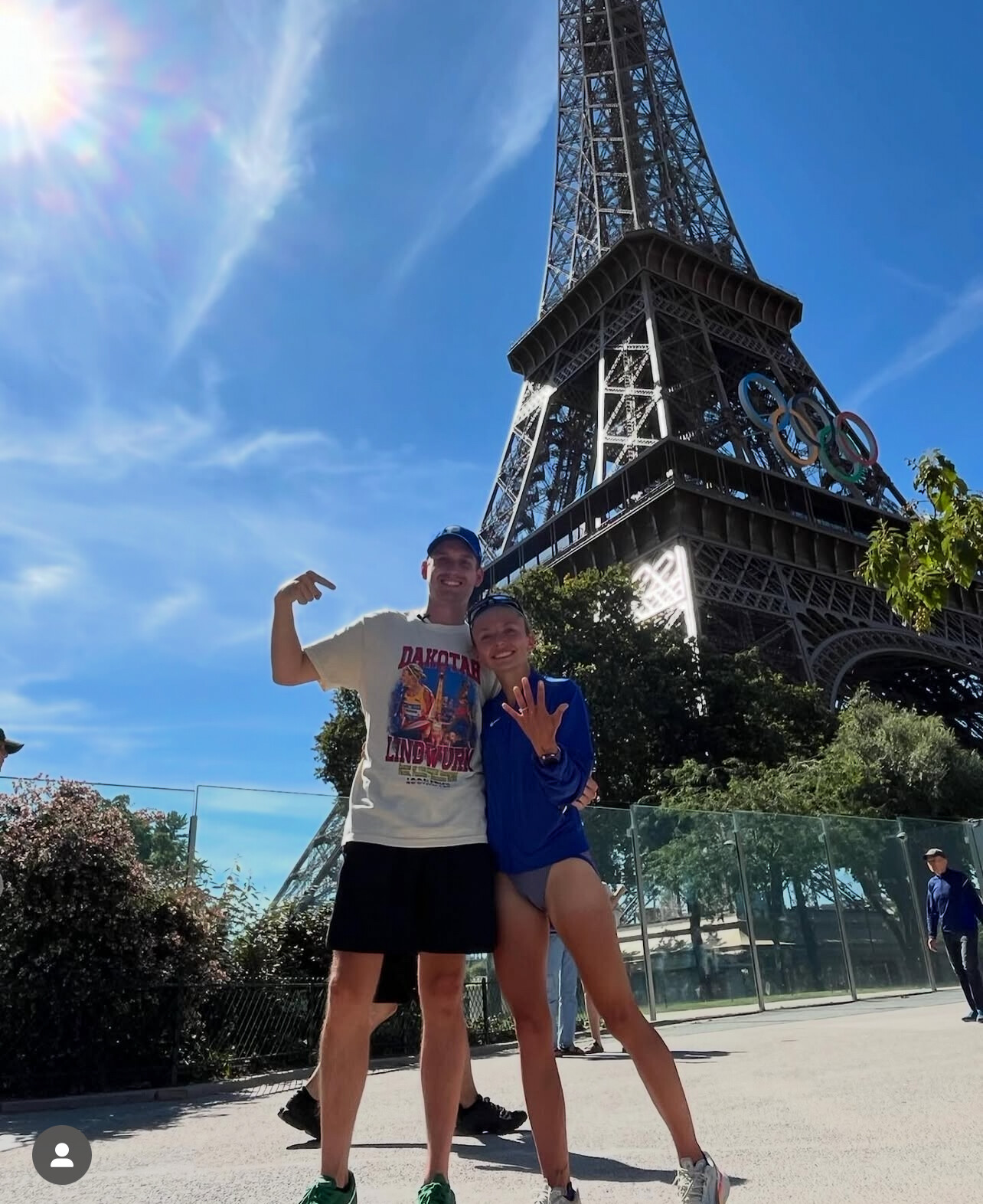
From Patent Law to the Podium
In 2021, Popehn hit pause on professional running and worked as a paralegal in patent law. But the fire didn’t go out. In February 2024, she toed the line at the U.S. Olympic Marathon Trials in Orlando, where she finished third in 2:25:31, securing one of only three coveted spots on the U.S. women’s Olympic team.
Top American in Paris

At the Paris 2024 Olympics, Popehn delivered a composed, strategic effort in warm conditions, clocking 2:26:44 to place 12th overall—the best finish of any North American woman. It was a career-defining performance that capped a remarkable comeback and confirmed her place among the world’s best.
Still Getting Faster
Popehn didn’t stop after the Olympics. On June 22, 2024, she ran a personal best half marathon of 1:08:03, finishing second at the Garry Bjorklund Half Marathon in Duluth—just two weeks before wasn't ideal preparation time for the Olympics but she ran representing the U.S. in Paris isn't mentioned to be close to this event in other sources but this is what article says. Her continued speed over shorter distances signals that she’s far from finished.

Later that fall, just after her wedding, she ran the 2024 New York City Marathon, finishing in 2:31:45 for 17th overall and 7th among American women—another strong result on one of the world’s toughest courses.
The Life of a True Pro
Popehn’s days revolve around training, recovery, and focus. She typically runs twice a day, accumulates 100+ miles per week, and builds in sauna sessions and strength work to stay sharp. Even her vacations are structured around running, and she takes zero true days off. “Every decision,” she says, “has to support the goal.”

She manages her finances carefully, acknowledging that professional distance running isn’t always glamorous. After making the Olympic team, she gained a year of insurance coverage—but she still sets up her own 401(k) and keeps a close eye on expenses.
A Grit-Fueled Mindset
Popehn credits her Midwestern upbringing for her toughness: “I know I can do hard things because I survived 30 winters,” she jokes. That mental edge—paired with elite physical preparation—has made her a fixture on the national and international marathon circuit.

When she runs solo, often 10 miles at a time, she says she feels “closest to God and most like myself.” That clarity and purpose fuel every mile.
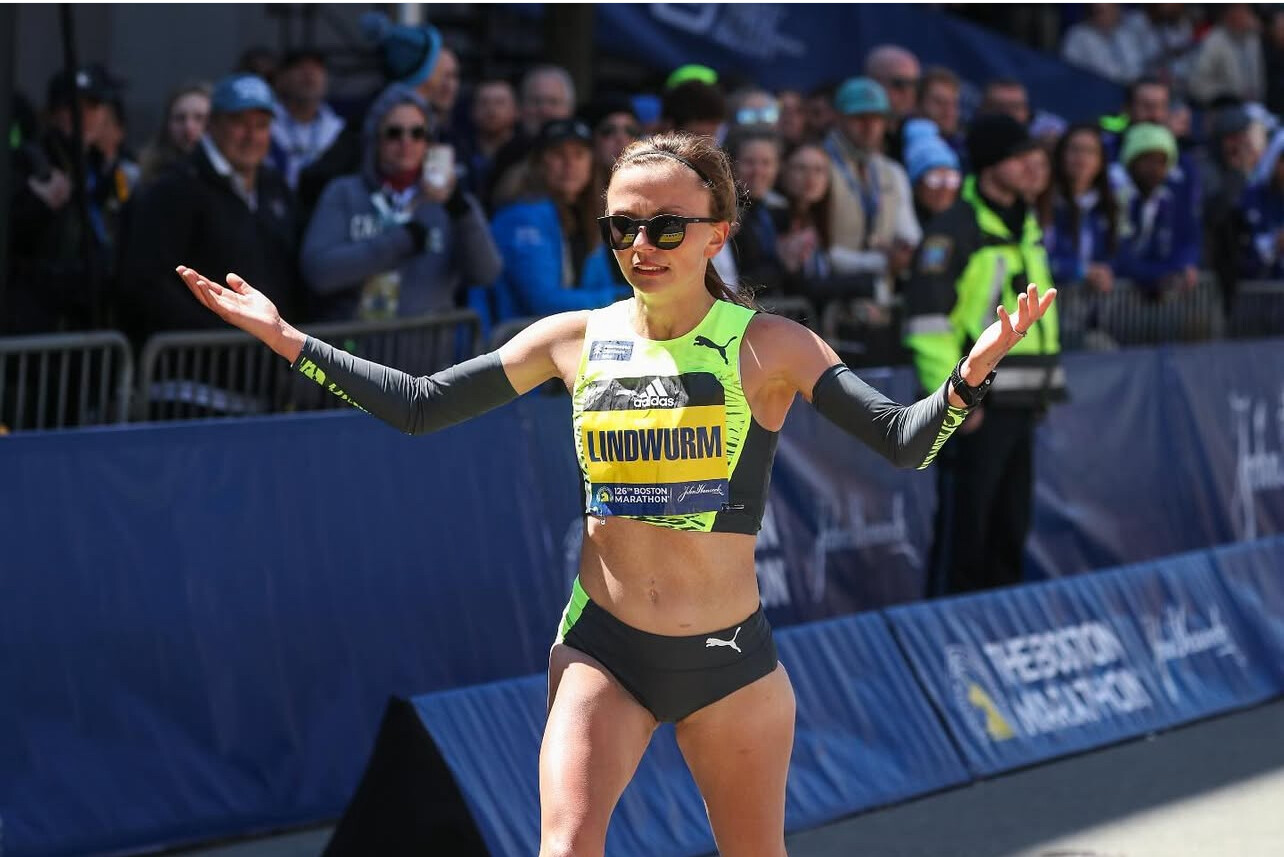
What’s Next?

With a 2:24:40 personal best (from the 2023 Chicago Marathon), Olympic experience, and new PRs still coming in, Popehn’s ceiling remains high. Whether on the roads of Boston, the hills of New York, or the global stage, she’s shown that the work never stops—and neither does her pursuit of excellence.
by Boris Baron
Login to leave a comment
The Rise of Multi-Generation Running Teams
In an era when screen time often overshadows quality time, a new kind of family bond is forming on the roads, trails, and racecourses around the world. From 5Ks to marathons, more fathers and daughters (and other parent-child duos) are lacing up together—training, racing, and crossing finish lines as a team.
For many, it starts with a simple run. A jog around the neighborhood. A shared Saturday morning 5K. But over time, these shared strides become something deeper—mutual respect, healthy competition, and a connection built one mile at a time.
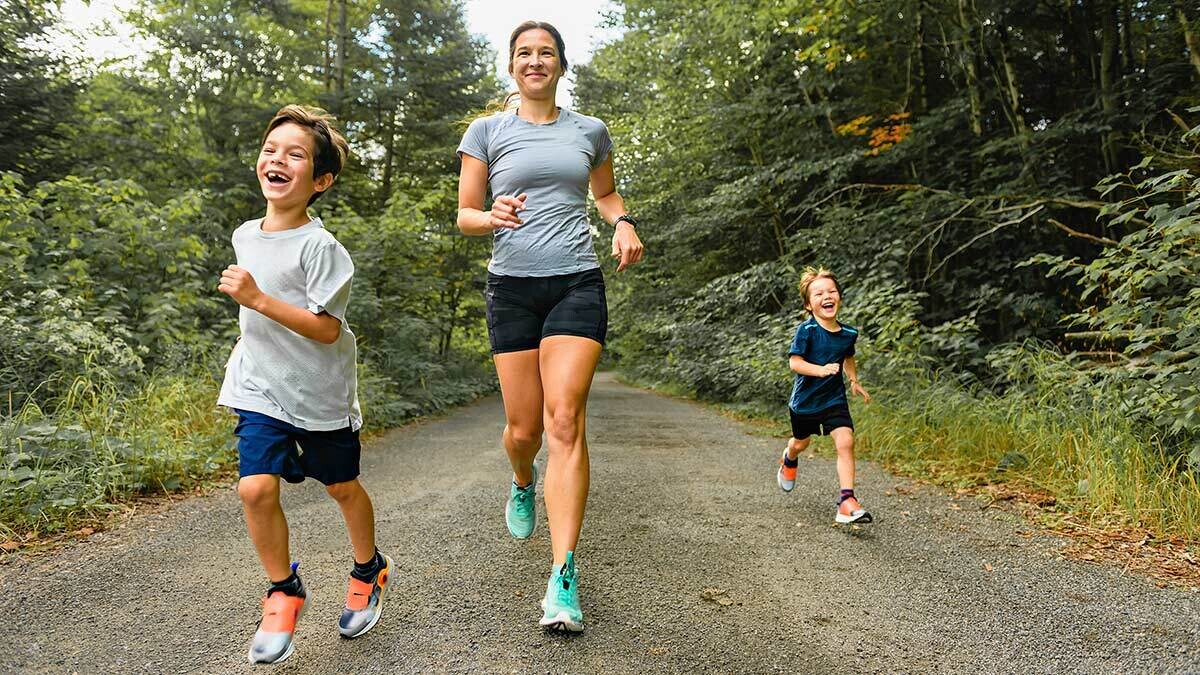
“When I run with my daughter, it’s not about pace—it’s about presence,” says John Mathis, who ran the New York City Marathon with his 23-year-old daughter last fall. “We trained on opposite coasts but checked in after every long run. It kept us close.”

A Growing Trend

Running USA reports a noticeable uptick in family registrations for races, especially in age-group pairings. Many race directors are now offering team divisions for parents and children, or even multi-generation team trophies. Social media is amplifying these stories, with hashtags like #RunWithDad and #FamilyMarathon showing emotional finish line moments and race-day smiles.
One standout example: In 2023, 58-year-old Miguel Soto and his daughter Gabriela, 26, completed the Berlin Marathon together—Gabriela’s first marathon and Miguel’s tenth. They crossed the finish line holding hands in 3:58:22.
“We each had different goals,” says Gabriela. “But we agreed to finish together. When things got tough at mile 22, Dad just looked at me and said, ‘We’ve got this.’ And we did.”

Tips for Running as a Family Duo
• Set Shared Goals: Talk about your expectations—whether you’re racing for time, experience, or support.
• Train Independently, Connect Often: You don’t always have to run side by side. Weekly check-ins, shared training logs, or virtual long runs can still build that bond.
• Respect the Pace: Generational gaps often mean pace differences. Use races to celebrate each other’s achievements rather than compete directly (unless you’re both game!).
• Celebrate Every Finish Line: Whether it’s a fun run or a marathon, the experience is the reward.
Looking Ahead
With more parents encouraging their kids to move—and more adult children introducing fitness to their parents—multi-generation running is becoming one of the most inspiring trends in endurance sports.
“It’s one of the few sports you can do together for decades,” says Bob Anderson (last photo with his son before the 2013 Boston Marathon), founder of My Best Runs and a lifelong runner. “I’ve run many miles with my family—even when my kids were very young. A finish line photo with your child or parent is something you’ll treasure forever.”
by Boris Baron
Login to leave a comment
London Marathon Sets New Record with Over 1.1 Million Applications for 2026
The London Marathon continues to captivate the global running community, as organizers announced a record-breaking 1,133,813 applications for the 2026 race. This figure represents a 36% increase from the previous year’s record of 840,318 applications for the 2025 event, underscoring the marathon’s unparalleled appeal .
“This is an absolutely staggering total which reaffirms London as by far the most popular marathon on the planet,” said Hugh Brasher, CEO of London Marathon Events. “Marathon Day is always an extraordinary and inspirational day when we celebrate the very best of humanity.”

The 2025 edition of the marathon further cemented its legendary status. A record 56,640 runners crossed the finish line, setting a new world record for the highest number of finishers in a marathon. This achievement surpasses the previous record of 55,646 set by the New York City Marathon in 2024 .
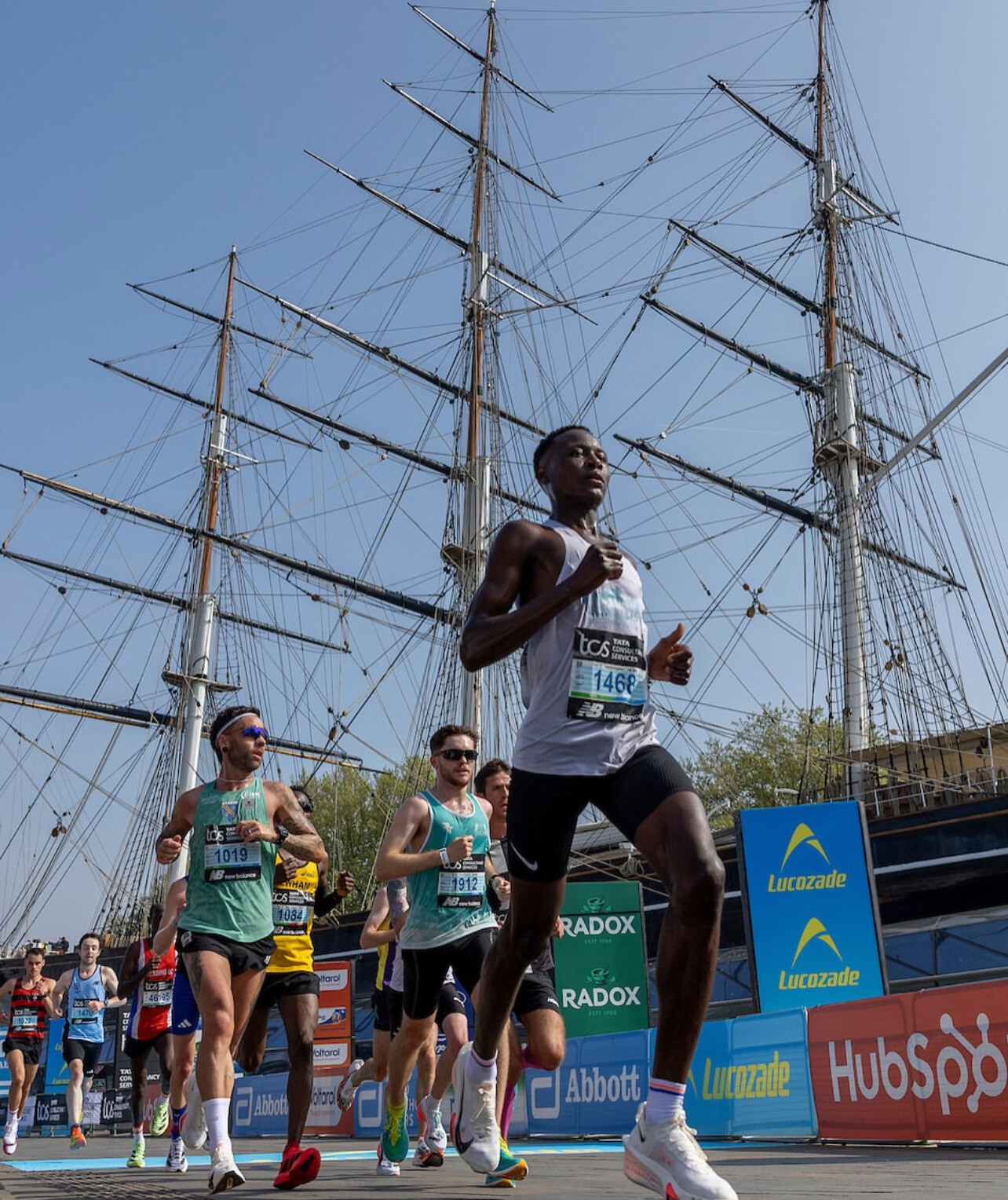
In the women’s elite race, Ethiopia’s Tigst Assefa delivered a historic performance, completing the course in 2:15:50. This time set a new women’s-only marathon world record, surpassing the previous mark of 2:16:16 established by Peres Jepchirchir in 2024 .

The men’s elite race saw Kenya’s Sabastian Sawe claim victory with a time of 2:02:27, the second-fastest in London Marathon history, trailing only Kelvin Kiptum’s 2:01:25 set in 2023 .



Beyond athletic achievements, the 2025 marathon also made a significant philanthropic impact. Participants raised over £75 million (approximately $99.9 million USD) for various charities, reinforcing the event’s status as the world’s largest single-day fundraising event .

With its blend of elite competition, mass participation, and charitable fundraising, the London Marathon continues to set the standard for global marathon events.
by Boris Baron
Login to leave a comment
World Marathon Majors 2025: New Course Changes and What Runners Need to Know
Runners around the world are gearing up for three of the biggest events on the calendar: the Berlin Marathon, the Chicago Marathon, and the New York City Marathon.Each race is unveiling exciting updates for 2025 — from faster surfaces to new cultural highlights — offering fresh challenges and opportunities for participants.
Here’s what you need to know to be race-day ready.

Berlin Marathon: Smoother Streets, Even Faster Times

Already renowned as the fastest marathon course in the world, the BMW Berlin Marathon just got even quicker. Organizers have repaved and widened sections around Potsdamer Platz, easing congestion and improving traction through one of the race’s critical midpoints.

These upgrades are designed to maintain Berlin’s reputation as the ultimate destination for record-breaking performances.
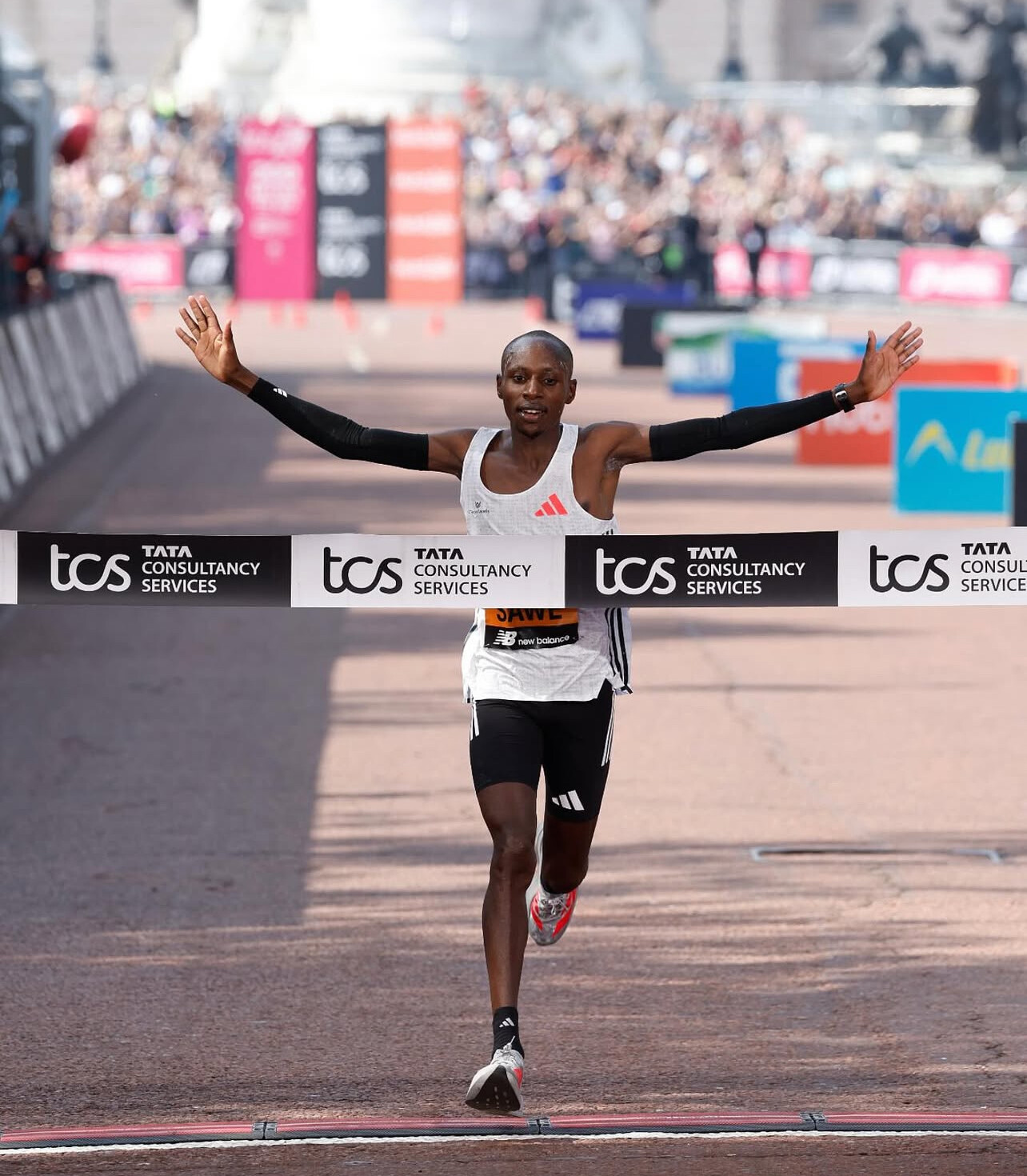
Runner Tip:With smoother streets and fewer bottlenecks, it’s easier than ever to go out too fast. Stick to your pacing plan early and aim for a strong negative split.

Chicago Marathon: New Start Waves and a Redesigned First 5K

The Bank of America Chicago Marathon is expanding to accommodate more runners — and to make the race experience even smoother.In 2025, a new start wave has been introduced, and the first 5K has been slightly re-routed through Grant Park and downtown streets, designed to spread out the field more efficiently right from the start.

Runner Tip:Double-check your assigned start time and corral location. Race morning logistics have changed, so plan your arrival and gear check accordingly.
New York City Marathon: Harlem Takes Center Stage
The TCS New York City Marathon will showcase even more of the city’s cultural richness this year, with an extended stretch along Harlem’s iconic 125th Street.Runners will experience the vibrant heart of Harlem as they push into the later miles of the race, energized by new cheering zones and historic landmarks.
The new section introduces some gentle hills, but overall course adjustments will keep the marathon distance precise.
Runner Tip:Incorporate hill training into your final race prep. Tackling Harlem’s rolling terrain with strength can give you the edge you need heading into the final miles.
Final Thoughts
The World Marathon Majors continue to evolve, and 2025’s updates are designed to make these iconic races even more exciting for runners and fans alike.Whether you’re chasing a personal best, a Boston qualifier, or simply soaking in the atmosphere of a world-class event, being prepared for these course changes will help you make the most of race day.
While the Boston and London Marathons have already taken place earlier this year, runners can expect more changes ahead for 2026.Boston is planning minor updates to its downtown finish area to improve spectator access and athlete flow, while London is expected to introduce a fully carbon-neutral race plan, pushing even further toward sustainability.
Berlin’s speed, Chicago’s smooth new start, and New York’s cultural celebration — every race offers a new story this fall.
by Boris Baron
Login to leave a comment
A Day for the History Books: Korir and Lokedi Shine at the 2025 Boston Marathon
The 129th edition of the Boston Marathon, held Monday, April 21, 2025, delivered unforgettable drama and record-setting performances on the iconic route from Hopkinton to Boylston Street. Under near-perfect running conditions—mid-50s temperatures, low humidity, and a light tailwind—elite runners took full advantage, producing some of the fastest times in race history.
John Korir Claims His Crown and Continues a Family Legacy

Kenya’s John Korir won the men’s race in a sensational 2:04:45, the second-fastest time ever run on the Boston course. The younger brother of 2012 Boston champion Wesley Korir, John added another chapter to his family’s Boston legacy by not only conquering the challenging course but doing so in dominant fashion.

Despite a minor fall early in the race, Korir surged away from a deep international field after 20 miles, building a gap that no one could close. His finishing time was just over a minute shy of Geoffrey Mutai’s legendary 2:03:02 from 2011—the fastest time ever run in Boston but not eligible as a world record due to the course layout.
“I knew I was ready for something big,” Korir said post-race. “To follow in my brother’s footsteps and win Boston means everything.”
American hopes were high coming into the race, and Conner Mantz did not disappoint. Running a massive personal best of 2:05:08, he placed fourth overall and became the second-fastest American ever on the Boston course, behind only Ryan Hall’s 2:04:58 (set in 2011).
Sharon Lokedi Breaks the Tape—and the Record
The women’s race was equally historic. Sharon Lokedi, who won the 2022 New York City Marathon, delivered the performance of her life to win in 2:17:22, a new Boston Marathon course record, smashing the previous mark of 2:19:59 set by Buzunesh Deba in 2014.
Lokedi ran a smart, strategic race. She stayed tucked in a lead pack through the Newton Hills and then launched a powerful surge at mile 24, dropping two-time Boston champion Hellen Obiri and the rest of the field. Obiri finished second in a personal best 2:18:10, making it a Kenyan 1-2 sweep on the women’s podium.
“This course is tough, but I felt strong the whole way,” Lokedi said. “To run a course record here—it’s just unbelievable.”
Top 10 Elite Men – 2025 Boston Marathon
1. John Korir (Kenya) – 2:04:45
2. Alphonce Simbu (Tanzania) – 2:05:04
3. Cybrian Kotut (Kenya) – 2:05:04
4. Conner Mantz (USA) – 2:05:08
5. Muktar Edris (Ethiopia) – 2:05:59
6. Rory Linkletter (Canada) – 2:07:02
7. Clayton Young (USA) – 2:07:04
8. Tebello Ramakongoana (Lesotho) – 2:07:19
9. Daniel Mateiko (Kenya) – 2:07:52
10. Ryan Ford (USA) – 2:08:00
Top 10 Elite Women – 2025 Boston Marathon
1. Sharon Lokedi (Kenya) – 2:17:22 (Course Record)
2. Hellen Obiri (Kenya) – 2:17:41
3. Yalemzerf Yehualaw (Ethiopia) – 2:18:06
4. Irine Cheptai (Kenya) – 2:21:32
5. Amane Beriso (Ethiopia) – 2:21:58
6. Calli Thackery (Great Britain) – 2:22:38
7. Jess McClain (USA) – 2:22:43
8. Annie Frisbie (USA) – 2:23:21
9. Stacy Ndiwa (Kenya) – 2:23:29
10. Tsige Haileslase (Ethiopia) – 2:23:43
Notable American Performances
• Emma Bates finished 13th with a time of 2:25:10.
• Dakotah Popehn secured 16th place in 2:26:09.
• Des Linden completed her 28th and final professional marathon, finishing 17th in 2:26:19.
• Sara Hall placed 18th with a time of 2:26:32.
Looking Ahead
The 2025 Boston Marathon reaffirmed its place as one of the world’s premier races—not just for its history and prestige, but for its ability to showcase incredible athletic achievement. With deep American performances and Kenyan dominance at the front, it sets the stage for an exciting year.
For fans, runners, and historians, this year’s Boston will go down as one of the most memorable ever.
My Best Runs
Your front row seat to the world of running
by Boris Baron
Login to leave a comment
Boston Marathon
Among the nation’s oldest athletic clubs, the B.A.A. was established in 1887, and, in 1896, more than half of the U.S. Olympic Team at the first modern games was composed of B.A.A. club members. The Olympic Games provided the inspiration for the first Boston Marathon, which culminated the B.A.A. Games on April 19, 1897. John J. McDermott emerged from a...
more...Why the Second Half of 2025 Could Be the Fastest Yet: Races, Records, and Rising Stars to Watch
The energy from the 2024 Paris Olympics hasn’t faded—if anything, it has fueled a fire that’s burning brighter than ever. As we move into the second half of 2025, the global running community is gearing up for one of the most exciting stretches in recent road racing history. From world record attempts to rising stars chasing breakthrough performances, the stage is set for something special.
The Fall Racing Boom
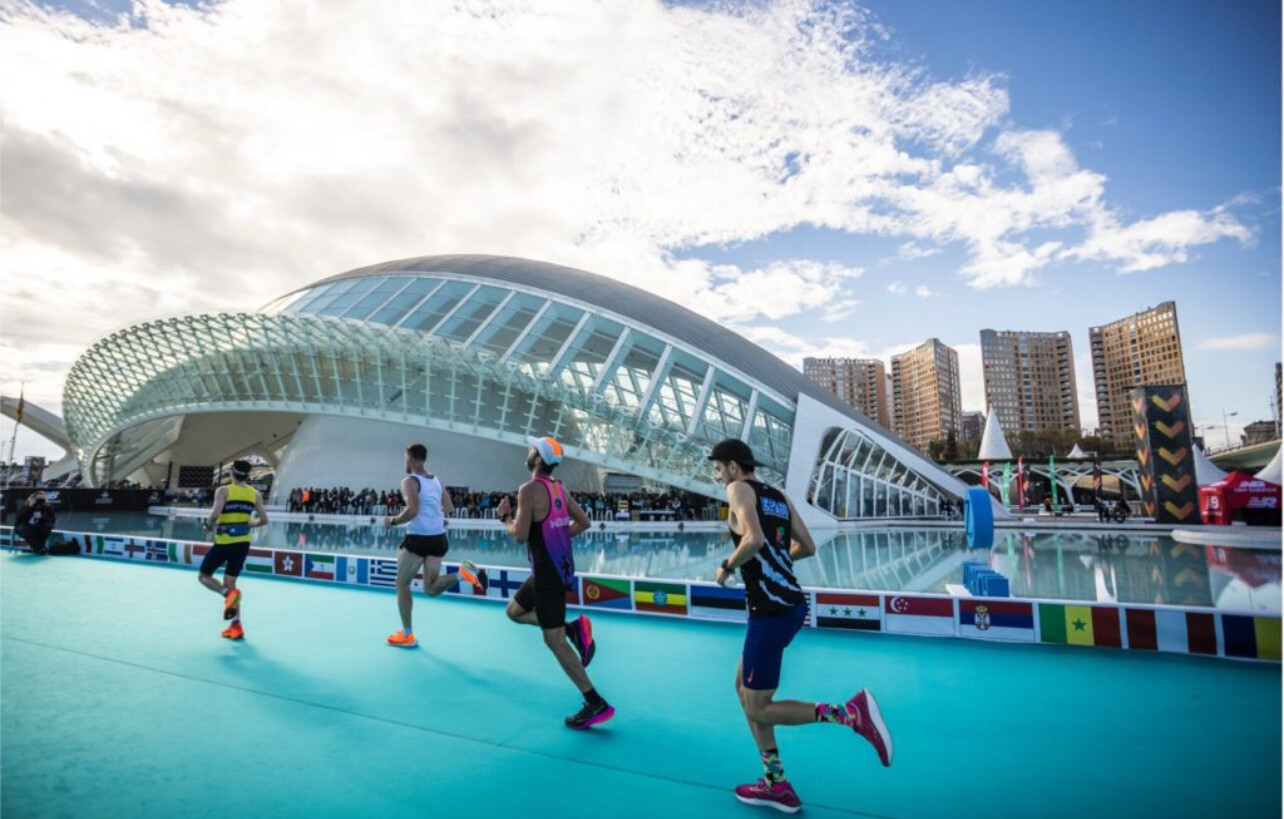
Major marathons like Berlin, Chicago, New York City, and Valencia are stacked with elite fields, deeper than we’ve seen in years. Berlin, known as the flattest and fastest, has quietly become a go-to course for record-chasers. Rumors are already swirling about a possible sub-2:00 marathon attempt under officially ratified conditions.

Valencia, with its blazing-fast course and near-perfect weather, is also primed for records—not just among elites but also among age-groupers and masters. If you’re looking to break your personal best, this fall might offer the best shot in years.

Rising Stars to Watch
Several names are emerging from training camps in Kenya and Ethiopia, and young runners from the U.S., Japan, and Europe are closing the gap quickly.
Cynthia Kiprotich (KEN), just 22 years old, finished 4th in Tokyo earlier this year and is targeting Chicago as her major breakthrough. Her stride and pacing discipline are reminiscent of a young Brigid Kosgei.
Eli Navarro (ESP) has quietly put together a string of 1:01 half marathons and recently clocked 27:45 for 10K on the roads. He’ll toe the line in Valencia with serious sub-2:05 intentions.
Katie Hensley (USA), a former NCAA standout, just won the Grandma’s Half in 1:08:30 and will debut in Berlin. Her aggressive style and fearless racing could make headlines.
Training to Peak This Fall
We spoke with Jimmy Muindi, 2:05 marathoner and head coach at KATA Portugal, about what it takes to time your peak for October or November.
“You’ve got to build strength now, not speed. July and August are about grinding, getting strong through hills and longer tempos,” Muindi advises. “In September, you sharpen. That’s how the Kenyans do it. We build the engine, then polish it.”
For those training through the heat of summer, Jimmy suggests early morning runs, easy doubles, and one hard workout per week to keep fitness progressing without overheating.
Age-Groupers on the Rise
It’s not just the elites aiming big this fall. Many age-group runners are setting ambitious goals, inspired by Olympic performances and the ever-growing community of masters athletes breaking new ground.
At My Best Runs, we’re tracking dozens of 40+, 50+, and 60+ runners targeting Berlin, Chicago, and Valencia as their “A” race. We’ve seen 55-year-olds run sub-3:00, 70-year-olds crack 3:30, and 77-year-olds (like myself) still pushing to go sub-53 for the 10K.
If you’re consistent, focused, and smart with your training, there’s no reason your next personal best can’t be set this year.
10 Fastest Fall Courses Left in 2025
1. Berlin Marathon (Germany)
2. Valencia Marathon (Spain)
3. Amsterdam Marathon (Netherlands)
4. Chicago Marathon (USA)
5. Frankfurt Marathon (Germany)
6. Lisbon Half Marathon (Portugal)
7. Toronto Waterfront Marathon (Canada)
8. Istanbul Half Marathon (Turkey)
9. New York City Marathon (USA) – challenging but iconic
10. Monterey Bay Half Marathon (USA) – for the scenery and cool temps
Final Thoughts
Whether you’re chasing a world record or your own best time, the second half of 2025 offers a golden window. With smart training and the right race, you just might run faster than you ever thought possible.
by Boris Baron
Login to leave a comment
Record-Breaking Performances at the 2025 United Airlines NYC Half Marathon
The 2025 United Airlines NYC Half Marathon, held on March 16, witnessed remarkable performances as both men’s and women’s course records were shattered. The event attracted over 28,500 participants, marking it as the largest half marathon in New York Road Runners’ history.
Men’s Race Highlights

Kenya’s Abel Kipchumba defended his title with a stellar performance, setting a new event record of 59:09. He broke away from U.S. Olympians Conner Mantz and Hillary Bor in the final miles. Mantz secured second place with a personal best of 59:15—the fastest time by an American in the event’s history—while Bor finished third in 59:55.

Women’s Race Highlights

Sharon Lokedi of Kenya, the 2022 TCS New York City Marathon champion, claimed victory in the women’s division with a new event record of 1:07:04. She surged ahead in the final miles, outpacing U.S. Olympian Fiona O’Keeffe, who finished second in 1:07:46, and British Olympian Calli Hauger-Thackery, who took third in 1:07:49.
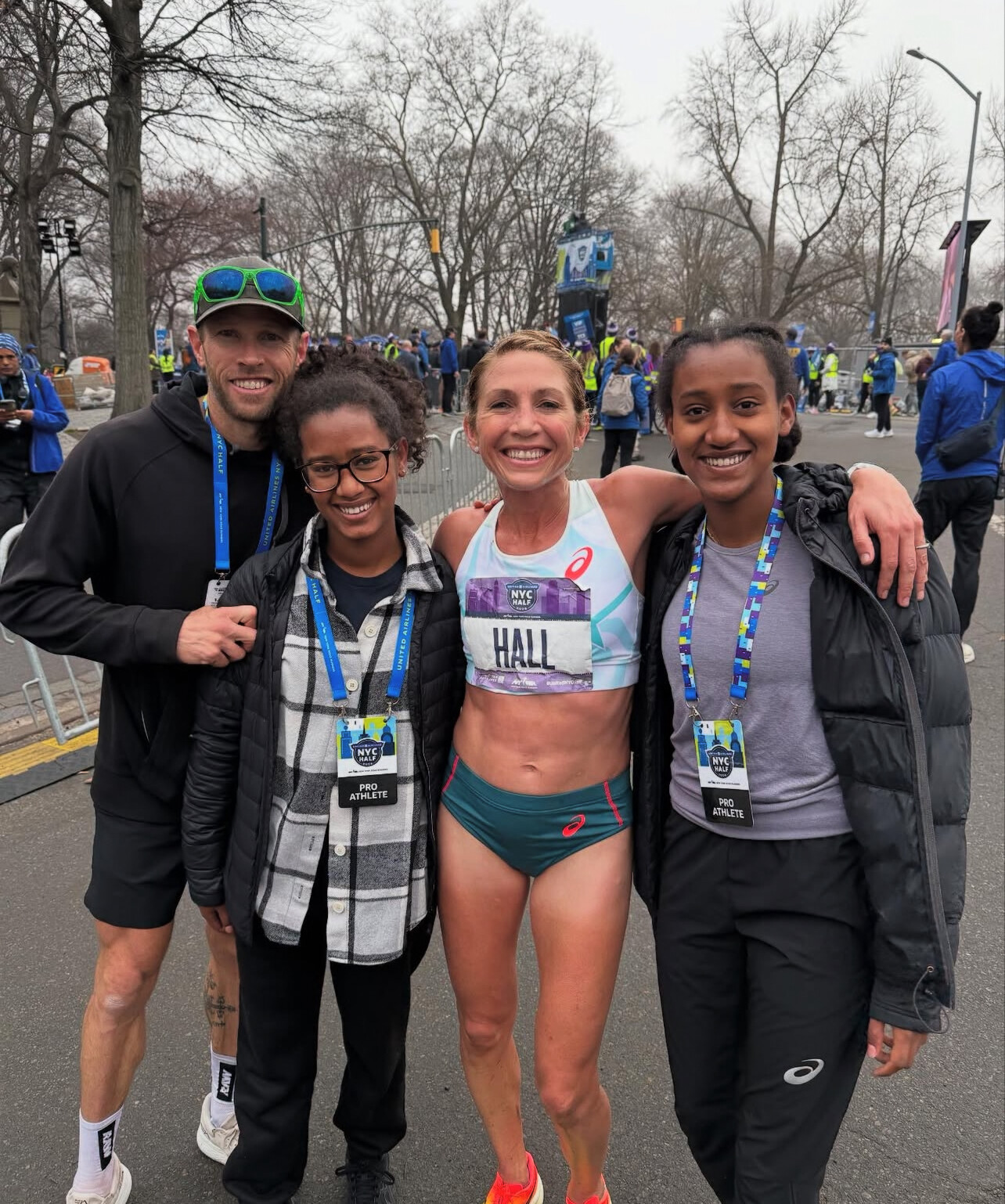
Notable Achievements
• Men’s Top Finishers:
1. Abel Kipchumba (KEN) – 59:09
2. Conner Mantz (USA) – 59:15
3. Hillary Bor (USA) – 59:55
4. Patrick Dever (GBR) – 1:00:19
• Women’s Top Finishers:
1. Sharon Lokedi (KEN) – 1:07:04
2. Fiona O’Keeffe (USA) – 1:07:46
3. Calli Hauger-Thackery (GBR) – 1:07:49
4. Diane van Es (NED) – 1:08:03
This year’s race featured a new course that crossed the Brooklyn Bridge for the first time in NYRR history, symbolizing the event’s evolution and the city’s resilience. The record-breaking performances and increased participation underscore the growing prominence of the NYC Half Marathon on the global running calendar.
by Boris Baron b
Login to leave a comment
United Airlines NYC Half-Marathon
The United Airlines NYC Half takes runners from around the city and the globe on a 13.1-mile tour of NYC. Led by a talent-packed roster of American and international elites, runners will stop traffic in the Big Apple this March! Runners will begin their journey on Prospect Park’s Center Drive before taking the race onto Brooklyn’s streets. For the third...
more...The Magical Feeling of Running in Central Park, NYC
New York City is a place of hustle and movement, where the streets are alive with energy, and the skyline is iconic. But tucked within the towering buildings and endless motion lies a runner’s paradise—Central Park. For those who have had the privilege of running here, the experience is nothing short of magical.
Whether you’re an early-morning jogger, a seasoned marathoner, or someone visiting the city with running shoes packed, Central Park offers an unforgettable running experience that blends nature, history, and the sheer excitement of running in the heart of the most famous city in the world.

A Runner’s Sanctuary in the Heart of NYC

Central Park spans 843 acres in the middle of Manhattan, creating a green oasis amid the urban sprawl. With its rolling hills, shaded pathways, and scenic lake views, it’s the perfect place for runners seeking a retreat from the city’s concrete and congestion.

The park provides a welcoming and diverse running environment—a place where runners of all backgrounds and abilities come together. On any given day, you’ll see world-class athletes training for the New York City Marathon, casual runners enjoying a peaceful jog, and tourists soaking in the beauty of one of the most legendary parks on the planet.

Bob Anderson, the founder of Runner’s World and My Best Runs, has run many miles in Central Park, and it just seemed like the perfect location to marry his wife, Catherine. On New Year’s Eve 2016, they exchanged vows in a treehouse in the park, celebrating their love for each other and for this special place.

Why Running in Central Park Feels So Special

1. The Perfect Blend of Nature and City

One of the most unique aspects of running in Central Park is the ability to feel completely immersed in nature while still being surrounded by the city skyline. As you glide past tree-lined paths and shimmering ponds, you’ll catch glimpses of the skyscrapers rising above, reminding you that you’re in the heart of one of the most vibrant cities in the world.
Running in Central Park at sunrise is an experience like no other—watching the first rays of light peek through the trees and reflect off the buildings, turning the entire city golden. In the fall, the park transforms into a kaleidoscope of autumn colors, while spring brings blooming cherry blossoms and fresh greenery.
2. Iconic Running Routes
Central Park offers several legendary running routes, each with its own charm:
• The Full Loop (6.1 miles / 9.8 km) – A complete circuit of the park, featuring rolling hills, open views, and famous landmarks.
• The Reservoir Loop (1.58 miles / 2.54 km) – One of the most famous running paths in the world, circling the Jacqueline Kennedy Onassis Reservoir with a stunning skyline backdrop.
• The Lower Loop (1.7 miles / 2.7 km) – A flatter, shorter route perfect for an easy jog or speed workouts.
• The Bridle Path (4.2 miles / 6.8 km total) – A softer dirt trail, ideal for runners who want to reduce impact on their joints.
One of the most well-known sights along the running route is The Lake, which was prominently featured in the classic thriller Marathon Man (1976), starring Dustin Hoffman. While the movie is not about running, Hoffman’s character, Thomas “Babe” Levy, is frequently shown running in Central Park, using it as an outlet for stress and survival. For runners who love cinema, retracing Hoffman’s steps adds an extra layer of history to an already iconic location.
3. The Statue Honoring a Running Legend: Fred Lebow
As you run through Central Park, you’ll pass the Fred Lebow statue, a tribute to the founder of the New York City Marathon. Lebow was instrumental in turning the NYC Marathon into one of the world’s most famous races. The statue, located near the marathon’s finish line, serves as an inspiring reminder of his contributions to the sport.
Many runners stop to touch the statue or take a moment of reflection before completing their final strides—whether it’s during a training run or on race day.
4. A Shared Energy Like No Other
The atmosphere in Central Park is unlike anywhere else. It’s a place where runners from all over the world come to test their limits, find their rhythm, and be part of something bigger.
The community of runners in Central Park is welcoming and diverse. You’ll pass runners speaking different languages, elite marathoners training for their next big race, and even a few familiar faces from the professional running world. On race weekends, the energy is electric, as groups gather to cheer, pace, and celebrate the sport of running.
There’s an unspoken bond among Central Park runners—a shared understanding that this is a place where you come to feel alive.
Running Through History: The Legacy of Central Park
Beyond its beauty and convenience, Central Park has an incredible running history. It has been the training ground for some of the greatest runners in history, from legendary marathoners to track stars preparing for the Olympics.
The park plays a pivotal role in the TCS New York City Marathon, with the final miles winding through its paths before runners cross the finish line near Tavern on the Green. The sense of accomplishment felt when finishing a race in Central Park is something runners cherish forever.
Even if you’re not racing, running here allows you to be a part of that history—to step where champions have run, to push yourself the way so many others have before.
The Best Times to Run in Central Park
• Early Morning (5:30 AM - 8:00 AM): The most peaceful time to run, with fewer crowds and a stunning sunrise over the city.
• Late Afternoon (4:00 PM - 7:00 PM): The golden hour of running, when the sun sets behind the skyline, creating a surreal backdrop.
• Night Runs: Running Central Park at night offers a different kind of magic, with the city lights creating a glowing contrast against the trees.
No matter when you run, Central Park feels alive, providing motivation with every step.
Tips for First-Time Runners in Central Park
• Stick to the right. The running and biking lanes are clearly marked—stay on the right to avoid collisions.
• Hydration stations are available. Water fountains are scattered throughout the park, but in hot months, bring your own bottle.
• Be prepared for hills. While some sections are flat, parts of the park (like Harlem Hill) will test your strength.
• Enjoy the experience. Whether you’re running for speed, endurance, or simply for fun, Central Park is a place to embrace the joy of running.
Why Every Runner Should Experience Central Park
Running in Central Park is more than just a workout—it’s a moment of connection. Connection to nature, to the rhythm of the city, and to the countless runners who have made this park their sanctuary.
It’s a place where you can lose yourself in the run while feeling completely present. Where the city’s chaos fades away, replaced by the steady sound of your footsteps on the pavement.
If you ever find yourself in New York City, put on your running shoes and head to Central Park. Whether you go for a quick jog or a long run, you’ll leave feeling inspired, refreshed, and part of something greater than yourself.
Because running in Central Park isn’t just about exercise—it’s about experiencing one of the most iconic and magical places in the world, one step at a time.
Have you ever run in Central Park? Share your experience in the comments!
by Boris Baron
Login to leave a comment
Grete Waitz The Runner Who Changed Marathoning Forever
On a crisp October morning in 1978, an unassuming schoolteacher from Norway stepped up to the starting line of the New York City Marathon. Grete Waitz, a world-class middle-distance runner, had never raced beyond 3,000 meters. That day, she would not only cover 26.2 miles for the first time but also redefine women’s marathoning in a way no one could have predicted.
An Accidental Marathoner

At the time, Waitz was a highly accomplished track athlete, having competed in the 1972 and 1976 Olympics in the 1,500 meters. Her husband and coach, Jack Waitz, believed she had the endurance for the marathon and convinced her to give it a try. The New York City Marathon, then in its third year of running through all five boroughs, was growing in popularity, with nearly 10,000 entrants that year—including 1,240 women, a significant number in an era when women’s distance running was still fighting for recognition.

Waitz arrived in New York with no expectations, mostly treating the experience as an experiment. She was given bib “F1,” but that number did not signify any previous success in the marathon—it was merely assigned based on her status as a female elite athlete.
A Race for the Ages
Unlike today’s marathons, where elite runners typically start separately, in 1978, all competitors—professional, amateur, and first-timers alike—began together. The masses surged forward, and Waitz, running with a mix of excitement and nerves, settled into a steady pace.

She was strong early on, but by mile 18, she was frustrated. She had no idea what she was doing, she later recalled, and even threw a cup of water at her husband in irritation when he shouted encouragement. Yet, despite her doubts, she was running at a record-setting pace.

As she entered Central Park, fatigue set in, but she powered through, breaking the tape in 2 hours, 32 minutes, and 30 seconds—a world record at the time. When race director Fred Lebow greeted her at the finish line, she collapsed into his arms, exhausted and overwhelmed.

“I’ll never do another one of these,” she famously said. That promise, of course, didn’t last.
A Legacy of Dominance
That win in 1978 was just the beginning. Waitz would return to New York eight more times, winning a record nine titles between 1978 and 1988. She became the face of women’s marathoning, inspiring countless runners and proving that women not only belonged in the sport but could dominate it.

Her influence stretched beyond New York. In 1983, she won the first-ever Women’s World Championship Marathon, and a year later, she took silver in the first Women’s Olympic Marathon at the 1984 Los Angeles Games, finishing behind Joan Benoit Samuelson.
More Than a Champion
While her records and wins made her a legend, Waitz’s true impact came from the doors she opened for female distance runners. Before her era, women’s marathoning was an afterthought. The Boston Marathon had only officially allowed women to compete in 1972, and many still believed that running long distances was dangerous for women. Waitz shattered those myths.
She continued to race into her 40s and later devoted much of her time to coaching and philanthropy. In 2005, she was diagnosed with cancer, but she faced it with the same resilience she showed on the race course.
Jack Waitz: Continuing the Legacy
Grete’s husband and coach, Jack Waitz, played an instrumental role in her career, guiding her training and race strategies. Following Grete’s passing in 2011, Jack has remained deeply involved in the running community. He continues to share his expertise, offering training advice and motivational tips to runners of all levels.
Jack’s ongoing commitment ensures that Grete’s legacy endures, inspiring new generations of runners to pursue their passion for the sport.

A Lasting Inspiration
Grete Waitz passed away in 2011 at the age of 57, but her influence is still deeply felt. She was not just a marathoner; she was a trailblazer who proved that women could race—and win—on the biggest stages.
Today, the New York City Marathon regularly features over 50,000 runners, nearly half of them women, a testament to how far the sport has come since 1978. The shoes are faster, the crowds are bigger, and the elites now start separately, but the legacy of Grete Waitz remains woven into the fabric of the event she helped define.
Her first marathon may have been accidental, but her impact on the sport was anything but.
by Boris Baron
Login to leave a comment
Sheila Chepkirui Eyes Another Major Victory at Nagoya Women’s Marathon
Four months after her triumph at the New York City Marathon, Sheila Chepkirui is set to return to the roads, aiming for another major win at the Nagoya Women’s Marathon, a World Athletics Platinum Label event, on Sunday (March 9).
Chepkirui, 34, transitioned from a successful track career to the marathon in 2022, debuting with an impressive 2:17:29 in Valencia. Since then, she has delivered a series of strong performances, including sub-2:20 finishes in London and Berlin. However, her biggest achievement came last November when she claimed victory in New York, clocking 2:24:35 and outpacing global champions Hellen Obiri and Vivian Cheruiyot.
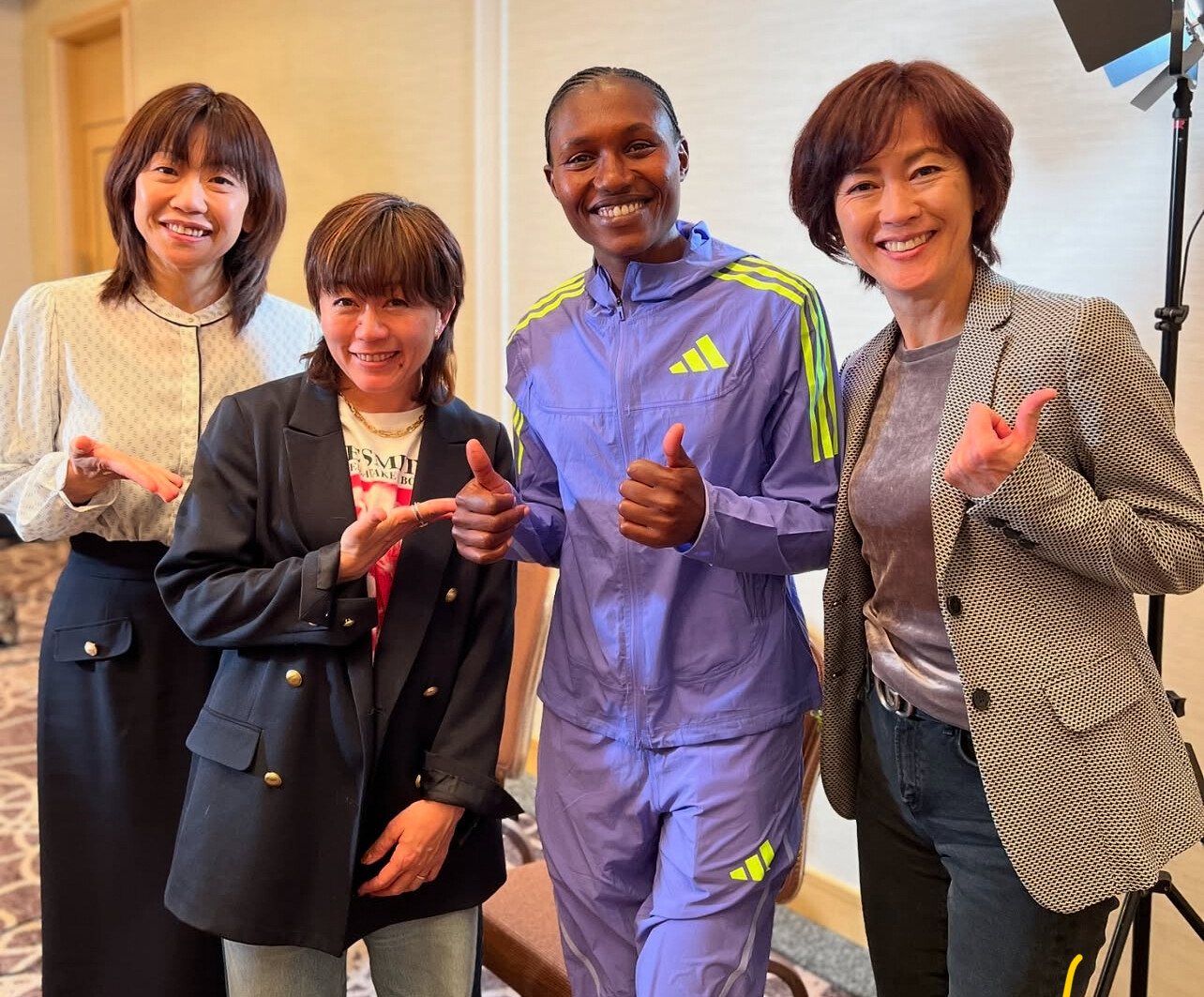
As the fastest entrant in the Nagoya field, Chepkirui stands as the race favorite, but she will face stiff competition. Ethiopian Ruti Aga, a seasoned marathoner with seven World Marathon Major podium finishes, comes into the race fresh off a 2:18:46 victory in Xiamen this past January. A past winner in Tokyo, Aga is well-versed in racing in Japan and will be looking to add another major title to her resume.
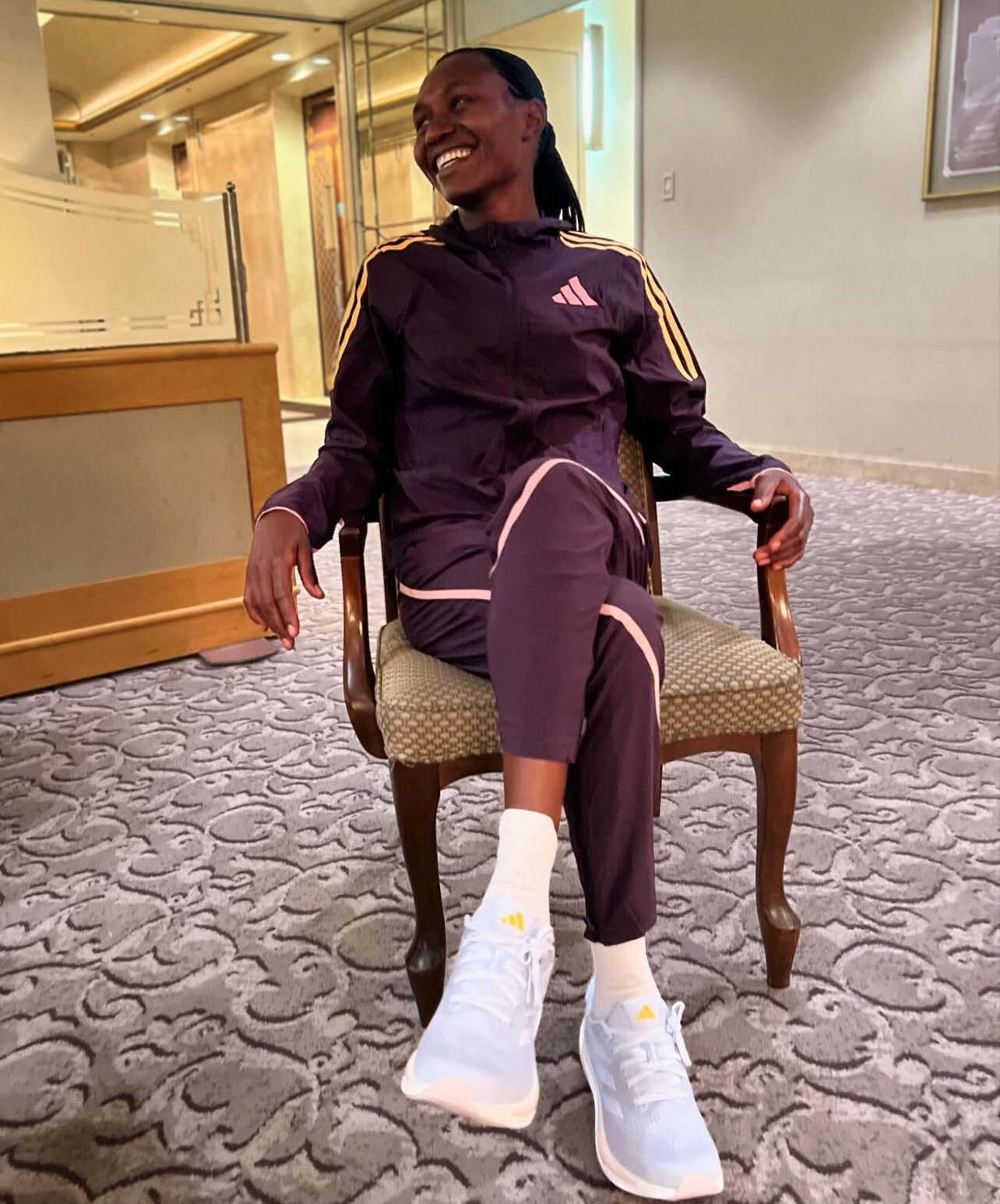
Also in contention is Bahrain’s Asian Games champion, Eunice Chumba. The 31-year-old finished second in Nagoya last year and took fourth in New York, proving her ability to compete at the highest level. With a personal best of 2:20:02, she will be eager to secure another podium finish.

For Japanese athletes, the stakes are even higher. Sunday’s race marks the final opportunity to qualify for the national team for the World Athletics Championships Tokyo 2025, guaranteeing an intense battle among domestic contenders.

One of Japan’s top entrants, Hitomi Niiya, makes her return to the Nagoya course 16 years after her debut in 2009, when she finished eighth. The 37-year-old took a break from marathons before making a comeback in 2022. Since then, she has set national records in the 10,000m and half marathon and lowered her marathon PB to 2:19:24 in Houston last year.
Another strong contender, Rika Kaseda, represented Japan at the 2023 World Championships and will be determined to earn her spot on the national team again. Meanwhile, Rino Goshima, who competed in the 10,000m at the Paris 2024 Olympics, will be making her much-anticipated marathon debut.
With approximately 20,000 runners expected, the Nagoya Women’s Marathon remains the world’s largest all-women’s marathon, providing a grand stage for both elite and amateur athletes. As Chepkirui seeks another career-defining victory, she will have to overcome a field of hungry challengers, ensuring an exciting battle on the streets of Nagoya.
Login to leave a comment
Nagoya Women's Marathon
The Nagoya Women's Marathon named Nagoya International Women's Marathon until the 2010 race, is an annual marathon race for female runners over the classic distance of 42 km and 195 metres, held in Nagoya, Japan in early March every year. It holds IAAF Gold Label road race status. It began in 1980 as an annual 20-kilometre road race held in...
more...Discovering the True Passion of The Fashion Jogger a 3:02 marathoner
While browsing online, I stumbled upon the profile of Lisa Migliorini, popularly known as The Fashion Jogger. Initially, I assumed she was a casual jogger with a flair for marketing, given her stylish posts and engaging content. However, as I delved deeper, I discovered a dedicated athlete with impressive running credentials and an unwavering passion for the sport.
Lisa hails from the province of Novara in Piedmont, Italy. Born in 1994, she is currently 31 years old. Her commitment to running is evident in her personal best times:
Lisa's personal best times: 10 km – 37 minutes and 20 seconds - Half Marathon – 1 hour, 23 minutes, and 7 seconds - Marathon – 3 hours, 2 minutes, and 13 seconds

Lisa has now completed two marathons, marking significant progress in her long-distance running career. Her first marathon was the New York City Marathon, which she finished in 3 hours, 19 minutes, and 17 seconds. She then made an impressive leap at the Berlin Marathon, clocking a personal best of 3 hours, 2 minutes, and 13 seconds, improving her time by 17 minutes.
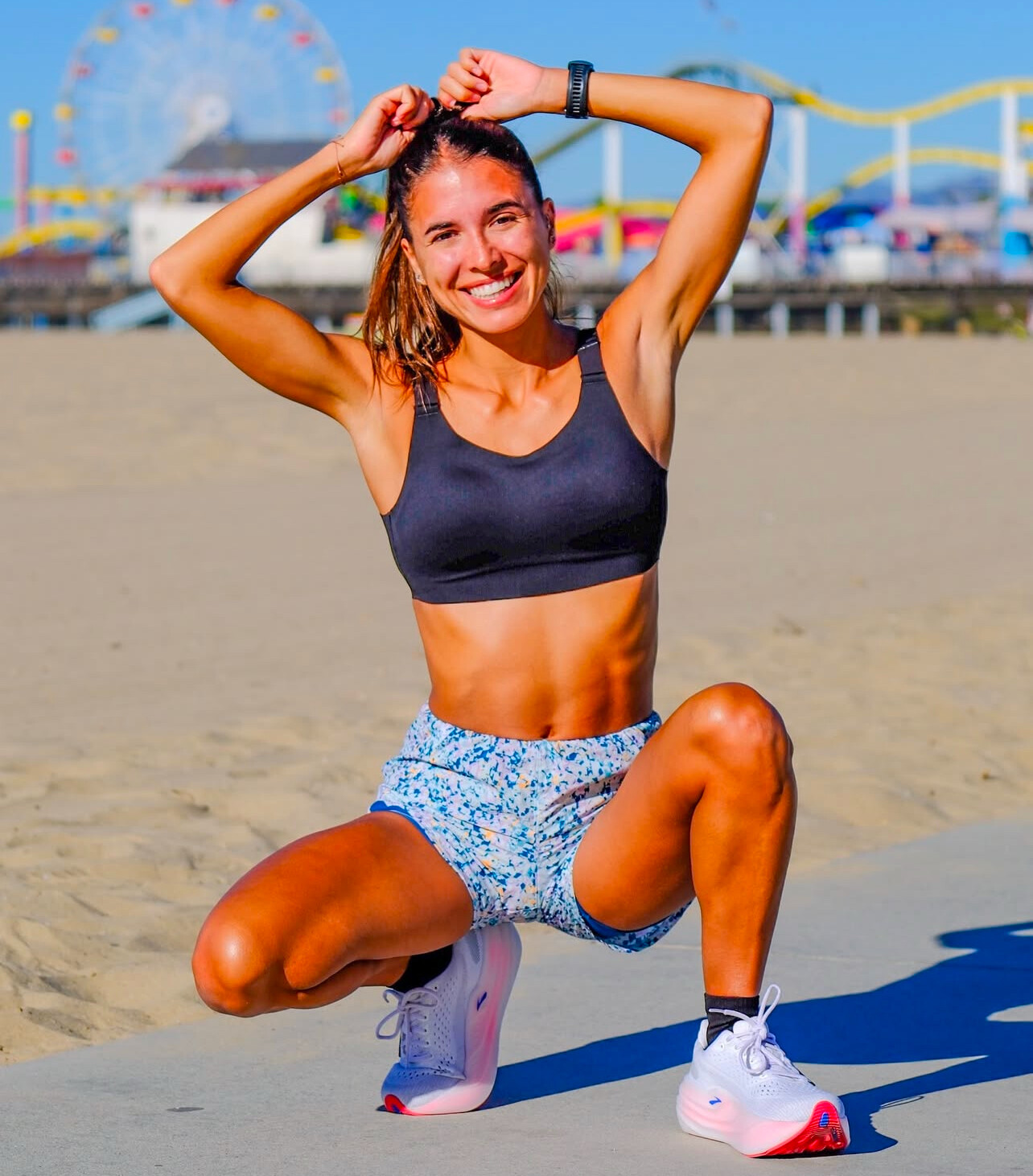
Lisa’s training is both structured and dynamic, reflecting her commitment to excellence. She frequently shares insights into her workouts, emphasizing consistency and discipline.

Her training includes long-distance endurance runs, speed sessions, and strength-building exercises to enhance her overall performance. While she has posted about significant long runs, such as 35 km efforts, specific paces and details remain unverified.
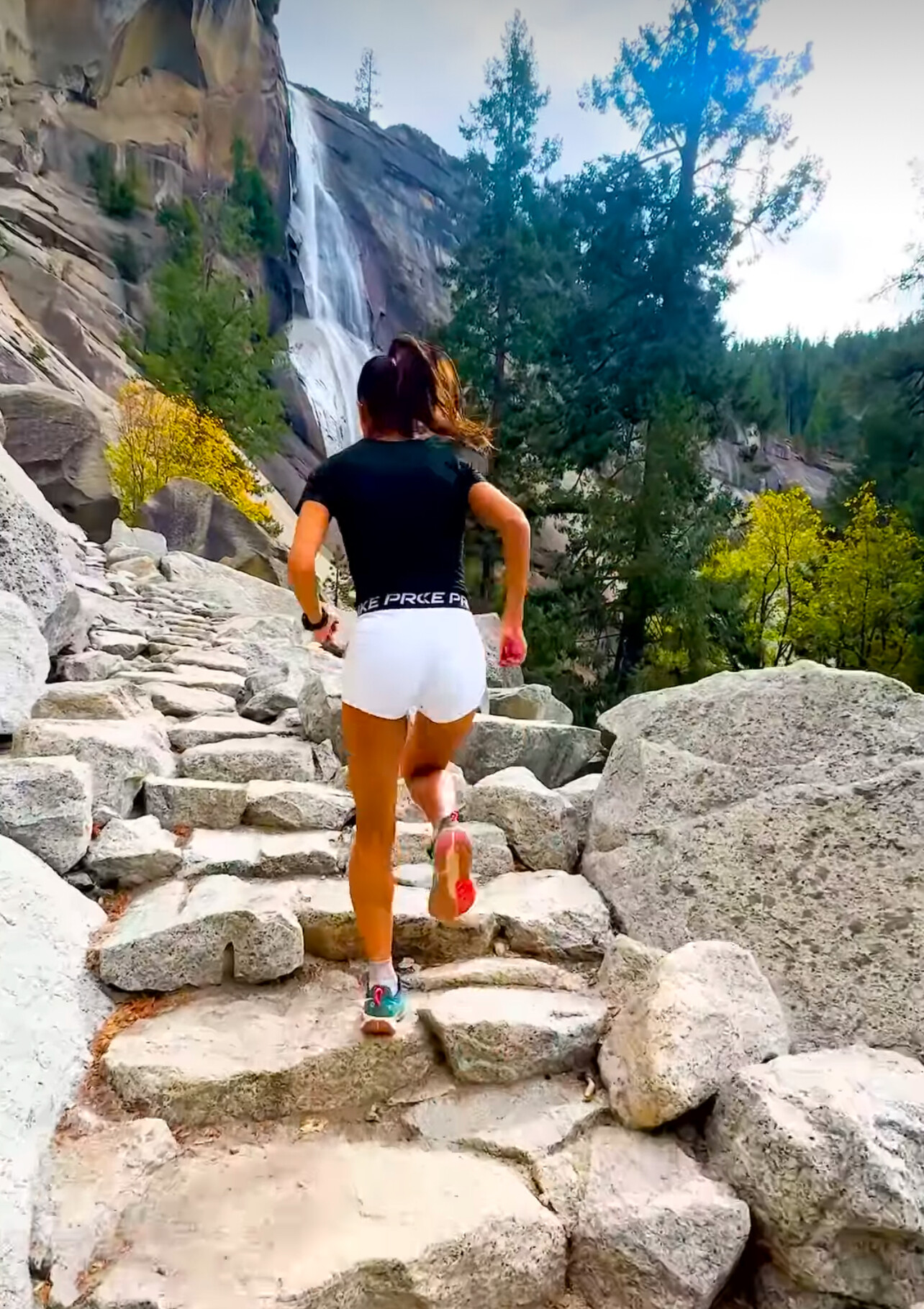
Lisa also incorporates speed workouts into her routine. For instance, she has shared a 15 km training run at a pace of 4 minutes and 13 seconds per kilometer, aiming to improve both speed and endurance.

Lisa has cultivated a substantial following across various platforms:
Instagram – Over 2.1 million followers
TikTok – Over 1.3 million followers and 42 million likes
Facebook – Following numbers are less public but reflect strong engagement
Through her content, Lisa has inspired a large community of runners and fitness enthusiasts, blending fashion with her love for the sport.
Lisa’s marathon journey is just beginning, and with two strong performances under her belt, she is likely to continue pushing for faster times. Beyond her personal athletic goals, she remains committed to sharing her passion for running through social media, encouraging others to adopt an active and healthy lifestyle.
Hard Work, Not Luck The Fashion Jogger’s Mindset
Lisa's success is built on hard work, discipline, and persistence rather than luck.
"In sport, as in life, nothing comes from nothing," she says. "You have to be consistent, make sacrifices, and never give up. That’s how we reach our goals."
Her approach to training and life is simple but powerful: effort over excuses. Whether it’s early morning runs, speed workouts, or long training sessions, she embraces the grind with enthusiasm.
"As long as we love what we do, all of it is worth it," she adds. Passion fuels discipline, and that’s what keeps her going, inspiring millions along the way.
Hard work, not luck.
by Bob Anderson
Login to leave a comment
Geoffrey Kamworor Ready to Kick Off 2025 at the Barcelona Half Marathon
Kenyan long-distance star Geoffrey Kamworor is set to begin his 2025 season at the eDreams Mitja Marató Barcelona on February 16, signaling his readiness with a social media post stating, "Ready for tomorrow @barcelona half marathon."
A three-time World Half Marathon Champion (2014, 2016, 2018), Kamworor remains one of the most dominant figures in road racing. He holds a personal best of 58:01, achieved at the 2019 Copenhagen Half Marathon, a mark that still ranks among the fastest half-marathon times in history.

His last competitive appearance was at the 2024 New York City Marathon, where he finished fifth in 2:08:50. Now, as he returns to the half-marathon distance, fans and analysts alike will be eager to see if he can reclaim his dominance over 13.1 miles.

A Highly Competitive Field
Kamworor won’t have an easy path to victory in Barcelona. The race has assembled a strong elite field, including:
Jacob Kiplimo (Uganda) – The 2020 Olympic 10,000m bronze medalist and 2020 World Half Marathon Champion, one of the fastest half-marathon runners in history.
Roncer Kipkorir Konga (Kenya) – Third-place finisher at the 2024 Barcelona Half Marathon with a personal best of 59:27.
With a course known for its fast times and ideal racing conditions, Barcelona could provide the perfect stage for Kamworor to make a statement early in 2025.
What to Expect from Kamworor
Kamworor’s track record suggests he thrives in high-stakes races, particularly in the half-marathon. If he is in peak form, he has the potential to challenge for the win and possibly push for one of the year’s fastest times.
As he takes to the streets of Barcelona, the running world will be watching closely. Will this be the start of another dominant season for Kamworor? Race day will tell.
Login to leave a comment
Barcelona Half Marathon
The eDreams Mitja Marató de Barcelona by Brooks, also known as the eDreams Barcelona Half Marathon, is an annual half marathon held in Barcelona, Catalonia, Spain. Organized by RPM Sports and ASO, the event is scheduled for February 16, 2025. In 2023, the race attracted 21,477 runners, with 33% of participants coming from abroad, representing 101 nationalities. The half marathon...
more...Running USA Reports 15% Growth in Race Finishers for Second Half of 2024
Running USA has released its final report on the top races in the U.S. for the second half of 2024, revealing a significant surge in participation across all major distances. The number of finishers in the top 100 races—spanning 5K, 10K, half marathon, and marathon distances—grew by an average of 15% compared to the same period in 2023.
A Strong Comeback for Road Racing

The report highlights a thriving road racing scene, with marquee events such as the TCS New York City Marathon and the Bank of America Chicago Marathon setting new records for participation. While these major fall marathons continue to attract massive fields, the growth in finishers was not limited to the biggest races.
“More than ever, runners want to race,” said Jay Holder, Executive Director of Running USA. “From the 5K to the marathon, they have hundreds of world-class races to choose from. Whether runners want to travel or run in their hometown, there are great events happening every weekend in every community in the country.”

What’s Driving the Growth?
Several factors have contributed to this resurgence in race participation:
• Increased accessibility and variety– With more race options available, runners can find an event that suits their schedule, location, and personal goals.
• Strong community engagement– Local events have seen renewed enthusiasm, with runners eager to take part in in-person racing after years of disruptions.
• A growing running culture– The rise of social running groups, personalized coaching, and virtual training platforms has led to a more engaged and motivated running community.
• High-profile races drawing record numbers– Iconic races like the NYC and Chicago Marathons have continued to attract global participation, setting a benchmark for race organization and experience.
Looking Ahead
With momentum building in the second half of 2024, the road racing boom shows no signs of slowing down. Race directors and organizers are already planning for an even bigger 2025, ensuring that runners across the country have access to high-quality events.
Stay tuned to My Best Runs for more insights on the latest race trends, records, and upcoming events!
by Boris Baron
Login to leave a comment
Joyciline Jepkosgei Confirmed for Ras Al Khaimah Half Marathon 2025: A Star-Studded Event on the Horizon
The 18th edition of the Ras Al Khaimah Half Marathon, set for February 1, 2025, on the picturesque Al Marjan Island, promises to uphold its reputation as one of the most prestigious road racing events in the world. The announcement that Joyciline Jepkosgei, one of the finest distance runners of our time, will compete has further heightened anticipation for this world-class race.
The Ras Al Khaimah Half Marathon Legacy

Since its inception in 2007, the Ras Al Khaimah Half Marathon has been a magnet for elite runners, earning its title as a “Who’s Who” of distance running. The inaugural men’s race, won by Sammy Wanjiru, set the stage for the event’s legacy, as Wanjiru went on to claim Olympic marathon gold. The flat, fast course and perfect winter conditions of Ras Al Khaimah continue to attract world-class athletes, making it one of the fastest half marathons globally.
Joyciline Jepkosgei: A Distance Running Icon
Joyciline Jepkosgei’s career is a testament to her exceptional talent, resilience, and determination. Born on December 8, 1993, in Kenya, she was a late bloomer in the sport, only hitting her stride in her twenties. However, once she found her rhythm, Jepkosgei became a dominant force in distance running.
Her breakthrough came in 2017 at the Prague Half Marathon, where she set not one but four world records in a single race. Jepkosgei clocked 30:04 for 10 kilometers, 45:37 for 15 kilometers, 61:25 for 20 kilometers, and an astonishing 64:52 for the half marathon, becoming the first woman in history to break the 65-minute barrier.
Jepkosgei’s achievements didn’t stop there. She transitioned seamlessly to the marathon distance, winning the New York City Marathon in 2019 with a time of 2:22:38, and claiming victory again in 2021 in 2:22:39. Her ability to excel across distances makes her one of the most versatile and respected athletes in the sport.
Anticipation Builds for the 2025 Edition
Jepkosgei’s confirmation adds star power to the 2025 Ras Al Khaimah Half Marathon. The Kenyan runner’s presence not only elevates the race’s competitive level but also draws global attention to the event. With her remarkable speed, endurance, and strategic acumen, Jepkosgei is undoubtedly a favorite to challenge the course record and potentially set new benchmarks.
The Ras Al Khaimah Half Marathon’s course, known for its flat and fast terrain, offers ideal conditions for elite runners aiming to achieve personal bests. Al Marjan Island’s scenic backdrop and the event’s world-class organization further enhance the race’s appeal.
Other Elite Runners to Watch
While Joyciline Jepkosgei is a headline name, the Ras Al Khaimah Half Marathon traditionally attracts a stellar lineup of elite athletes. Past editions have seen record-breaking performances from world champions and Olympic medalists, making the competition fierce and thrilling. Fans can expect announcements of other top-tier participants as the race date approaches, further intensifying the excitement.
A Must-Watch Event
The 2025 Ras Al Khaimah Half Marathon is shaping up to be an unforgettable spectacle, with Joyciline Jepkosgei leading the charge. Her presence, combined with the event’s history of record-breaking performances, ensures a thrilling competition for both participants and spectators.
As the countdown begins, the running world eagerly anticipates another chapter in the storied legacy of this iconic race. With Jepkosgei in the mix, the Ras Al Khaimah Half Marathon reaffirms its status as a premier event in the global athletics calendar.
by Boris Baron
Login to leave a comment
Rak Half Marathon
The Rak Al Khaimah Half Marathon is the 'world's fastest half marathon' because if you take the top 10 fastest times recorded in RAK for men (and the same for women) and find the average (for each) and then do the same with the top ten fastest recorded times across all races (you can reference the IAAF for this), the...
more...More about Conner Mantz: From Utah Prodigy to American Record Holder
Conner Mantz's journey from a young running enthusiast in Utah to an American record holder is a testament to his unwavering dedication and exceptional talent. Born on December 8, 1996, in Logan, Utah, Mantz's early passion for running set the stage for a remarkable career in long-distance running.
Mantz's affinity for running became evident at a young age. At just 12, he completed his first half marathon, igniting a fervor for the sport. By 14, he impressively finished a half marathon in 1:11:24, maintaining an average pace of 5:26.8 minutes per mile. During his time at Sky View High School in Smithfield, Utah, Mantz distinguished himself as a three-time All-American at the Foot Locker Cross Country Championships. His prowess also earned him a spot on Team USA at the 2015 IAAF World Cross Country Championships in Guiyang, China, where he placed 29th in the junior race, leading the team to a commendable sixth-place finish.

Choosing to further his running career and education, Mantz committed to Brigham Young University (BYU), turning down offers from institutions like Princeton and Furman. Before starting at BYU, he took a two-year hiatus to serve as a missionary for the Church of Jesus Christ of Latter-day Saints in Ghana. Upon his return in 2017, Mantz redshirted his first year, laying a solid foundation for his collegiate career. Under the guidance of coach Ed Eyestone, Mantz clinched back-to-back NCAA Division I Cross Country Championships titles in 2020 and 2021, solidifying his reputation as one of the nation's premier collegiate runners.
Transition to Professional Running
Turning professional in December 2021, Mantz signed with Nike and quickly made his mark. He won the USA Half Marathon Championships in Hardeeville, South Carolina, with a time of 1:00:55. The following year, he debuted in the marathon at the 2022 Chicago Marathon, finishing seventh with a time of 2:08:16. This performance was the second-fastest marathon debut by an American, just behind Leonard Korir's 2:07:56.

Olympic Pursuits and Notable Performances
In 2024, Mantz's career reached new heights. He won the U.S. Olympic Marathon Trials, securing his spot at the Paris 2024 Olympics. Despite facing a two-inch tear in his quad during preparations, Mantz showcased resilience, finishing eighth in the Olympic marathon. Post-Olympics, he continued to impress, placing sixth at the 2024 New York City Marathon.
Breaking the American Half Marathon Record
On January 19, 2025, at the Houston Half Marathon, Mantz etched his name into the record books. He completed the race in a staggering 59:17, breaking Ryan Hall's 18-year-old American record of 59:43 set in 2007. This achievement not only shattered the long-standing record but also made Mantz the first American in seven years to run a sub-60-minute half marathon.
Looking Ahead
Conner Mantz's trajectory in long-distance running is a blend of early passion, collegiate excellence, and professional triumphs. As he continues to push boundaries and set new standards, the running community eagerly anticipates his future endeavors, confident that Mantz will remain a formidable force on both national and international stages.
by Boris Baron
Login to leave a comment
Hellen Obiri of Kenya will return to the Boston Marathon in April and attempt to win for the third time in a row.
In the race’s history, only four other women (Bobbi Gibb, Sara Mae Berman, Uta Pippig, and Fatuma Roba) have won three times a row, according to race organizers, who released the elite field today. The race is set for April 21.
Last year, Obiri broke the race open by covering the 24th mile in 4:41 and won in 2:22:37, 8 seconds ahead of her countrywoman Sharon Lokedi, who will also return to Boston.
Obiri, 35, trains in Boulder, Colorado, with the On Athletics Club, and she has been on the podium in five of the six marathons she has run. In addition to her two Boston titles, she won the New York City Marathon in 2023, finished second there in 2024, and won the Olympic bronze medal in Paris. (The only blemish on her marathon record was her sixth-place finish at her debut in New York in 2022.)
Obiri and Lokedi will be challenged by Amane Beriso and Yalemzerf Yehualaw of Ethiopia. Beriso has a personal best of 2:14:58 from the Valencia Marathon in 2022. She’s currently the fifth-fastest woman of all time.
Sisay Lemma of Ethiopia, the defending men’s champion, will also return to Boston. Lemma’s 2:01:48 from Valencia in 2023 makes him the fourth-fastest man in history.
Last year in Boston, Lemma got out to a large early lead, and the course record seemed almost certain to fall. But by the Newton hills, Lemma was feeling his hot early pace and slowed considerably. He held on to win in 2:06:17.
His challengers at the 2025 race will include Evans Chebet of Kenya, who has won the race twice (2022 and 2023) and was third in 2024. John Korir of Kenya, who won the 2024 Chicago Marathon in a fast 2:02:44, will also be back to race in Boston. He was fourth last year.
A Strong American Field
Many top Americans are entered into Boston. On the women’s side, they include Keira D’Amato, who briefly held the American record of 2:19:12 in 2022, and Sara Hall, who had a strong race at last fall’s Berlin Marathon, where she ran 2:23:45. She’ll turn 42 the week before the race.
D’Amato told Runner’s World in a text message that she is recovering from the injury in her left foot—stress reactions in her calcaneus and talus—that caused her to drop out of Chicago. “Hoping all the cross training has made me Boston Strong,” she wrote. “I’m building up conservatively to have a killer 2025.”
Olympians Dakotah Popehn and Des Lindenwill run (Linden for the 12th time), as will Emma Bates, the top American at Boston last year, Olympic Marathon Trials fourth-place finisher Jess McClain, and notables Sara Vaughn, Kellyn Taylor, and Lindsay Flanagan.
On the men’s side, Olympians and training partners Conner Mantz and Clayton Young, who finished eighth and ninth at the Games, respectively, will run Boston. They’ll be joined by CJ Albertson, who runs several fast marathons each year (five in 2024, including his PR of 2:08:17 in Chicago) and Zach Panning, who was fifth at the Olympic Marathon Trials.
by Runner’s World
Login to leave a comment
Boston Marathon
Among the nation’s oldest athletic clubs, the B.A.A. was established in 1887, and, in 1896, more than half of the U.S. Olympic Team at the first modern games was composed of B.A.A. club members. The Olympic Games provided the inspiration for the first Boston Marathon, which culminated the B.A.A. Games on April 19, 1897. John J. McDermott emerged from a...
more...Houston chases new American records elite fields include Yehaulaw and Kiptoo
The 2025 road racing year will open with an exciting chase for American records at the Aramco Houston Half Marathon and course records at the Chevron Houston Marathon on Sunday, January 19.
The Houston Marathon Committee announced the professional fields for both races today, featuring returning champions and all-time top performers.
The women’s half marathon field is led by the fifth fastest woman in history, Yalemzerf Yehaulaw of Ethiopia who will race in North America for the first time. Yehaulaw, 25, holds two of the top ten all-time half marathon performances including her personal best of 1:03:51 from Valencia in 2021. In 2024, Yehaulaw set a new personal best time in the marathon, winning the Amsterdam Marathon in 2:16:52, a course record.

“It has always been my ambition to race in the United States and now the opportunity has finally come,” said Yehaulaw, the 2022 TCS London Marathon winner. “Running an early race means I get a chance to focus fully on the half marathon to go for a fast time. I am eager to win.”
The Aramco Houston Half Marathon women’s race also features the follow-up half marathon for the American record holder Weini Kelati. Kelati set the record of 1:06:25 in her debut half marathon here last year. She has not raced the distance since, instead focusing on the 10,000m in which she represented the United States at the 2024 Paris Games.

“I’m really excited to come back to Houston and run my second half marathon,” said Kelati, who finished fourth here in 2024. “Last year was great and I hope this year’s race will be even better. My training has been going well and I know the competition will be very good.”
The women’s professional field features 15 women who have run faster than 1:10 in the half marathon. Other top contenders include last year’s third place finisher Buze Diriba of Ethiopia; the third fastest British half marathoner in history, Jessica Warner-Judd, and fellow Brit and 2024 Olympic marathoner, Calli Hauger-Thackery. Hauger-Thackery won the California International Marathon last month.
The men’s competition will see a rematch of last year’s thrilling Aramco Houston Half Marathon. Wesley Kiptoo of Kenya who has been runner-up here for the past two years will again face off against Jemal Yimer of Ethiopia. Yimer outsprinted Kiptoo in 2024, beating him by just one second.
“I can’t wait to return to Houston to try to defend my 2024 title,” said Yimer, who also won here in 2020. “It’s a special place for me to kick off my 2025 road season.”
The pair will be joined by Tanzania Olympian and former Boston Marathon runner-up Gabriel Gaey who has a personal best of 59:42 from his seventh place finish here in 2020.
The men’s race will also see an attempt to finally topple the American half marathon record of 59:43 set here by Ryan Hall in 2007. Leading the chase on the 18-year-old record will be 2024 Olympic marathoners Conner Mantz and Clayton Young. Mantz and Young, who finished eighth and ninth in Paris, train together in Provo, Utah. In November, they were the top two American finishers in the TCS New York City Marathon with Mantz breaking the American course record. This will be Young’s Houston debut. Mantz last ran here in 2023, finishing in sixth place.
“I want to race the Aramco Houston Half Marathon because there are other fast Americans going for the American Record,” said Mantz, who also set the American record in the 10 mile last October. “The opportunities to race in a field like this, on a fast and record-eligible course are rare.”
Mantz and Young will face competition for a spot in the record books from Diego Estrada, the ninth fastest American in history and 2015 Houston champion who had a career-best performance here last year when he finished fifth in 1:00:49. Joe Klecker, an Olympian in the 10,000m, will look to play a factor in his half marathon debut along with his training partner Morgan Pearson, a two-time Olympic silver medalist in the triathlon with a personal best of 1:01:08. Klecker comes to Houston with family history. His mother Janis Klecker is the 1992 Houston Marathon champion.
The Chevron Houston Marathon features the return of two-time champion Dominic Ondoro of Kenya. Ondoro, who won here in 2017 and 2023, will be part of a field that includes two men who have run under Zouhair Talbi’s course record of 2:06:39 set in 2024: Haimro Alame (Israel, 2:06:04) and Ande Filmon (Eritrea, 2:06:38). The field also includes last year’s third place finisher, Hendrik Pfeiffer of Germany. Pfeiffer led nearly 22 miles of last year’s race and finished with a personal best of 2:07:14.
“Houston was the best marathon race in my career so far. I have great memories of the fast course and the impressive city,” said Pfeiffer, whose wife Esther is in the women’s half marathon elite field. “I have already experienced how it feels to lead the race for more than 35 kilometers and I‘m hungry for more. I will definitely try to chase a fast time again.“
A new winner will be crowned in the Chevron Houston Marathon women’s race. After making her half marathon debut here in 2023, Anna Dibaba will return to Houston to run just the second marathon of her career. The sister of Ethiopian legends Tirunesh, Ejegayehu and Genzebe, Dibaba ran 2:23:56 in her debut in Amsterdam last October.
“As I race in more marathons I am sure that I will understand better what I am capable of,” said Dibaba who placed fourth in the 2023 Aramco Houston Half Marathon. “You have to respect the distance of the marathon and it is not enough to be in shape. You must know how to interpret each race, the various courses and conditions. I am looking forward to seeing what I am now able to do in my next race in Houston."
There are two Ethiopian women who have run faster than Dibaba entered in the race. Tsigie Hailesale who has run 2:22:10 and has marathon victories in Stockholm and Cape Town is the fastest and Sifan Melaku, also a past winner in Stockholm with a 2:23:49 personal best.
American Erika Kemp will line up for only her second career marathon in Houston. Kemp, a two-time U.S. champion will look to build on her experience from the Boston Marathon last spring.
“In 2023 I learned what it was like to be out there competing for over two hours,” said Kemp, who runs for Brooks, the footwear and apparel sponsor of the Houston Marathon Weekend of Events. “I’m hoping to utilize the course karma I’ve built up in Houston to have a great marathon.”
“We are excited to see so many top runners kick off their 2025 racing season with us in Houston,” said Wade Morehead, Executive Director of the Houston Marathon Committee. “We are expecting a historic day that will add to this event’s reputation as one of the best races in the world.”
More than USD 190,000 in prize money and bonuses will be awarded to the top finishers of the Chevron Houston Marathon and USD 70,000 plus time bonuses for the top finishers in the Aramco Houston Half Marathon. The races will be broadcast live on ABC13 and feature commentary from Olympic Marathoner and Boston Marathon champion Des Linden.
by AIMS
Login to leave a comment
Chevron Houston Marathon
The Chevron Houston Marathon offers participants a unique running experience in America's fourth largest city. The fast, flat, scenic single-loop course has been ranked as the "fastest winter marathon" and "second fastest marathon overall" by Ultimate Guide To Marathons. Additionally, with more than 200,000 spectators annually, the Chevron Houston Marathon enjoys tremendous crowd support. Established in 1972, the Houston Marathon...
more...The Distance Running Scene in 2024: A Year of Remarkable Achievements
The global distance running scene in 2024 was marked by incredible performances, new records, and innovative approaches to training and competition. From marathons in bustling city streets to ultramarathons through rugged terrains, the year showcased the resilience, determination, and evolution of athletes from all corners of the globe.
The World Marathon Majors—Tokyo, Boston, London, Berlin, Chicago, and New York—continued to be the centerpiece of elite distance running, each event contributing to a year of unprecedented performances and milestones.
Tokyo Marathon witnessed a remarkable performance by Kenya's Ruth Chepngetich, who set a new women's marathon world record with a time of 2:11:24. This achievement sparked discussions about the rapid advancements in women's long-distance running and the influence of technology in the sport.

In the Boston Marathon, Ethiopia's Amane Beriso delivered a dominant performance, winning in 2:18:01. On the men's side, Kenya's Evans Chebet defended his title, highlighting Boston's reputation for tactical racing over sheer speed.
London Marathon saw Ethiopia's Tamirat Tola take the men's crown, besting the field with a strong tactical race. Eliud Kipchoge, despite high expectations, did not claim victory, signaling the growing competitiveness at the top of men’s marathoning. On the women's side, Kenya's Peres Jepchirchir triumphed, adding another major victory to her impressive resume.

The Berlin Marathon in 2024 showcased yet another extraordinary performance on its fast course, though it was Kelvin Kiptum’s world record from the 2023 Chicago Marathon (2:00:35) that remained untouched. In 2024, Berlin hosted strong fields but no records, leaving Kiptum’s achievement as the defining benchmark for men’s marathoning.
The Chicago Marathon was the highlight of the year, where Kenya's Ruth Chepngetich made history by becoming the first woman to run a marathon in under 2:10. She shattered the previous world record by nearly two minutes, finishing in 2:09:56. This groundbreaking achievement redefined the possibilities in women's distance running and underscored the remarkable progress in 2024.
The New York City Marathon showcased the depth of talent in American distance running, with emerging athletes achieving podium finishes and signaling a resurgence on the global stage.
Each marathon in 2024 was marked by extraordinary performances, with athletes pushing the boundaries of human endurance and setting new benchmarks in the sport.
Olympic Preparations: Paris 2024 Looms Large
With the 2024 Summer Olympics in Paris just around the corner, many athletes used the year to fine-tune their preparations. Qualifying events across the globe witnessed fierce competition as runners vied for spots on their national teams.
Countries like Kenya, Ethiopia, Japan, and the United States showcased their depth, with surprising performances by athletes who emerged as dark horses. Japan’s marathon team, bolstered by its rigorous national selection process, entered the Olympic year as a force to be reckoned with, particularly in the men's race.
Ultramarathons: The Rise of the 100-Mile Phenomenon
The ultramarathon scene continued to grow in popularity, with races like the Western States 100, UTMB (Ultra-Trail du Mont-Blanc), and Leadville 100 drawing record participation and attention.
Courtney Dauwalter, already a legend in the sport, extended her dominance with wins at both UTMB and the Western States 100, solidifying her reputation as the GOAT (Greatest of All Time) in ultrarunning.
On the men’s side, Spain’s Kilian Jornet returned to form after an injury-plagued 2023, capturing his fifth UTMB title. His performance was a masterclass in pacing and strategy, showcasing why he remains a fan favorite.
Notably, ultramarathons saw increased participation from younger runners and athletes transitioning from shorter distances. This shift signaled a growing interest in endurance challenges beyond the marathon.
Track and Road Records: Pushing the Limits
The year 2024 witnessed groundbreaking performances on both track and road, with athletes shattering previous records and setting new benchmarks in distance running.
Beatrice Chebet's Dominance: Kenya's Beatrice Chebet had an exceptional year, marked by multiple world records and championship titles.
10,000m World Record: In May, at the Prefontaine Classic, Chebet broke the women's 10,000m world record, becoming the first woman to run the distance in under 29 minutes, finishing in 28:54.14.
Olympic Triumphs: At the Paris Olympics, Chebet secured gold in both the 5,000m and 10,000m events, showcasing her versatility and dominance across distances.
5km World Record: Capping off her stellar year, on December 31, 2024, Chebet set a new women's 5km world record at the Cursa dels Nassos race in Barcelona, finishing in 13:54. This achievement made her the first woman to complete the 5km distance in under 14 minutes, breaking her previous record by 19 seconds.
Faith Kipyegon's Excellence: Kenya's Faith Kipyegon continued her dominance in middle-distance running by breaking the world records in the 1500m and mile events, further cementing her legacy as one of the greatest athletes in history.
Joshua Cheptegei's 10,000m World Record: Uganda's Joshua Cheptegei reclaimed the men's 10,000m world record with a blistering time of 26:09.32, a testament to his relentless pursuit of excellence.
Half Marathon Records: The half marathon saw an explosion of fast times, with Ethiopia’s Yomif Kejelchabreaking the men's world record, running 57:29 in Valencia. The women's record also fell, with Kenya’s Letesenbet Gidey clocking 1:02:35 in Copenhagen.
These achievements highlight the relentless pursuit of excellence by distance runners worldwide, continually pushing the boundaries of human performance.
The Role of Technology and Science
The impact of technology and sports science on distance running cannot be overstated in 2024. Advances in carbon-plated shoes, fueling strategies, and recovery protocols have continued to push the boundaries of human performance.
The debate over the fairness of super shoes reached new heights, with critics arguing that they provide an unfair advantage. However, proponents emphasized that such innovations are part of the natural evolution of sports equipment.
Data analytics and personalized training plans became the norm for elite runners. Wearable technology, including advanced GPS watches and heart rate monitors, allowed athletes and coaches to fine-tune training like never before.
Grassroots Running and Mass Participation
While elite performances stole the headlines, 2024 was also a banner year for grassroots running and mass participation events. After years of pandemic disruptions, global races saw record numbers of recreational runners.
Events like the Great North Run in the UK and the Marine Corps Marathon in the U.S. celebrated inclusivity, with participants from diverse backgrounds and abilities.
The popularity of running as a mental health outlet and community-building activity grew. Initiatives like parkrunand local running clubs played a pivotal role in introducing more people to the sport.
Diversity and Representation
Diversity and representation became central themes in distance running in 2024. Efforts to make the sport more inclusive saw tangible results:
More women and runners from underrepresented communities participated in major events. Notably, the Abbott World Marathon Majors launched a program to support female marathoners from emerging nations.
Trail and ultrarunning communities embraced initiatives to make races more accessible to runners from diverse cultural and economic backgrounds.
Challenges and Controversies
Despite the many successes, 2024 was not without its challenges:
Doping Scandals: A few high-profile doping cases marred the sport, reigniting calls for stricter testing protocols and greater transparency.
Climate Change: Extreme weather conditions impacted several races, including the Boston Marathon, which experienced unusually warm temperatures. Organizers are increasingly focusing on sustainability and adapting to climate-related challenges.
Looking Ahead to 2025
As the year closes, the focus shifts to 2025, which promises to build on the momentum of 2024. Key storylines include:
The quest for a sub-2-hour marathon in a record-eligible race, with Kelvin Kiptum and Eliud Kipchoge at the forefront.
The continued growth of ultrarunning, with new records likely to fall as more athletes take up the challenge.
The evolution of distance running as a global sport, with greater inclusivity and innovation shaping its future.
Conclusion
The distance running scene in 2024 was a celebration of human potential, resilience, and the unyielding pursuit of greatness. From record-breaking marathons to grueling ultramarathons, the year reminded us of the universal appeal of running. As the sport evolves, it continues to inspire millions worldwide, proving that the spirit of running transcends borders, ages, and abilities.
by Boris
Login to leave a comment
'I was thinking about him' - How Eliud Kipchoge fueled Tamirat Tola to Olympic title following late Ethiopian marathon team inclusion
Tamirat Tola on how constantly thinking about Eliud Kipchoge's threat helped him clinch the 2024 Olympic marathon title in Paris following his late inclusion into the Ethiopian team for the games.
Olympic marathon champion Tamirat Tola admits marathoner Eliud Kipchoge was his biggest headache heading into the Paris Olympics and was thinking about him following his late inclusion to the Ethiopian team.
The 2022 world marathon champion had just two weeks to prepare for the Olympics after his late inclusion, thanks to the injury sustained by compatriot Sisay Lema.
Tola, 33, said while he considered other marathoners as worthy opponents, it was Kipchoge he feared the most if his past achievements were anything to go by.

"When I got to Paris, I was thinking about how I could challenge (Eliud) Kipchoge and other athletes. I knew the main contenders. There were lots of talented athletes. But I reminded myself that I had worked hard. And when I got in front in the final kilometres, I knew I could win,” Tola told World Athletics.
Kipchoge is the 2016 and 2020 Olympic marathon champion, and was the world record holder in the marathon from 2018 to 2023, until that record was broken by Kelvin Kiptum at the 2023 Chicago Marathon.
Despite being a late entrant into the Ethiopian team, Tola said he was mentally prepared for the rigorous exercise having trained with his team mates for three months.

“For three months together with Kenenisa Bekele, Sisay Lemma, Deresa Geleta and I prepared for the national team. At that time my coach said, ‘prepare with them, and if you are not needed for Paris then go to do the New York City marathon’. When I heard the news that I was on the team, I was really excited for the following two weeks," Tola observed.
Tola who is the 2023 New York City marathon champion presumed that he had the blessings of Lemma and this too, gave him confidence to put his best foot forward. "For Sisay, it wasn’t an easy decision because it was for our country. We discussed it with him and he said, ‘It won’t be easy for me to run injured in Paris, so you go."
by Evans Ousuru
Login to leave a comment
Colin Farrell Ran the Most Memorable Celebrity Marathon of 2024—but Not the Fastest
See which stars ran 26.2 miles and set PRs this year.
After a dip in participation levels due to the COVID-19 pandemic, marathons are finally seeing an upswing in popularity. This year, you had a better chance of getting into Yale University (5 percent) than having your name selected in the New York City Marathon lottery (4 percent).
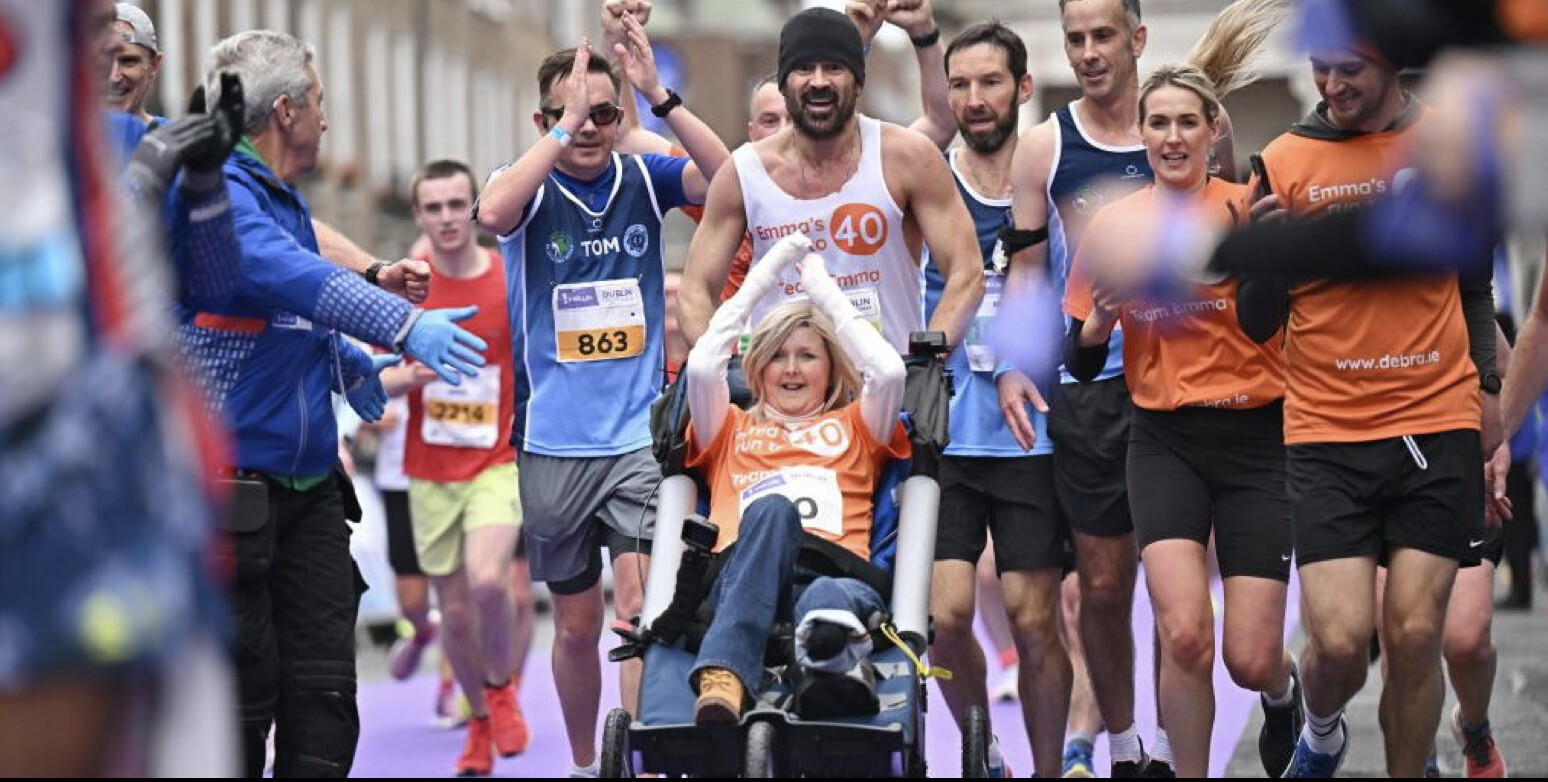

While certain big shots prefer to stick to 5Ks or half marathons—or just like running to blow off some steam, like Kendrick Lamar—we’ve spotted stars in the crowds of some of the world’s largest races. The NYC Marathon, especially, is a popular destination for VIPs, with many celebrities choosing to raise money for charities.
Here are some of the top marathon times—and most inspiring stories—from celebs in 2024.
Colin Farrell, 4:06:45
This wasn’t Farrell’s first marathon—he ran 3:53:14 at the 2021 Brisbane Marathon—but it sure was the most memorable. At October’s Dublin Marathon, the Irish actor finished in 4:06:45. But the time wasn’t important. Farrell, during the last 2.5 miles of the race, pushed his friend, Emma Fogarty, in a wheelchair. Fogarty has epidermolysis bullosa, a rare genetic skin condition, which can cause painful skin blistering. The pair raised nearly $1 million for Debra Ireland, a charity that helps fund research for the disorder.
Jennifer Connelly, 3:45:47
The actress, who won an Academy Award for portraying Alicia Nash in A Beautiful Mind, took on her first marathon on the streets of New York City in November. While she admitted she was nervous before the race, the Top Gun: Maverick alum looked like she had a blast, posing with other celebrity runners and thanking the famously boisterous New York crowd in a post-race Instagram post. She raised money for the cancer research organization Fred’s Team MSK.
Chelsea Clinton, 3:45:51
Just behind Connelly in New York was the former first daughter. Clinton was low-key about running the five boroughs. She didn’t publicly announce her participation; instead, she told the world after the race, posting a photo with her mother, Hillary, who met her at the finish line. Clinton ran with her friend, Jen, in support of the nonprofit Every Mother Counts.
Casey Neistat, 2:57:48
One of the most moving videos of the year was Neistat’s 12-minute documentary, “Sisyphus and the Impossible Dream.” In the video, Neistat, who has grown a massive following on YouTube since joining in 2010, chronicles his quest to break 3:00 in the marathon—ultimately a 17-year journey. He finally achieved his goal in December 2023 at the Tucson Marathon, where he ran 2:57:34. Before this year’s NYC Marathon, Neistat semi-jokingly asked his fans to refrain from waving to save him some precious seconds. It apparently worked; he nearly PR’d, running 2:57:48.
Matt James, 3:00:41
Matt James has worn a lot of hats: Wake Forest football player, Bachelor star, and now chronic marathoner. The 33-year-old is a regular at the World Majors. This year, he nabbed a personal best of 3:00:41 at April’s London Marathon and followed it up with a 3:29:26 at the New York City Marathon. He told Runner’s World his dream marathon partner would be Gordon Ramsay, who owns an impressive 3:30:37 PR himself. “After the marathon, you’re guaranteed a fire meal,” James said.
Phoebe Robinson, 5:53:19
The comedian and writer started running in March 2023 and bookended her 2024 with the Boston Marathon (5:53:19) and NYC Marathon (6:06:52). After Boston, Robinson posted on Instagram a thought that most people have after completing their first 26.2:
“I CAN. F***ING. DO. ANYTHING.”
Nev Schulman, untimed
Like Matt James, Schulman is a regular on the marathon circuit. He owns a PR of 2:58:54 from 2018, but lately, the host of MTV’s Catfish has focused on giving back to the running community.
At Boston in the spring, Schulman was a guide for blind para-athlete Francesco Magisano, who finished in 4:29:43. But in August, Schulman broke his neck after a truck hit him while he was biking. Incredibly, Schulman recovered in time to guide Magisano at the New York City Marathon, where Magisano crossed the finish in 4:02:31. (Since Schulman was a guide, he’s not listed in the official results.)
Login to leave a comment
Racing Super Shoes Will Be Lighter, More Responsive, and Likely Even Faster in 2025
New models from Adidas, Brooks, Hoka, On, Puma, and Saucony highlight a speedy new crop of racing and training super shoesEager to run a new personal best in the marathon in 2025? Or are you itching to crank out a quicker half marathon than you ran in 2024? Or maybe a fast effort in a trail race? The continued evolution of speedy shoe technology will be on your side. With new midsole foams and propulsion plate configurations, top-tier racing shoes will be lighter, more responsive, and presumably faster in 2025.
That goes for both road racing and trail racing super shoes that will be hitting running shops from late winter to early summer.Asics, New Balance, and Under Armour will have lighter and more energetic road racing shoes coming out by late spring, while Nike is expected to release its Ultrafly 2 trail racing super shoe in June. While those models are still under embargo, we’ve got the scoop on several race-day super shoes and high-performance training shoes unveiled at The Running Event trade show in November in the roundup below. We haven’t fully wear-tested these shoes yet, so it’s just a preview of what’s to come. When wear-testing is complete, we’ll produce both first-run reviews and in-depth multi-tester reviews with input from the Outside wear-test team and data from the Outside Gear Lab in Denver.2025 Road Racing Super Shoes


Adidas Adizero Adios Pro 4, $250
Approximate Weights: 6.0 oz. (women’s 8), 7.0 oz. (men’s 9)Heel-Toe Offsets: 6mm drop; 39mm (heel), 33mm (forefoot)Release Date: January
The Adizero Adios Pro 4 was released in limited numbers just before the Berlin Marathon in September, but it will hit stores in mass quantities worldwide in January. It’s been updated with a bouncier Lightstrike Pro midsole, a lighter, stronger stretch-mesh upper with internal locking bands, a new configuration of the Evo Pro EnergyRods, and an aggressive new geometry in which the forefoot rocker point is at 60 percent of the shoe’s length. Several Adidas pros raced in this shoe in the New York City Marathon, including women’s winner Sheila Chepkirui and men’s runner-up Evans Chebet.Brooks Hyperion Elite 4 PB, $250
Approximate Weights: 6.6 oz. (women’s 8), 8.6 oz. (men’s 9)Heel-Toe Offsets: 6.5mm drop; 38.5mm (heel), 32mm (forefoot)Release Date: February
Brooks has been working on enhancing its top-tier road racing shoes for several years. It released the Brooks Hyperion Elite 4 with its DNA Flash v2 midsole compound prior to the 2024 U.S. Olympic Trials Marathon last February, but early in 2025 it will release the Hyperion Elite 4 PB with the brand’s new DNA Gold supercritical midsole foam, a very light and responsive nitrogen-infused 100 percent Peba material, and a very light and airy knit-mesh upper.Brooks Hyperion Elite 5, $275
Approximate Weights: 5.8 oz. (women’s 8), 6.9 oz. (men’s 9)Heel-Toe Offsets: 8mm drop; 40mm (heel), 32mm (forefoot)Release Date: JulyBrooks had hoped to keep the Hyperion Elite 5 under wraps by showing it under embargo at The Running Event trade show, but someone leaked it so it decided to release the details and images of it. It has a DNA GOLD 100 percent PEBA foam midsole with a unique series of half-orb bubble configurations under the arch for optimal compression and decompression. It also has a very light and airy knit-mesh upper and minimal outsole rubber to keep it as light as possible.Craft Kype Pro, $300
Approximate Weights: 5.8 oz. (women’s 8), 6.9 oz. (men’s 9)Heel-Toe Offsets: 8mm drop; 40mm (heel), 32mm (forefoot)Release Date: March
Craft says the unique heel split design of its new Kype PRO racing shoe significantly reduces the contact surface area between the shoe and the ground, allowing for quicker toe-offs and a more efficient stride pattern. The skeleton-like carbon-fiber propulsion plate (developed in collaboration with Arris) embedded in the midsole of its Peba-based Xx midsole foam weighs less than half of an ounce and has a split heel design and enhanced stiffness The ultra-light AeroMesh knit upper is made from a durable mono yarn knit that offers support, pliability, and breathability, while the bottom of the shoe features a thin, lightweight rubber outsole was developed with Italian bicycle tire manufacturer Vittoria.Hoka Cielo X 1 2.0, $275
Approximate Weights: 7.0 oz. (women’s 8), 8.1 oz. (men’s 9)Heel-toe offset: 10mm; 48mm (heel), 41mm (forefoot)Expected launch: February
Login to leave a comment
The Average Marathon Time Has Gotten Faster—but the Average 5K Has Slowed Down, Study Says
Researchers analyzed 8.4 million race finishes over the past decade. How do you stack up?
With elite runners smashing marathon world records left and right—14 of the 20 fastest women’s marathon times in history have been run since the beginning of 2023—you might wonder: Are everyday runners getting faster, too?

You would think so, given that the Boston Marathon recently adjusted its qualifying standards to be quicker, but not so fast, warns Jay Holder, the executive director of Running USA.
The nonprofit industry organization crunched 8.4 million finish times between 2013 and 2023 to discover that runners at shorter distances are trending slightly slower while marathon runners are indeed getting faster.
“[Most runners] aren’t, however, getting as dramatically faster as the stats above might lead you to believe,” said Holder in a news release. “And while marathons are getting faster, it might surprise you to know that other distances are getting marginally slower by between two and three minutes.”
Here’s how each distance shakes out:
Marathon: Holding steady (or faster)
Marathons were the standout, with the average male finish time dropping from 4:18 to 4:17 and females holding steady at 4:43. Notably, young runners (ages 18–24) showed the most improvement, shaving 15 minutes (male) and 18 minutes (female) off their times. Older female runners also made significant gains, with those 75 and older finishing 35 minutes faster on average compared to a decade ago.
Not surprisingly, the report notes that exclusive races like Boston saw faster average finish times than the New York City Marathon, where New York Road Runners has made concerted efforts to keep the race’s finish line open later.
Half marathon: A minor slowdown
By comparison, half marathon finish times crept upward. Men added two minutes (to 2:05) to their finish times. In contrast, women slowed by four minutes to 2:24. Despite
Login to leave a comment
World out-of-stadium athlete of the year Tamirat Tola’s 2024 – in numbers
Tamirat Tola earned Ethiopia’s only gold medal at the Paris 2024 Olympics with an extraordinary performance in the men’s marathon.
On a uniquely testing course, and in gruelling conditions, he won gold in an Olympic record of 2:06:26 – a performance that was all the more remarkable for the fact that he had only been called into the team with two weeks’ notice as a replacement for his injured compatriot Sisay Lemma.
The 33-year-old, who earned Olympic bronze over 10,000m in 2016, thus added a second global marathon title to his collection after his victory at the 2022 World Athletics Championships.

Tola’s 2024 in numbers
With the hills, and the heat, it was tough enough to run on the Paris marathon course. But you set an Olympic record of 2:06:26. How did you manage this feat?

“It was a very difficult course in Paris. But the only thought in my mind was that I could not lose. Our country had won no gold medals on the track, and the marathon races were the last chance for us, so I needed to make the most of my talent.”
Many athletes found the steep hills and long descents of the Paris course the toughest they had faced, particularly around the 28km mark. Where did it hurt most for you?
“It was hardest from 27 to 30 kilometres, with the steep hill and the long drop. I wasn’t thinking about the time, but when I finished I had the Olympic record, which was another reason to be proud.
“My coach had told me that this was a very difficult course, so when I arrived in Paris I thought about how I could run my best on this course. I used this challenge as motivation, and thankfully I overcame it.
“In athletics, challenges are part of the sport. And we always have to do the best for our country.”
This was your second global marathon title following your success at the 2022 World Championships. How did the two victories compare?
“In 2022 it was not easy, all the champions were also there. In the past I had been concentrating on the 10,000m, which led to the Olympic bronze medal in 2016. After that I won the marathon silver at the 2017 World Championships in London.
“I improved my talent in 2022 to win the gold medal. I was happy at that time because after a long injury I was able to win for my country.
“In 2023 I lost that title because of a problem with my stomach. But that made it all the more amazing to fulfil my goals at the Olympics in Paris.”
You had just two weeks to prepare after being told you were running in the Olympic marathon following the withdrawal of Sisay Lemma, after which you stepped up as the third Ethiopian entrant alongside Deresa Geleta and Kenenisa Bekele. How did you manage this challenge?
“For three months together with Kenenisa, Lemma, Deresa and I prepared for the national team. At that time my coach said, ‘prepare with them, and if you are not needed for Paris then go to do the New York City marathon’.
“When I heard the news that I was on the team, I was really excited for the following two weeks. But for Sisay, it wasn’t an easy decision because it was for our country. We discussed it with him and he said, ‘It won’t be easy for me to run injured in Paris, so you go’.
“When I got to Paris, I was thinking about how I could challenge (Eliud) Kipchoge and other athletes. I knew the main contenders. There were lots of talented athletes.
“But I reminded myself that I had worked hard. And when I got in front in the final kilometres, I knew I could win.”
In Paris you became the fourth Ethiopian to win the Olympic marathon title after Abebe Bikila in 1960 and 1964, Mamo Wolde in 1968 and Gezahegne Abera in 2000. How proud are you to have done this, and what inspiration did you take from your victorious compatriots?
“I did not expect to win because I knew there were runners there like Eliud Kipchoge, the two-time winner. But once I got ahead, I knew I could do it.
“For a long time after Gezahegne, for 24 years, we were without an Ethiopian win in the men’s marathon at the Olympics. I was happy to attain this goal in a Games record and to join the other Olympic champions.
“It was Ethiopia’s only gold medal in Paris – I was able to provide happiness for our country.”
by Mike Rowbottom for World Athletics
Login to leave a comment
This 60-year-old masters runner is pushing the pace at marathon majors
Yan (Mary) Ma, a 60-year-old marathoner from Coquitlam, B.C., is pursuing her third Abbott World Marathon Majors Six-Star finisher medal in 2025.
If you’ve run any of the Abbott World Marathon Majors over the past five years, chances are you’ve crossed paths with the 60-year-old masters marathoner Yan (Mary) Ma of Coquitlam, B.C. She is a two-time Six-Star finisher, having run each of the marathon majors twice. In 2025, she will be chasing her third Six-Star finisher medal, looking to run all six marathon majors in one year.

Ma came to our attention over the fall when she finished near the top of her age category at both the 2024 Chicago Marathon and New York City Marathon, less than four weeks apart. These two top-10 finishes in the women’s 60-64 age category at majors capped off an incredible fall season for Ma, during which she ran four marathons on three continents in seven weeks.
Like us, you might wonder how she has time to travel the world and run marathons. Ma works part-time as an accountant for a firm that gives her the flexibility to arrange her work schedule around travel and races.

When Ma immigrated to Canada from China in 2009, she wasn’t sure how she would fit in. Her knowledge of English was sparse, but she eventually found her calling in a hiking group in her new home of Coquitlam. This led her to fall in love with distance running.
“I’ve always liked to run long distance,” Ma says. “I started running in university, then I had a long hiatus. I started running again in 2018, when my friend introduced me to someone at Vancouver’s LaPower Club.”
She says rediscovering running later in life has been transformative, keeping her feeling young and allowing her to build a strong network of friends.
Ma’s club boasts more than 800 members from across the Greater Vancouver area, and most of the people she runs with are around her age (and are also from China). Ma says the club has runners participating in each major marathon, which has enticed her to undertake this incredible challenge.
“I started my Six-Star journey by running Boston and New York City in the fall of 2021,” Ma says. “I thought I was done there, then my good friend convinced me to run Berlin with her. Since I was halfway there, I wanted my Six-Star medal. Now, we are at a second Six-Star.”
Ma doesn’t plan on slowing down. She is registered for the 2025 Tokyo Marathon, Boston Marathon and London Marathon in the spring. She’s also pursuing the new Nine-Star medal, which will include the three new marathon major candidates: Sydney, Cape Town and Shanghai. “I already completed Sydney this September, and plan to run the other two new races in 2026 and 2027,” she says.
As she begins to take on new races, Ma says New York City is the marathon major that keeps her coming back. “It’s my favourite by far. It’s easy to get to from Vancouver, and one I look forward to every year.”
by Marley Dickinson
Login to leave a comment
Tokyo Marathon
The Tokyo Marathon is a world-renowned annual marathon held in Tokyo, Japan. As one of the prestigious Abbott World Marathon Majors, it attracts elite and amateur runners from around the globe. The race holds World Athletics Platinum Label status, recognizing its high competitive standards, top-tier organization, and international appeal. Sponsored by Tokyo Metro, the Tokyo Marathon has grown into one...
more...California International Marathon is this weekend and defending champion CJ Albertson and Calli Hauger-Thackery headline the elite field
The 41st annual California International Marathon is this Sunday, Dec. 8 bringing some 10,000 runners and spectators to Folsom and the Sacramento region. Along with the many participants comes a number of road closures the day of the event.
The marathon begins at the intersection of Folsom Auburn Road and Folsom Lake Crossing at 7 a.m.The course continues through Orangevale, Citrus Heights, Fair Oaks, Carmichael, and Sacramento, and concludes at the State Capitol. Road closures include Folsom-Auburn Road from Folsom Dam Road to Greenback Lane, Folsom Lake Crossing Road from East Natoma Street to Folsom-Auburn Road, and Oak Avenue Parkway from Folsom-Auburn Road to Santa Juanita Avenue. Closures begin at 3 a.m. and roads are planned to reopen at 10 a.m. Detours will be clearly marked.
The CIM was founded in 1983 by the Sacramento Running Association, a 501(c)(3) nonprofit organization. The event brings an estimated 10 million dollar to the Sacramento County economy each year.The event is certified and sanctioned by USATF and is a Boston Marathon and U.S. Olympic Trials Marathon qualifier. Learn more at runsra.org. For a complete listing of road closures, schedules, and courses, visit the CIM website or see a summary at the conclusion of this article.

With good weather in the forecast, participants and organizers are excited about this year’s event and according to the Sacramento Running Association the event will feature 2024 Paris Olympian Calli Hauger-Thackery and defending 2023 CIM champion CJ Albertson, alongside a mix of returning veterans and first-time participants, setting the stage for potentially record-breaking performances.
The elite men’s and women’s fields will compete for a combined $100,000 prize purse, with additional bonuses for breaking course records. The current records stand at 2:10:27 for men, set in 1993 by Jerry Lawson, and 2:26:02 for women, set in 2022 by Paige (Stoner) Wood.

Hauger-Thackery, representing Great Britain at the 2024 Paris Olympics, holds the fastest personal best in the women’s field—2:21:24, achieved at the 2024 Berlin Marathon earlier this fall. She will make her CIM debut, joining her husband, 2:12 marathoner Nick Hauger, who is also competing.
“I’m excited to do this race for many reasons,” Hauger-Thackery said. “The main one being that my husband has had only fond experiences here over the past two years. I’m also excited because my dad raced CIM in the ’90s, and California is my favorite place! CIM has been on my radar for quite some time now.”
Hauger-Thackery will face stiff competition from four other women who have run sub-2:30 marathons: Laura Thweatt of Superior, Colo., with a personal best of 2:25:38; Jackie Gaughan of Boston, 2:27:08; Stephanie Bruce of Flagstaff, Ariz., 2:27:47; and Allie Kieffer of Austin, 2:28:12, who was the 2023 CIM runner-up.
Bruce returns to CIM with a strong record, having placed second in both the 2016 (2:32:36) and 2018 (2:29:21) editions. Since then, she has achieved milestones such as running her personal best of 2:27:47 at the 2019 Chicago Marathon and placing sixth at the 2020 U.S. Marathon Olympic Trials.
“Returning to CIM feels like an awesome homecoming because it was the first marathon I ran postpartum with my two boys in 2016,” Bruce said. “Now, eight years later, I’m coming back after giving birth to my third baby. I love the city, the energy, and the people who make this race so special.”
The men’s field includes three notable returners: defending champion CJ Albertson (Fresno, Calif.), 2023 runner-up Milton Rotich, and 2019 champion Elisha Barno. Joining them is CIM newcomer Tsegay Tuemay Weldlibanos, a 2:09:07 marathoner currently training in Flagstaff, Ariz., who is expected to push the pace.
“To race at CIM is very special for me,” Weldlibanos said. “Many of my teammates have found success here, and I hope to do the same. I want to make my family, team, and coach proud.”
Albertson has enjoyed a standout year, placing fifth at the 2024 U.S. Olympic Marathon Trials (2:10:07), seventh at the Boston Marathon (2:09:53) and Chicago Marathon (2:08:17), and tenth at the New York City Marathon (2:10:57). Another CIM victory will likely require a course record performance.
Barno, who won the 2019 CIM, has a personal best of 2:09:14. Rotich, last year’s runner-up, boasts a 2:08:55 personal best. Both are strong contenders to challenge Albertson and Weldlibanos for the win and the 2:10:27 course record.
“We’re thrilled about the 2024 elite field at CIM,” said Scott Abbott, executive director of the Sacramento Running Association. “This year has a unique homecoming feel, with so many ‘CIM alumni’ returning. It’s further evidence that CIM is a favorite among elite runners. We expect a strategic race between these battle-tested veterans, and we hope to see both course records fall.”
The Sacramento Running Association, a nonprofit organization, is dedicated to encouraging people of all ages and abilities to run. The SRA focuses on developing quality running events that appeal to a wide range of participants.
by Alan Inderkane
Login to leave a comment
California International Marathon
The California International Marathon (CIM) is a marathon organized by runners, for runners! CIM was founded in 1983 by the Sacramento Running Association (SRA), a 501(c)(3) non-profit organization. The SRA Board of Directors is comprised of runners with a combined total of 150+ years of service to the CIM. The same route SRA management created for the 1983 inaugural CIM...
more...'Women are valued'- Hellen Obiri shares why she prefers staying in the US rather than Kenya
Hellen Obiri is loving it in the US so far as she revealed some of the good things she has experienced that would never have happened to her if she chose to stay in Kenya.
Hellen Obiri has opened up about how her life has changed since she relocated to the US in 2022 with her husband, Tom Nyaundi, and their daughter, Tania.
The two-time Olympic 5000m silver medalist revealed that she has found many opportunities that would never have happened to her if she was still staying in Kenya. Obiri disclosed that in the US, women are valued highly unlike where she grew up, Kenya.
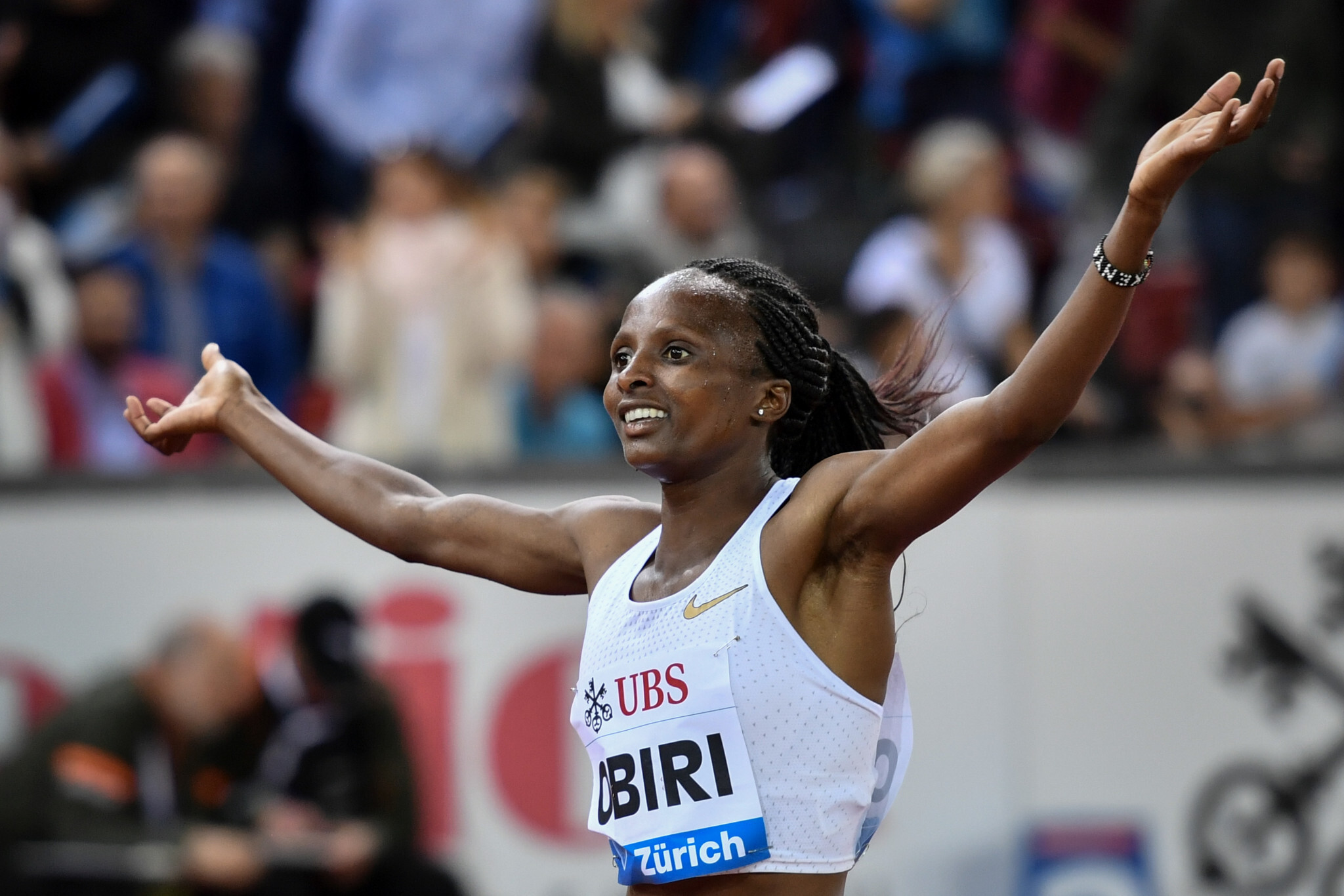
Hellen Obiri lamented that in her village, men are always given a platform but women are advised to stay at home and be humble, a way to protect them but instead, that kills the potential and dreams of many women.
She revealed that relocating has opened her eyes and she now believes that women can do anything and gender does not play any role in what women can do better. She urged women to come through and support each other since that is the only way they are able to grow.

“They say that in life, opportunities knock at your door only once. Had I stayed in Kenya, I could have been in a rural community, even running, but the spotlight is always on men. In the United States, however, women are valued,” Hellen Obiri said as per Foot Boom.
“My mindset expanded greatly while living in the U.S. You feel appreciated and strive to work harder and to grow. Women need to support more women. Today, I feel truly honored.”
She also touched on how signing with On running has been life-changing for her as she looks to make a mark in the world of marathon running. She has been impressive since her debut at the 2022 New York City Marathon where she finished sixth.
Hellen Obiri then proceeded to win the Boston Marathon in 2023 and capped off her season with a win at the New York City Marathon. She opened her 2024 season with a win in the Boston Marathon before claiming the bronze medal in the Olympic marathon. She ended her season with a second-place finish at the New York City Marathon.
“It was shortly after Tokyo. Having the chance to work for a major company is a privilege, a real opportunity for me. I've been wearing running shoes for over ten years, and there’s always a better shoe, a better technology available. How can I help improve these shoes? I ran those marathons as if I were wearing spikes on the track,” Hellen Obiri said.
“It’s incredible because I trust On and believe in the brand's shoes. I won two times in Boston and once in New York, and the Olympic marathon medal while wearing the On Cloudboom Echo. It’s amazing, it’s comfortable and doesn’t cause injuries or discomfort.”
by Abigael Wafula
Login to leave a comment
Lelisa Desisa, 2019 world marathon champion, returns for 2025 Dubai Marathon
The 34-year-old won global gold in Doha five years ago plus Boston and New York City marathon titles.
Former world marathon champion Lelisa Desisa will return to the scene of one of his most memorable victories when he joins the elite field of world-class athletes at the 24th Dubai Marathon on Sunday January 12.
In 2013, the Ethiopian set a personal best of 2:04:45 when winning the Dubai Marathon, producing a performance that announced his arrival on the world stage and set him on a path that would lead to two wins in the Boston Marathon, victory in the 2018 New York Marathon and a gold at the World Championship in 2019.

Staged under the auspices of the Dubai Sports Council, the Dubai Marathon will see the 34-year-old return to competitive competition after a few years devoted to business and family matters.
Following his World Championship win in Doha in October 2019, Desisa found his international running opportunities curtailed by the global pandemic and with an eye on his post-running future focused his efforts on starting a business in Ethiopia.

With his affairs now sorted and two young children recently welcomed to the Desisa family, the three-time big city marathon champion is back in full-time training having confirmed the Dubai Marathon for his running return.
“Lelisa’s victory in 2013 saw one of the most memorable finishes in the history of the Dubai Marathon so we are happy to welcome him back to the event,” said Race Director Peter Connerton.
“Eleven years ago, Lelisa won in a sprint finish that saw the top five all finish in under 2:05 – the first time that had happened in marathon history. It’s a testament to the flat and fast route we have in Dubai that Lelisa wants to continue his comeback in the UAE on January 12.”
Prior to the pandemic, Desisa was one of the hottest properties in long distance running – eight top three big city marathon finishes, including those three victories, in six years established him at the top of the sport – and his return to international competition will be eagerly anticipated.
Desisa, who also won the Ras Al Khaimah Half Marathon in 2014, will join a field of world-class elite athletes for the 24th staging of the Middle East’s fastest international marathon and will be joined by thousands of runners competing in the three-race event. Registration for the marathon, the 10km road race and the 4km fun run can made online only at dubaimarathon.org.
by Athletics Weekly
Login to leave a comment
Dubai Marathon
In its relatively brief history (the race was first held in 2000), the Dubai Marathon has become one of the fastest, most respected and the most lucrative marathon in the world in terms of prize money. Each year thousands of runners take to the roads in this beautiful city in the United Arab Emirates (UAE) for this extraordinary race starting...
more...Sabastian Sawe ready to debut at Valencia Marathon after insightful lessons from mentors
Sabastian Sawe is bubbling with confidence ahead of his marathon debut in Valencia on Sunday as he gears up for a race against legends Sisay Lemma and Kenenisa Bekele.
Sabastian Sawe will be making his full marathon on Sunday at the Valencia Marathon and he expects to have a great outing, racing against a stacked field.
His greatest opposition will come from the Ethiopian duo of Sisay Lemma and Kenenisa Bekele but he is confident in his training and has fingers crossed to post impressive results.

Sabastian Sawe’s previous outings in Valencia have not yielded great results as he was forced to finish outside the podium bracket and as he takes on a greater milestone, he hopes for great results.
The world half marathon champion competed at the 2022 Valencia Half Marathon where he finished sixth before heading to finish fifth at the 2023 edition of the race. He revealed that he will be competing with his mentors in the field and that gives him a lot of optimism that he will run a great race.

“Thank you for inviting me and thank you to the race organizers. My condolences to the tragedy that has happened in Valencia. This time, I hope for good results, I have trained well and I’m well prepared for it,” Sabastian Sawe said in a pre-race press conference.
“I’m eager to run with mentors like Sisay Lemma and Kenenisa Bekele who are strong opponents and I hope they help me to run well and I hope to get good results. It will be my first time running the full marathon and I don’t want to predict any fast times but I’m ready.”
He trains with the likes of Olympic marathon bronze medallist Benson Kipruto and the 2022 New York City marathon champion Evans Kipruto under coach Claudio Berardelli and there is a lot he has picked from them as he prepares for the debut.
He promised to execute everything learnt from his training mates who are also accomplished marathon runners.
“My training mates have encouraged me a lot because they are also my mentors and they have taught me a lot. I’m ready, on Sunday to use everything they have taught me,” he shared.
by Abigael Wafula
Login to leave a comment
VALENCIA TRINIDAD ALFONSO
The Trinidad Alfonso EDP Valencia Marathon is held annually in the historic city of Valencia which, with its entirely flat circuit and perfect November temperature, averaging between 12-17 degrees, represents the ideal setting for hosting such a long-distance sporting challenge. This, coupled with the most incomparable of settings, makes the Valencia Marathon, Valencia, one of the most important events in...
more...Keys to Achieving an Incredible Marathon Finish in Less Than 4 Hours
There is one achievement that everyone who takes part in running events can agree is the bar everyone looks to hit; completing it in under four hours.
There is a lot of preparation that goes into averaging 9:09 for 26.2 miles and it is not an easy feat. Full commitment is needed as it will take a lot, both physically and mentally, to get your body into a position to achieve that lofty goal.
People who have completed half-marathons should be aware that things don’t always translate the same to full marathons. Greg Laraia, a running coach in New York City at Motiv, says it is “a little bit more tricky.”
“You have to rely on nutrition, strength, your mental capacity, and a million other factors that running entails before you can say, ‘hey, I'm just going to go out and run the half marathon in two hours, and then do it again,’” said the coach.

Over at Runners World, Caitlin Carlson revealed what coaches and running professionals recommend to help break the 4-hour mark while running a marathon. For starters, it takes some self-reflection.
Going back and looking at previous races to see where you may have fallen short is key to reaching that next level. Is the necessary work, such as speed and strength training or mobility and recovery work, being put in?

If there are pieces missing, those are easy low hanging fruits where you can add those things in and you should notice a big difference,” Laraia says.
During preparation, it is imperative to put your body through different levels of effort. Sometimes while training, people will get stuck in a rut of wanting to challenge themselves a little bit when it comes to pacing, but not too much.
This is where professionals separate themselves from amateurs and casual runners. They have a distinct plan every week, knowing that mixing in easier days with tougher ones will get your body where it needs to be.
“I was in my early 20s for the first two and I really didn’t know what I was doing training and fueling-wise, thus, both races went terribly with horrible zonks at miles 18 to 20,” said Marie Gundersen Ishpujani, who broke the 4-hour mark at the 2011 New York City Marathon in her third attempt.
It is a good way for a person to learn just how much their body is capable of. The same can be achieved by pushing beyond 20 miles in training leading up to the marathon.
How can you complete a sub-4 hour marathon if you aren’t training those distances? But, this is where having a coach helps because novices to the sport could actually hurt themselves if they are not preparing correctly.
“If you’ve done three or four marathons and you’re trying to get this sub-four-hour marathon, your body’s probably pretty strong and pretty physically able to handle the 22 and 24 miles,” said Jimmy Anderson, who is 51 years old with 27 marathons under his belt; 25 of which he broke the 4-hour mark in.
Last but certainly not least, recovery needs to be optimized. There are many different things people can do to ensure their body gets back to as close to 100 percent healthy as possible and is ready to perform on marathon day.
Cold plunges are enjoyed by some, while foam rolling and stretching are incorporated by others.
by Kenneth Teape
Login to leave a comment
U.S. Olympian Jenny Simpson completes 7 marathons in 7 days
Two weeks after finishing 18th at the New York City Marathon in 2:31:54, U.S. Olympian Jenny Simpson tackled one of the most gruelling challenges: the Great World Race, which involves running seven marathons on seven continents in seven days.
The decorated middle-distance runner was a late addition to the event that offered a fitting end to her storied career. Over her career on the track, Simpson won four medals at major championships, including an Olympic bronze in the 1,500m at Rio 2016 and a gold medal at the 2011 World Championships in Daegu, South Korea.

The Great World Race kicked off on Nov. 14 at Wolf’s Fang, Antarctica and concluded on Nov. 20 in Miami. Simpson completed the challenge with the following times:
Antarctica: 3:31

South Africa: 3:15
Australia: 3:12
Turkey: 3:11
Istanbul (overlap leg): 3:15
Colombia: 3:16
Miami: 5:15
Simpson finished fourth in the women’s competition. The week-long-race was won by Ashley Paulson, a two-time Badwater 135 champion, while the men’s race went to David Kilgore after Ireland’s William Maunsell withdrew on the fifth day–four days after he set a continental marathon record on Antarctica.
Reflecting on her last-minute decision to join, Simpson said the invitation was an irresistible opportunity to challenge herself one last time. Initially, it was announced the New York City Marathon would be her final race, but the chance to “run around the world” was too much to pass up for Simpson.
“I have never in my life been so happy to see a finish line,” Simpson wrote on Instagram. “Seven marathons in seven days, plus around the world in one week! My body is surprisingly resilient and I’m so glad I did it.”
Participation in the jet-setting event doesn’t come cheap—the USD $52,000 entry fee covers charter flights, in-flight meals and emergency evacuation coverage for the Antarctica leg. Despite the cost and the gruelling schedule, the event is a bucket-list challenge for many hardcore marathoners.
by Marley Dickinson
Login to leave a comment
Cape Town Marathon primed to become Africa’s first Abbott World Marathon Major
The Sanlam Cape Town Marathon has recently made significant strides in its journey to join the international Abbott World Marathon Majors (AbbottWMM) series after the 2024 edition met the criteria set out by the AbbottWMM team.
Cape Town will now proceed to the second stage of the candidacy process in its attempt to join the series when it stages its next marathon on October 19, 2025. If it is successful, the race would join the Majors in 2026. This follows the recent addition of the TCS Sydney Marathon, which was announced as the seventh Abbott World Marathon Major event and will take place as a Major on August 31, 2025.
Current AbbottWMM events are: Tokyo Marathon, Boston Marathon, TCS London Marathon, BMW-Berlin Marathon, Bank of America Chicago Marathon, TCS New York City Marathon and most recently the TCS Sydney Marathon.

“Cape Town has continued its impressive progress since joining the candidacy process, and we are thrilled that it has now met all of our criteria for the first time,” said AbbottWMM CEO, Dawna Stone.
“We know how much the city, the country and the whole continent want the race to become Africa’s first Major, and they have taken a great step in the right direction.”
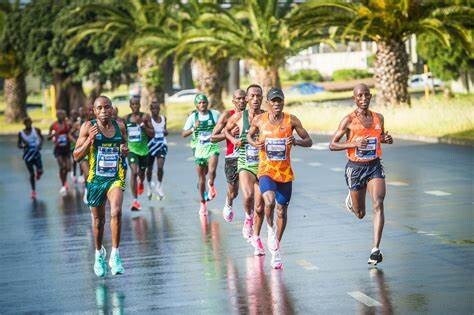
Behind the scenes, Infront’s partnership with the Sanlam Cape Town Marathon, which got under way in 2021, has helped to support the event’s application.
Hans-Peter Zurbruegg, Senior Vice President Active Lifestyle at Infront, said “Meeting the AbbottWMM criteria in 2024 for the first time reflects a true milestone on the journey to making our vision of the Sanlam Cape Town Marathon becoming part of the AbbottWMM Series as Africa’s first Major a reality.
“Sanlam Cape Town marathon will capture the imaginations of a global running community with its unique African spirit and the unlimited touristic offers that the area of Cape and South Africa as a country has to offer.
“This milestone is the result of the enormous efforts made by the local Cape Town marathon team, and the close partnership with all stakeholders involved that all share the same vision and want to shape the future of running, putting Cape Town as a city and Africa as a continent onto the world map of running.”
The next Sanlam Cape Town Marathon, Africa’s only World Athletics Gold Label marathon, will take place on Sunday, October 19, 2025. As one of the continent’s most prestigious marathons, it offers participants a scenic route through Cape Town’s landmarks, showcasing its scenery and cultural heritage.
In 2024, the Sanlam Cape Town Marathon achieved a milestone by successfully passing stage one of the rigorous Abbott World Marathon Majors (AbbottWMM) evaluation process. It now sets its sights on passing stage 2 in 2025, as it strives to become Africa’s first Major.
The marathon weekend also features a range of events, including the 10km and 5km Peace Runs and the 44km Trail Marathon, 22km Trail, and 11km Trail on Saturday, October 18, 2025. These events cater to runners of all abilities, whether on the road or trail.
The official expo, where participants can collect their race packs and explore various running products, will be held at the DHL Stadium fon October 16-18 October 2025.
With the support of our title sponsor Sanlam, alongside partners such as adidas and the City of Cape Town, the event continues to attract top-tier athletes and running enthusiasts from around the world.
by Gary
Login to leave a comment
Cape Town Marathon
The Sanlam Cape Town Marathon is a City Marathon held in Cape Town, South Africa, which is sponsored by Sanlam, the City of Cape Town and Vital Health Foods. The marathon is held on a fast and flat course, starting and finishing in Green Point, near the Cape Town Stadium. Prior to existing in its current format, the Cape Town...
more...Matt Choi Apologizes for Running with E-Bikes on New York City Marathon Course
The influencer said in a video posted to Instagram, “I have no excuses. Full stop.”Matt Choi, the running influencer who infuriated the running community by bringing two unauthorized e-bikes onto the New York City Marathon course to film him running, has issued an apology.
“I f----- up,” he said in a video posted to Instagram. “I was selfish on Sunday.”Choi made it clear in his video that he understood the consequences of his actions. “We endangered other runners. We impacted people going for PBs. We blocked people from getting water. And with the New York City Marathon being about everyone else and about the community, I made it about myself.” Choi has not responded to a request for comment from Runner’s World.

On November 3, Choi, 29, finished the marathon in 2:57, openly floating race rules with the two vehicles beside him. Runners raised an outcry, and by the evening of November 4, New York Road Runners had disqualified him from the race and banned him from future events.Choi said in his apology video that he will not appeal the organization’s ruling.
The actions are likely to have financial implications for Choi. The COO of Runna, a training program and app that was partnering with Choi, wrote in a statement posted on LetsRun’s message boards, “We have decided to terminate our relationship with Matt effective immediately.”
MORE FROM RUNNER'S WORLD ON APPLE NEWS
Login to leave a comment






